Informationen pro Land mit Flaggen
Oder gehe zu dem Fotogalerie aller Nationalflaggen
(search for country with ctrl F) |
(Source country information: Wikipedia) |
| Flag | Country information |
|---|---|
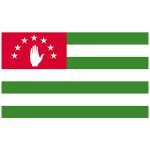
Abkhazia |
Abkhazia, officially the Republic of Abkhazia, is a de facto and partially recognized republic on the eastern coast of the Black Sea, south of the Greater Caucasus mountains, in northwestern Georgia. It covers 8,660 square kilometres and has a population of around 240,000. Its capital is Sukhumi. |
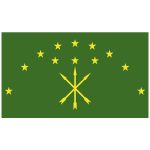
Adygea |
The Republic of Adygea, also known as the Adyghe Republic, is a federal subject of Russia, with its territory enclaved within Krasnodar Krai. Its area is 7,600 square kilometers with a population of 439,996 . Maykop is its capital city.
== Geography == |
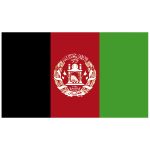
Afghanistan |
Afghanistan, officially the Islamic Republic of Afghanistan, is a landlocked country located within South Asia. Afghanistan is bordered by Pakistan in the south and east; Iran in the west; Turkmenistan, Uzbekistan, and Tajikistan in the north; and in the far northeast, China. Its territory covers 652,000 square kilometers and much of it is covered by the Hindu Kush mountain range, which experience very cold winters. The north consists of fertile plains, whilst the south-west consists of deserts where temperatures can get very hot in summers. Kabul serves as the capital and its largest city. |
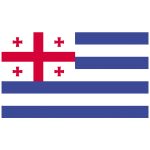
Ajaria |
Adjara, officially known as the Autonomous Republic of Adjara, is a historical, geographic and political-administrative region of Georgia. Located in the country’s southwestern corner, Adjara lies on the coast of the Black Sea near the foot of the Lesser Caucasus Mountains, north of Turkey. It is an important tourist destination and includes Georgia’s second-largest city of Batumi as its capital. About 350,000 people live on its 2,880 km2. Adjara is home to the Adjarians, a regional subgroup of Georgians.Read more |

Aland |
The Åland Islands or Åland is an archipelago province at the entrance to the Gulf of Bothnia in the Baltic Sea belonging to Finland. It is autonomous, demilitarised and is the only monolingually Swedish-speaking region in Finland. It is the smallest region of Finland, constituting 0.49% of its land area and 0.50% of its population. Åland comprises Fasta Åland on which 90% of the population resides and a further 6,500 skerries and islands to its east. Fasta Åland is separated from the coast of Sweden by 38 kilometres of open water to the west.Read more |
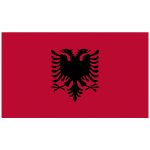
Albania |
Albania, officially the Republic of Albania, is a country in Southeastern Europe on the Adriatic and Ionian Sea within the Mediterranean Sea. It is bounded by Montenegro to the northwest, Kosovo to the northeast, the Republic of Macedonia to the east and Greece to the south and southeast. Geographically, the country displays varied climatic, geological, hydrological and morphological conditions, defined in an area of 28,748 km2 . It possesses remarkable diversity with the landscape ranging from the snow-capped mountains in the Albanian Alps as well as the Korab, Skanderbeg, Pindus and Ceraunian Mountains to the hot and sunny coasts of the Albanian Adriatic and Ionian Sea along the Mediterranean Sea. Historically, different Illyrian, Thracian and Greek tribes have inhabited the country’s territory as well as several Greek colonies established in the Illyrian coast since classical antiquity until the Roman Empire expanded on the Balkans.Read more |
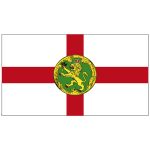
Alderney |
Alderney is the northernmost of the inhabited Channel Islands. It is part of the Bailiwick of Guernsey, a British Crown dependency. It is 3 miles long and 1 1⁄2 miles wide. The area is 3 square miles, making it the third-largest island of the Channel Islands, and the second largest in the Bailiwick. It is around 10 miles from the west of La Hague on the Cotentin Peninsula, Normandy, in France, 20 miles from the north-east of Guernsey and 60 miles from the south coast of Great Britain. |
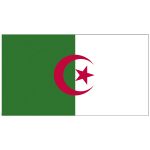
Algeria |
Algeria, officially the People’s Democratic Republic of Algeria, is a country in North Africa on the Mediterranean coast. The capital and most populous city is Algiers, located in the far north of the country. With an area of 2,381,741 square kilometres, Algeria is the tenth-largest country in the world, and the largest in Africa since South Sudan became independent from Sudan in 2011. Algeria is bordered to the northeast by Tunisia, to the east by Libya, to the west by Morocco, to the southwest by the Western Saharan territory, Mauritania, and Mali, to the southeast by Niger, and to the north by the Mediterranean Sea. The country is a semi-presidential republic consisting of 48 provinces and 1,541 communes . |

Altai Republik |
The Altai Republic is a federal subject of Russia . Its capital is the town of Gorno-Altaysk. The area of the republic is 92,600 square kilometers, and its population is 206,168 .
== History == |
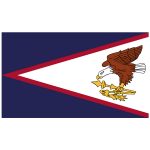
American Samoa |
American Samoa is an unincorporated territory of the United States located in the South Pacific Ocean, southeast of Samoa.American Samoa consists of five main islands and two coral atolls. The largest and most populous island is Tutuila, with the Manuʻa Islands, Rose Atoll, and Swains Island also included in the territory. All islands except for Swains Island are part of the Samoan Islands, located west of the Cook Islands, north of Tonga, and some 300 miles south of Tokelau. To the west are the islands of the Wallis and Futuna group. The current population of American Samoa is approximately 55,689 people.Read more |
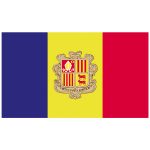
Andorra |
Andorra, officially the Principality of Andorra, also called the Principality of the Valleys of Andorra, is a sovereign landlocked microstate on the Iberian Peninsula, in the eastern Pyrenees, bordered by France in the north and Spain in the south. Believed to have been created by Charlemagne, Andorra was ruled by the Count of Urgell until 988 when it was transferred to the Diocese of Urgell, and the present principality was formed by a charter in 1278. It is known as a principality as it is a diarchy headed by two Co-Princes: the Catholic Bishop of Urgell in Spain and the President of the Republic of France. Andorra is the sixth-smallest nation in Europe, having an area of 468 square kilometres and a population of approximately 77,281. The Andorrans are a Romance ethnic group of originally Catalan descent.Read more |
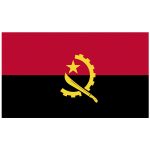
Angola |
Angola, officially the Republic of Angola, is a west-coast country of south-central Africa. It is the seventh-largest country in Africa, bordered by Namibia to the south, the Democratic Republic of the Congo to the north, Zambia to the east, and the Atlantic Ocean to the west. Angola has an exclave province, the province of Cabinda that borders the Republic of the Congo and the Democratic Republic of the Congo. The capital and largest city of Angola is Luanda. Although inhabited since the Paleolithic Era, what is now Angola was molded by Portuguese colonisation.Read more |
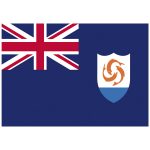
Anguilla |
Anguilla is a British overseas territory in the Caribbean. It is one of the most northerly of the Leeward Islands in the Lesser Antilles, lying east of Puerto Rico and the Virgin Islands and directly north of Saint Martin. The territory consists of the main island of Anguilla, approximately 16 miles long by 3 miles wide at its widest point, together with a number of much smaller islands and cays with no permanent population. The island’s capital is The Valley. The total land area of the territory is 35 square miles, with a population of approximately 14,764 . |
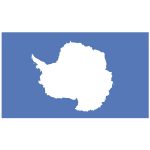
Antarctica |
Antarctica is Earth’s southernmost continent. It contains the geographic South Pole and is situated in the Antarctic region of the Southern Hemisphere, almost entirely south of the Antarctic Circle, and is surrounded by the Southern Ocean. At 14,000,000 square kilometres, it is the fifth-largest continent. For comparison, Antarctica is nearly twice the size of Australia. About 98% of Antarctica is covered by ice that averages 1.9 km in thickness, which extends to all but the northernmost reaches of the Antarctic Peninsula. |
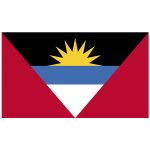
Antigua and Barbuda |
Antigua and Barbuda is a country in the West Indies in the Americas, lying between the Caribbean Sea and the Atlantic Ocean. It consists of two major islands, Antigua and Barbuda, and a number of smaller islands . The permanent population numbers about 81,800 and the capital and largest port and city is St. John’s, on Antigua. |
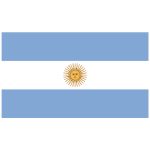
Argentina |
Argentina, officially the Argentine Republic, is a country located mostly in the southern half of South America. Sharing the bulk of the Southern Cone with Chile to the west, the country is also bordered by Bolivia and Paraguay to the north, Brazil to the northeast, Uruguay and the South Atlantic Ocean to the east, and the Drake Passage to the south. With a mainland area of 2,780,400 km2, Argentina is the eighth-largest country in the world, the fourth largest in the Americas, and the largest Spanish-speaking nation. The sovereign state is subdivided into twenty-three provinces and one autonomous city, Buenos Aires, which is the federal capital of the nation as decided by Congress. The provinces and the capital have their own constitutions, but exist under a federal system. |
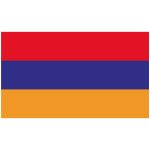
Armenia |
Armenia, officially the Republic of Armenia, is a country in the South Caucasus region of Eurasia. Located in Western Asia on the Armenian Highlands, it is bordered by Turkey to the west, Georgia to the north, the de facto independent Republic of Artsakh and Azerbaijan to the east, and Iran and Azerbaijan’s exclave of Nakhchivan to the south.Armenia is a unitary, multi-party, democratic nation-state with an ancient cultural heritage. Urartu was established in 860 BC and by the 6th century BC it was replaced by the Satrapy of Armenia. |

Aruba |
Aruba is an island and a constituent country of the Kingdom of the Netherlands in the southern Caribbean Sea, located about 1,600 kilometres west of the main part of the Lesser Antilles and 29 kilometres north of the coast of Venezuela. It measures 32 kilometres long from its northwestern to its southeastern end and 10 kilometres across at its widest point. Together with Bonaire and Curaçao, Aruba forms a group referred to as the ABC islands. Collectively, Aruba and the other Dutch islands in the Caribbean are often called the Dutch Caribbean. Aruba is one of the four countries that form the Kingdom of the Netherlands, along with the Netherlands, Curaçao, and Sint Maarten; the citizens of these countries are all Dutch nationals.Read more |
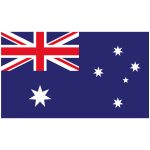
Australia |
Australia, officially the Commonwealth of Australia, is a sovereign country comprising the mainland of the Australian continent, the island of Tasmania and numerous smaller islands. It is the largest country in Oceania and the world’s sixth-largest country by total area. The neighbouring countries are Papua New Guinea, Indonesia and East Timor to the north; the Solomon Islands and Vanuatu to the north-east; and New Zealand to the south-east. The population of 25 million is highly urbanised and heavily concentrated on the eastern seaboard. Australia’s capital is Canberra, and its largest city is Sydney. |
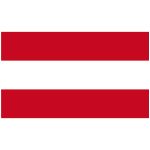
Austria |
Austria, officially the Republic of Austria, is a landlocked country of over 8.8 million people in Central Europe. It is bordered by the Czech Republic and Germany to the north, Hungary and Slovakia to the east, Slovenia and Italy to the south, and Switzerland and Liechtenstein to the west. The territory of Austria covers 83,879 km2 . The terrain is highly mountainous, lying within the Alps; only 32% of the country is below 500 m, and its highest point is 3,798 m . The majority of the population speaks local Bavarian dialects of German as their native language, and German in its standard form is the country’s official language. |
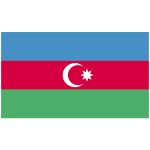
Azerbaijan |
Azerbaijan, officially the Republic of Azerbaijan, is a country in the South Caucasus region of Eurasia at the crossroads of Eastern Europe and Western Asia. It is bounded by the Caspian Sea to the east, Russia to the north, Georgia to the northwest, Armenia to the west and Iran to the south. The exclave of Nakhchivan is bound by Armenia to the north and east, Iran to the south and west, and has an 11 km long border with Turkey in the north west. The Azerbaijan Democratic Republic proclaimed its independence in 1918 and became the first democratic state in the Muslim-oriented world. The country was incorporated into the Soviet Union in 1920 as the Azerbaijan Soviet Socialist Republic.Read more |
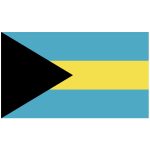
Bahamas |
The Bahamas, known officially as the Commonwealth of The Bahamas, is a country within the Lucayan Archipelago. The archipelagic state consists of more than 700 islands, cays, and islets in the Atlantic Ocean, and is located north of Cuba and Hispaniola, northwest of the Turks and Caicos Islands, southeast of the United States state of Florida, and east of the Florida Keys. The capital is Nassau on the island of New Providence. The designation of „the Bahamas“ can refer either to the country or to the larger island chain that it shares with the Turks and Caicos Islands. The Royal Bahamas Defence Force describes the Bahamas territory as encompassing 470,000 km2 of ocean space. |
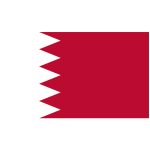
Bahrain |
Bahrain, officially the Kingdom of Bahrain, is an island country in the Persian Gulf. The sovereign state comprises a small archipelago centered around Bahrain Island, situated between the Qatar peninsula and the north eastern coast of Saudi Arabia, to which it is connected by the 25-kilometre King Fahd Causeway. Bahrain’s population is 1,234,571, including 666,172 non-nationals. It is 765.3 square kilometres in size, making it the third-smallest nation in Asia after the Maldives and Singapore.Bahrain is the site of the ancient Dilmun civilisation. |
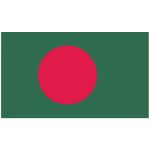
Bangladesh |
Bangladesh, officially the People’s Republic of Bangladesh, is a country in South Asia. It shares land borders with India and Myanmar .The country’s maritime territory in the Bay of Bengal is roughly equal to the size of its land area. Bangladesh is the world’s eighth most populous country. Dhaka is its capital and largest city, followed by Chittagong, which has the country’s largest port. Bangladesh forms the largest and easternmost part of the Bengal region. |
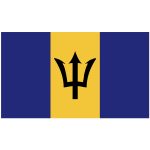
Barbados |
Barbados is an island country in the Lesser Antilles of the West Indies, in the Caribbean region of North America. It is 34 kilometres in length and up to 23 km in width, covering an area of 432 km2 . It is situated in the western area of the North Atlantic and 100 km east of the Windward Islands and the Caribbean Sea; therein, Barbados is east of the Windwards, part of the Lesser Antilles, roughly at 13°N of the equator. It is about 168 km east of both the countries of Saint Lucia and Saint Vincent and the Grenadines and 400 km north-east of Trinidad and Tobago. Barbados is outside the principal Atlantic hurricane belt. |
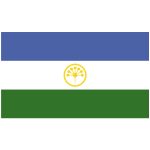
Bashkortostan |
The Republic of Bashkortostan, also historically known as Bashkiria, is a federal subject of Russia . It is located between the Volga River and the Ural Mountains. Its capital is the city of Ufa. |
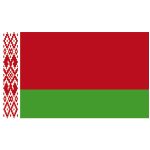
Belarus |
Belarus, officially the Republic of Belarus, formerly known by its Russian name Byelorussia or Belorussia, is a landlocked country in Eastern Europe bordered by Russia to the northeast, Ukraine to the south, Poland to the west, and Lithuania and Latvia to the northwest. Its capital and most populous city is Minsk. Over 40% of its 207,600 square kilometres is forested. Its major economic sectors are service industries and manufacturing. Until the 20th century, different states at various times controlled the lands of modern-day Belarus, including the Principality of Polotsk, the Grand Duchy of Lithuania, the Polish–Lithuanian Commonwealth, and the Russian Empire. |
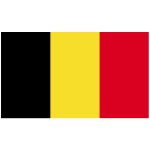
Belgium |
Belgium officially the Kingdom of Belgium, is a country in Western Europe bordered by France, the Netherlands, Germany and Luxembourg. It covers an area of 30,528 square kilometres and has a population of more than 11 million. The capital and largest city is Brussels; other major cities are Antwerp, Ghent, Charleroi and Liège. The sovereign state of Belgium is a federal constitutional monarchy with a parliamentary system of governance. Its institutional organisation is complex and is structured on both regional and linguistic grounds.Read more |
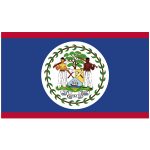
Belize |
Belize, formerly British Honduras, is a country on the eastern coast of Central America. Belize is bordered on the northwest by Mexico, on the east by the Caribbean Sea, and on the south and west by Guatemala. Belize is a parliamentary constitutional monarchy. Belize has an area of 22,800 square kilometres and a population of 387,879 . Its mainland is about 290 km long and 110 km wide.Read more |
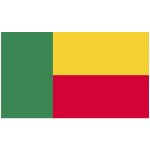
Benin |
Benin, officially the Republic of Benin and formerly Dahomey, is a country in West Africa. It is bordered by Togo to the west, Nigeria to the east, and Burkina Faso and Niger to the north. The majority of its population lives on the small southern coastline of the Bight of Benin, part of the Gulf of Guinea in the northernmost tropical portion of the Atlantic Ocean. The capital of Benin is Porto-Novo, but the seat of government is in Cotonou, the country’s largest city and economic capital. Benin covers an area of 114,763 square kilometres and its population in 2016 was estimated to be approximately 10.87 million. |
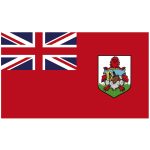
Bermuda |
Bermuda is a British Overseas Territory in the North Atlantic Ocean. It is approximately 1,070 km east-southeast of Cape Hatteras, North Carolina; 1,236 km south of Cape Sable Island, Nova Scotia; and 1,759 km north of Cuba. The capital city is Hamilton. Bermuda is self-governing, with its own constitution and its own government, which enacts local laws, while the United Kingdom retains responsibility for defence and foreign relations. Bermuda’s two largest economic sectors are offshore insurance and reinsurance, and tourism.Read more |
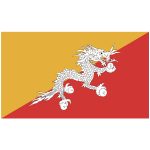
Bhutan |
Bhutan, officially the Kingdom of Bhutan, is a landlocked country in South Asia. Located in the Eastern Himalayas, it is bordered by Tibet Autonomous Region of China in the north, the Sikkim state of India and the Chumbi Valley of Tibet in the west, the Arunachal Pradesh state of India in the east, and the states of Assam and West Bengal in the south. Bhutan is geopolitically in South Asia and is the region’s second least populous nation after the Maldives. Thimphu is its capital and largest city, while Phuntsholing is its financial center. The independence of Bhutan has endured for centuries and it has never been colonized in its history.Read more |
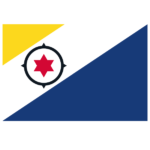
Bonaire |
Bonaire is a Dutch island in the Caribbean part of the Netherlands, which since 2010 has been a special administrative municipality as a Caribbean public body. It is located in the southern part of the Caribbean Sea, off the coast of Venezuela, and belongs to the ABC islands of the Lesser Antilles. The capital of Bonaire is Kralendijk; a corruption of Koralendijk . The oldest settlement is Rincon, Spanish for „corner“. |
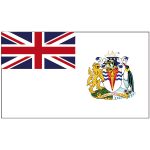
British Antarctic Territory |
The British Antarctic Territory is a sector of Antarctica claimed by the United Kingdom as one of its 14 British Overseas Territories, of which it is by far the largest by area. It comprises the region south of 60°S latitude and between longitudes 20°W and 80°W, forming a wedge shape that extends to the South Pole, overlapping the Antarctic claims of Argentina and Chile . The Territory was formed on 3 March 1962, although the UK’s claim to this portion of the Antarctic dates back to letters patent of 1908 and 1917. The area now covered by the Territory includes three regions which, before 1962, were administered by the British as separate dependencies of the Falkland Islands: Graham Land, the South Orkney Islands, and the South Shetland Islands. The United Kingdom’s claim to the region has been suspended since the Antarctic Treaty came into force in 1961, Article 4 of which states „No acts or activities taking place while the present Treaty is in force shall constitute a basis for asserting, supporting or denying a claim to territorial sovereignty in Antarctica.Read more |
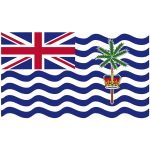
British Indian Ocean Territory |
The British Indian Ocean Territory is an overseas territory of the United Kingdom situated in the Indian Ocean halfway between Tanzania and Indonesia. The territory comprises the seven atolls of the Chagos Archipelago with over 1,000 individual islands – many very small – amounting to a total land area of 60 square kilometres . The largest and most southerly island is Diego Garcia, 27 km2, the site of a joint military facility of the United Kingdom and the United States. The only inhabitants are US and British military personnel and associated contractors, who collectively number around 2,500 . The removal of Chagossians from the Chagos Archipelago occurred between 1968 and 1973.Read more |
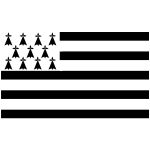
Brittany |
Brittany is a cultural region in the northwest of France, covering the western part of what was known as Armorica during the period of Roman occupation. It became an independent kingdom and then a duchy before being united with the Kingdom of France in 1532 as a province governed as if it were a separate nation under the crown. Brittany has also been referred to as Less, Lesser or Little Britain . It is bordered by the English Channel to the north, the Celtic Sea and the Atlantic Ocean to the west, and the Bay of Biscay to the south. Its land area is 34,023 km² .Read more |
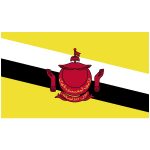
Brunei |
Brunei, officially the Nation of Brunei, the Abode of Peace, is a country located on the north coast of the island of Borneo in Southeast Asia. Apart from its coastline with the South China Sea, the sovereign state is completely surrounded by the Malaysian state of Sarawak. It is separated into two parts by the Sarawak district of Limbang. Brunei is the only sovereign state completely on the island of Borneo; the remainder of the island’s territory is divided between the nations of Malaysia and Indonesia. Brunei’s population was 423,196 in 2016.At the peak of the Bruneian Empire, Sultan Bolkiah is alleged to have had control over most regions of Borneo, including modern-day Sarawak and Sabah, as well as the Sulu Archipelago off the northeast tip of Borneo, Seludong, and the islands off the northwest tip of Borneo. |
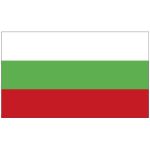
Bulgaria |
Bulgaria, officially the Republic of Bulgaria, is a country in southeastern Europe. It is bordered by Romania to the north, Serbia and Macedonia to the west, Greece and Turkey to the south, and the Black Sea to the east. The capital and largest city is Sofia; other major cities are Plovdiv, Varna and Burgas. |
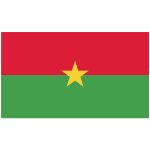
Burkina Faso |
Burkina Faso is a landlocked country in West Africa. It covers an area of around 274,200 square kilometres and is surrounded by six countries: Mali to the north; Niger to the east; Benin to the southeast; Togo and Ghana to the south; and Ivory Coast to the southwest. In 2017, its population was estimated at just over 20 million. Burkina Faso is a francophone country, with French as the official language of government and business. Formerly called the Republic of Upper Volta, the country was renamed „Burkina Faso“ on 4 August 1984 by then-President Thomas Sankara. |

Burundi |
Burundi, officially the Republic of Burundi, is a landlocked country in the African Great Lakes region of East Africa, bordered by Rwanda to the north, Tanzania to the east and south, and the Democratic Republic of the Congo to the west. It is also considered part of Central Africa. Burundi’s capital is Bujumbura. The southwestern border is adjacent to Lake Tanganyika. The Twa, Hutu and Tutsi peoples have lived in Burundi for at least 500 years.Read more |
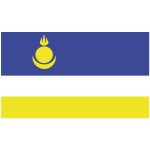
Butyatia |
The Republic of Buryatia is a federal subject of Russia, located in Siberia in Asia. Its capital is the city of Ulan-Ude. Its area is 351,300 square kilometers with a population of 972,021 . |
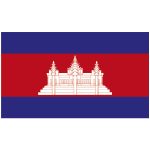
Cambodia |
Cambodia, officially the Kingdom of Cambodia, is a country located in the southern portion of the Indochina peninsula in Southeast Asia. It is 181,035 square kilometres in area, bordered by Thailand to the northwest, Laos to the northeast, Vietnam to the east and the Gulf of Thailand to the southwest. The sovereign state of Cambodia has a population of over 15 million. The official religion is Theravada Buddhism, practised by approximately 95 percent of the population. The country’s minority groups include Vietnamese, Chinese, Chams and 30 hill tribes. |

Cameroon |
Cameroon, officially the Republic of Cameroon, is a country wedged in West and Central Africa. It is bordered by Nigeria to the west and north; Chad to the northeast; the Central African Republic to the east; and Equatorial Guinea, Gabon and the Republic of the Congo to the south. Cameroon’s coastline lies on the Bight of Biafra, part of the Gulf of Guinea and the Atlantic Ocean. Although Cameroon is not an ECOWAS member state, it geographically and historically is in West Africa with the Southern Cameroons which now form her Northwest and Southwest Regions having a strong West African history. The country is sometimes identified as West African and other times as Central African due to its strategic position at the crossroads between West and Central Africa. |
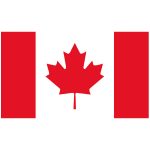
Canada |
Canada is a country located in the northern part of North America. Its ten provinces and three territories extend from the Atlantic to the Pacific and northward into the Arctic Ocean, covering 9.98 million square kilometres, making it the world’s second-largest country by total area. Canada’s southern border with the United States is the world’s longest bi-national land border. Its capital is Ottawa, and its three largest metropolitan areas are Toronto, Montreal, and Vancouver. As a whole, Canada is sparsely populated, the majority of its land area being dominated by forest and tundra. |
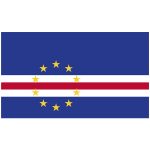
Cape Verde |
Cape Verde or Cabo Verde, officially the Republic of Cabo Verde, is an island country spanning an archipelago of 10 volcanic islands in the central Atlantic Ocean. It forms part of the Macaronesia ecoregion, along with the Azores, Canary Islands, Madeira, and the Savage Isles. In ancient times these islands were referred to as „the Islands of the Blessed“ or the „Fortunate Isles“. Located 570 kilometres west of the Cape Verde Peninsula in West Africa, the islands cover a combined area of slightly over 4,000 square kilometres . The Cape Verde archipelago was uninhabited until the 15th century, when Portuguese explorers discovered and colonized the islands, establishing the first European settlement in the tropics.Read more |
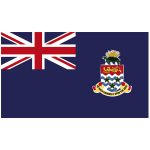
Cayman Islands |
The Cayman Islands is an autonomous British Overseas Territory in the western Caribbean Sea. The 264-square-kilometre territory comprises the three islands of Grand Cayman, Cayman Brac and Little Cayman, which are located to the south of Cuba and northeast of Honduras, between Jamaica and the Yucatán Peninsula. The total population of the three islands is approximately 60,765. The capital city is George Town, situated on Grand Cayman. The Cayman Islands is considered to be part of the geographic Western Caribbean Zone as well as the Greater Antilles.Read more |

Central African Republic |
The Central African Republic is a landlocked country in Central Africa. It is bordered by Chad to the north, Sudan to the northeast, South Sudan to the east, the Democratic Republic of the Congo to the south, the Republic of the Congo to the southwest and Cameroon to the west. The CAR covers a land area of about 620,000 square kilometres and had an estimated population of around 4.6 million as of 2016. Most of the CAR consists of Sudano-Guinean savannas, but the country also includes a Sahelo-Sudanian zone in the north and an equatorial forest zone in the south. Two thirds of the country is within the Ubangi River basin, while the remaining third lies in the basin of the Chari, which flows into Lake Chad.Read more |
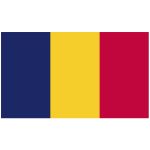
Chad |
Chad, officially the Republic of Chad, is a landlocked country in north-central Africa. It is bordered by Libya to the north, Sudan to the east, the Central African Republic to the south, Cameroon and Nigeria to the southwest, and Niger to the west. It is the fifth largest country in Africa and the second-largest in Central Africa in terms of area. Chad has several regions: a desert zone in the north, an arid Sahelian belt in the centre and a more fertile Sudanian Savanna zone in the south.Read more |
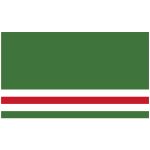
Chechen Republic of Ichkeria |
The Chechen Republic of Ichkeria was an unrecognized secessionist government of the Chechen Republic. The First Chechen War resulted in the victory of the separatist forces. After achieving de facto independence from Russia in 1996, the Chechen government failed to establish order. The region became plagued by kidnappings and violence between different Chechen clans. In 1997 the Chechen Republic adopted sharia and carried out public executions.Read more |
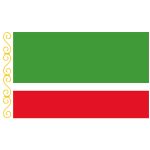
Chechen Republic |
Chechnya, officially the Chechen Republic, is a federal subject of Russia. It is located in the North Caucasus, situated in the southernmost part of Eastern Europe, and within 100 kilometres of the Caspian Sea. The capital of the republic is the city of Grozny. As of the 2010 Russian Census, the republic was reported to have a population of 1,268,989 people; however, that number has been questioned by multiple demographers, who think such population growth after two deadly wars is highly implausible.After the dissolution of the Soviet Union in 1991, the Chechen-Ingush ASSR was split into two parts: the Republic of Ingushetia and the Chechen Republic.Read more |
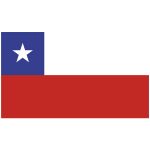
Chile |
Chile, officially the Republic of Chile, is a South American country occupying a long, narrow strip of land between the Andes to the east and the Pacific Ocean to the west. It borders Peru to the north, Bolivia to the northeast, Argentina to the east, and the Drake Passage in the far south. Chilean territory includes the Pacific islands of Juan Fernández, Salas y Gómez, Desventuradas, and Easter Island in Oceania. Chile also claims about 1,250,000 square kilometres of Antarctica, although all claims are suspended under the Antarctic Treaty. The arid Atacama Desert in northern Chile contains great mineral wealth, principally copper.Read more |
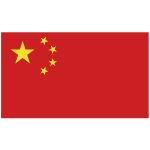
China |
China, officially the People’s Republic of China, is a country in East Asia and the world’s most populous country, with a population of around 1.404 billion. Covering approximately 9,600,000 square kilometers, it is the third- or fourth-largest country by total area, depending on the source consulted. Governed by the Communist Party of China, the state exercises jurisdiction over 22 provinces, five autonomous regions, four direct-controlled municipalities, and the special administrative regions of Hong Kong and Macau. China emerged as one of the world’s earliest civilizations, in the fertile basin of the Yellow River in the North China Plain. For millennia, China’s political system was based on hereditary monarchies, or dynasties, beginning with the semi-legendary Xia dynasty in 21st century BCE. Since then, China has expanded, fractured, and re-unified numerous times.Read more |
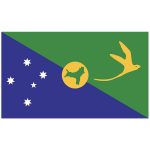
Christmas Island |
The Territory of Christmas Island is an Australian external territory comprising the island of the same name. Christmas Island is located in the Indian Ocean, around 350 kilometres south of Java and Sumatra and around 1,550 kilometres north-west of the closest point on the Australian mainland. It has an area of 135 square kilometres . Christmas Island had a population of 1,843 residents as of 2016, the majority of whom live in settlements on the northern tip of the island. The main settlement is Flying Fish Cove.Read more |
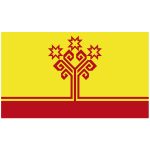
Chuvashia |
The Chuvash Republic, or Chuvashia, is a federal subject of Russia . It is the homeland of the Chuvash people, a Turkic ethnic group. Its capital is the city of Cheboksary. As of the 2010 Census, its population was 1,251,619.
== Geography == |
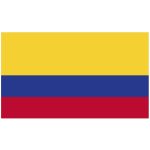
Colombia |
Colombia, officially the Republic of Colombia, is a country largely situated in the northwest of South America, with territories in Central America. Colombia shares a border to the northwest with Panama, to the east with Venezuela and Brazil and to the south with Ecuador and Peru. It shares its maritime limits with Costa Rica, Nicaragua, Honduras, Jamaica, Haiti and the Dominican Republic. The sovereign state of Colombia is a unitary, constitutional republic comprising thirty-two departments. The territory of what is now Colombia was originally inhabited by indigenous peoples, including the Muisca, Quimbaya, and the Tairona.Read more |
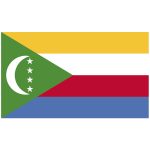
Comoros |
The Comoros, officially the Union of the Comoros, is an island country in the Indian Ocean located at the northern end of the Mozambique Channel off the eastern coast of Africa between northeastern Mozambique and northwestern Madagascar. The capital and largest city in Comoros is Moroni. The religion of the majority of the population is Sunni Islam. At 1,660 km2, excluding the contested island of Mayotte, the Comoros is the third-smallest African nation by area. The population, excluding Mayotte, is estimated at 795,601.Read more |
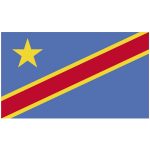
Congo, Democratic Republic of the |
The Democratic Republic of the Congo, also known as DR Congo, the DRC, Congo-Kinshasa or simply the Congo, is a country located in Central Africa. It is sometimes referred to by its former name of Zaire, which was its official name between 1971 and 1997. The DRC borders the Central African Republic and South Sudan to the north; Uganda, Rwanda, Burundi and Tanzania to the east; Zambia to the south; Angola to the southwest; and the Republic of the Congo and the Atlantic Ocean to the west. It is the second-largest country in Africa after Algeria, by area and the 11th-largest in the world. With a population of over 78 million, the Democratic Republic of the Congo is the most populated officially Francophone country, the fourth-most-populated country in Africa and the 16th-most-populated country in the world. |

Congo, Republic of the |
The Republic of the Congo, also known as Congo-Brazzaville, the Congo Republic or simply the Congo, is a |country in Central Africa. It is bordered by five countries: Gabon and the Atlantic Ocean to the west; Cameroon to the northwest; the Central African Republic to the northeast; the Democratic Republic of the Congo to the east and south; and the Angolan exclave of Cabinda to the southwest. The region was dominated by Bantu-speaking tribes at least 3,000 years ago, who built trade links leading into the Congo River basin. Congo-Brazzaville was formerly part of the French colony of Equatorial Africa. Upon independence in 1960, the former colony of French Congo became the Republic of the Congo.ead more |
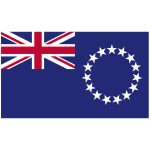
Cook Island |
The Cook Islands is a self-governing island country in the South Pacific Ocean in free association with New Zealand. It comprises 15 islands whose total land area is 240 square kilometres . The Cook Islands‘ Exclusive Economic Zone covers 1,800,000 square kilometres of ocean.New Zealand is responsible for the Cook Islands‘ defence and foreign affairs, but they are exercised in consultation with the Cook Islands. In recent times, the Cook Islands have adopted an increasingly independent foreign policy. Although Cook Islanders are citizens of New Zealand, they have the status of Cook Islands nationals, which is not given to other New Zealand citizens. |
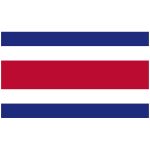
Costa Rica |
Costa Rica, officially the Republic of Costa Rica, is a country in Central America, bordered by Nicaragua to the north, the Caribbean Sea to the northeast, Panama to the southeast, the Pacific Ocean to the southwest, and Ecuador to the south of Cocos Island. It has a population of around 4.9 million, in a land area of 51,060 square kilometers . An estimated 333,980 people live in the capital and largest city, San José.The sovereign state of Costa Rica is a unitary presidential constitutional republic. It’s known for its long-standing and stable democracy, and for its highly educated workforce, most of whom speak English. The country spends roughly 6.9% of its budget on education, compared to a global average of 4.4%. |
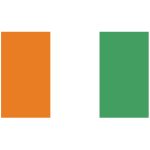
Cote d’Ivoire |
Ivory Coast, known endonymously as Côte d’Ivoire and officially the Republic of Côte d’Ivoire, is a country located in West Africa. Ivory Coast’s political capital is Yamoussoukro, while its economic capital and largest city is the port city of Abidjan. It borders Guinea and Liberia to the west, Burkina Faso and Mali to the north, Ghana to the east, and Gulf of Guinea to the south. Prior to its colonization by Europeans, Ivory Coast was home to several states, including Gyaaman, the Kong Empire, and Baoulé. The area became a protectorate of France in 1843 and was consolidated as a French colony in 1893 amid the European scramble for Africa.Read more |
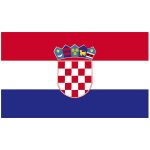
Croatia |
Croatia, officially the Republic of Croatia is a country at the crossroads of Central and Southeast Europe, on the Adriatic Sea. Its capital Zagreb forms one of the country’s primary subdivisions, along with twenty counties. Croatia has an area of 56,594 square kilometres and a population of 4.28 million, most of whom are Roman Catholics. The Croats arrived in the area in the 6th century and organised the territory into two duchies by the 9th century. Tomislav became the first king by 925, elevating Croatia to the status of a kingdom, which retained its sovereignty for nearly two centuries, reaching its peak during the rule of kings Petar Krešimir IV and Dmitar Zvonimir.Read more |
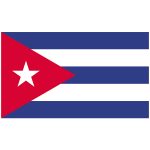
Cuba |
Cuba, officially the Republic of Cuba, is a country comprising the island of Cuba as well as Isla de la Juventud and several minor archipelagos. Cuba is located in the northern Caribbean where the Caribbean Sea, Gulf of Mexico and Atlantic Ocean meet. It is south of both the U.S. state of Florida and the Bahamas, west of Haiti and north of Jamaica. Havana is the largest city and capital; other major cities include Santiago de Cuba and Camagüey. The area of the Republic of Cuba is 110,860 square kilometres . |
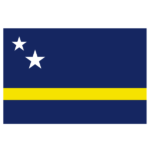
Curacao |
Curaçao is an island in the southern Caribbean Sea, off the coast of Venezuela. With the uninhabited Klein Curaçao, Curaçao is a country within the Kingdom of the Netherlands. Until October 10, 2010 it was an island territory and the largest island of the Netherlands Antilles. |
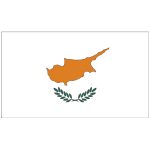
Cyprus |
Cyprus, officially the Republic of Cyprus, is an island country in the Eastern Mediterranean and the third largest and third most populous island in the Mediterranean. Cyprus is located in Western Asia, south of Turkey, west of Syria and Lebanon, northwest of Israel, north of Egypt, and southeast of Greece. The earliest known human activity on the island dates to around the 10th millennium BC. Archaeological remains from this period include the well-preserved Neolithic village of Khirokitia, and Cyprus is home to some of the oldest water wells in the world. Cyprus was settled by Mycenaean Greeks in two waves in the 2nd millennium BC. As a strategic location in the Middle East, it was subsequently occupied by several major powers, including the empires of the Assyrians, Egyptians and Persians, from whom the island was seized in 333 BC by Alexander the Great. Subsequent rule by Ptolemaic Egypt, the Classical and Eastern Roman Empire, Arab caliphates for a short period, the French Lusignan dynasty and the Venetians, was followed by over three centuries of Ottoman rule between 1571 and 1878 .Cyprus was placed under British administration based on the Cyprus Convention in 1878 and was formally annexed by Britain in 1914. Read more |
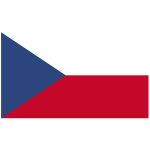
Czech Republic |
The Czech Republic, known alternatively by its short-form name, Czechia, is a landlocked country in Central Europe bordered by Germany to the west, Austria to the south, Slovakia to the east and Poland to the northeast. The Czech Republic covers an area of 78,866 square kilometres with a mostly temperate continental climate and oceanic climate. It is a unitary parliamentary republic, with 10.6 million inhabitants; its capital and largest city is Prague, with 1.3 million residents. Other major cities are Brno, Ostrava and Pilsen. The Czech Republic is a member of the European Union, NATO, the OECD, the United Nations, the OSCE, and the Council of Europe. |
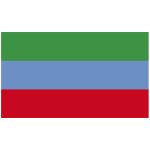
Dagestan |
Dagestan, officially the Republic of Dagestan, is a federal subject of Russia, located in the North Caucasus region. Its capital and largest city is Makhachkala, centrally located on the Caspian Sea coast. With a population of 2,910,249, Dagestan is very ethnically diverse and Russia’s most heterogeneous republic, with the largest ethnicity constituting less than 30% of the population. Largest among the ethnicities are the Avar, Dargin, Kumyk, Lezgian, Laks, Azerbaijani, Tabasaran, and Chechen. Ethnic Russians comprise about 3.6% of Dagestan’s total population.Read more |
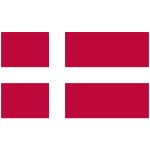
Denmark |
Denmark, officially the Kingdom of Denmark, is a Nordic country and the southernmost of the Scandinavian nations. The sovereign state is south-west of Sweden and south of Norway, and bordered to the south by Germany. The Kingdom of Denmark also comprises two autonomous constituent countries in the North Atlantic Ocean: the Faroe Islands and Greenland. Denmark proper consists of a peninsula, Jutland, and an archipelago of 443 named islands, with the largest being Zealand, Funen and the North Jutlandic Island. The islands are characterised by flat, arable land and sandy coasts, low elevation and a temperate climate. |
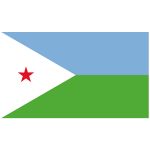
Djibouti |
Djibouti is a country located in the Horn of Africa. It is bordered by Eritrea in the north, Ethiopia in the west and south, and Somalia in the southeast. The remainder of the border is formed by the Red Sea and the Gulf of Aden at the east. Djibouti occupies a total area of 23,200 km2 .Djibouti has always been a very active member in the African Union and the Arab League. In antiquity, the territory was part of the Land of Punt and then the Kingdom of Aksum.Read more |
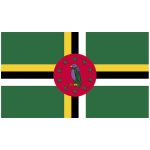
Dominica |
Dominica, officially the Commonwealth of Dominica, is an Island country in the West Indies. The capital, Roseau, is located on the western side of the island. It is part of the Windward Islands in the Lesser Antilles archipelago in the Caribbean Sea. The island is located near Guadeloupe to the northwest and Martinique to the south-southeast. Its area is 750 km2, and the highest point is Morne Diablotins, at 1,447 m in elevation. |
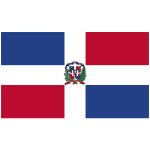
Dominican Republic |
The Dominican Republic is a country located in the island of Hispaniola, in the Greater Antilles archipelago of the Caribbean region. It occupies the eastern five-eighths of the island, which it shares with the nation of Haiti, making Hispaniola one of two Caribbean islands, along with Saint Martin, that are shared by two sovereign states. The Dominican Republic is the second-largest Caribbean nation by area at 48,445 square kilometers, and third by population with approximately 10 million people, of which approximately three million live in the metropolitan area of Santo Domingo, the capital city.Christopher Columbus landed on the island on December 5, 1492, which the native Taíno people had inhabited since the 7th century. The colony of Santo Domingo became the site of the first permanent European settlement in the Americas, the oldest continuously inhabited city, and the first seat of the Spanish colonial rule in the New World. After more than three hundred years of Spanish rule the Dominican people declared independence in November 1821. |
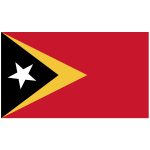
East Timor |
East Timor or Timor-Leste, officially the Democratic Republic of Timor-Leste, is a country in Maritime Southeast Asia. The sovereign state comprises the eastern half of the island of Timor, the nearby islands of Atauro and Jaco, and Oecusse, an exclave on the northwestern side of the island surrounded by Indonesian West Timor. Australia is the country’s southern neighbour, separated by the Timor Sea. The country’s size is about 15,410 km2 .East Timor was colonised by Portugal in the 16th century, and was known as Portuguese Timor until 28 November 1975, when the Revolutionary Front for an Independent East Timor declared the territory’s independence. Nine days later, it was invaded and occupied by Indonesia, and was declared Indonesia’s 27th province the following year. |
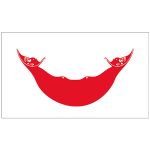
Easter Island Rapa Nui |
Easter Island is a Chilean island in the southeastern Pacific Ocean, at the southeasternmost point of the Polynesian Triangle in Oceania. Easter Island is most famous for its nearly 1,000 extant monumental statues, called moai, created by the early Rapa Nui people. In 1995, UNESCO named Easter Island a World Heritage Site, with much of the island protected within Rapa Nui National Park. It is believed that Easter Island’s Polynesian inhabitants arrived on Easter Island sometime near 1200 AD. They created a thriving and industrious culture, as evidenced by the island’s numerous enormous stone moai and other artifacts. However, land clearing for cultivation and the introduction of the Polynesian rat led to gradual deforestation.Read more |
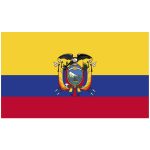
Ecuador |
Ecuador, officially the Republic of Ecuador, is a country in northwestern South America, bordered by Colombia on the north, Peru on the east and south, and the Pacific Ocean to the west. Ecuador also includes the Galápagos Islands in the Pacific, about 1,000 kilometres west of the mainland. The capital city is Quito, while the largest city is Guayaquil. What is now Ecuador was home to a variety of Amerindian groups that were gradually incorporated into the Inca Empire during the 15th century. The territory was colonized by Spain during the 16th century, achieving independence in 1820 as part of Gran Colombia, from which it emerged as its own sovereign state in 1830.Read more |
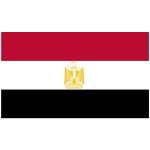
Egypt |
Egypt, officially the Arab Republic of Egypt, is a country spanning the northeast corner of Africa and southwest corner of Asia by a land bridge formed by the Sinai Peninsula. Egypt is a Mediterranean country bordered by the Gaza Strip and Israel to the northeast, the Gulf of Aqaba to the east, the Red Sea to the east and south, Sudan to the south, and Libya to the west. Across the Gulf of Aqaba lies Jordan, and across from the Sinai Peninsula lies Saudi Arabia, although Jordan and Saudi Arabia do not share a land border with Egypt. Egypt has one of the longest histories of any country, tracing its heritage back to the 6th–4th millennia BCE. Considered a cradle of civilisation, Ancient Egypt saw some of the earliest developments of writing, agriculture, urbanisation, organised religion and central government. Iconic monuments such as the Giza Necropolis and its Great Sphinx, as well the ruins of Memphis, Thebes, Karnak, and the Valley of the Kings, reflect this legacy and remain a significant focus of scientific and popular interest.Read more |
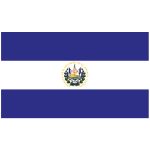
El Salvador |
El Salvador, officially the Republic of El Salvador, is the smallest and the most densely populated country in Central America. It is bordered on the northeast by Honduras, on the northwest by Guatemala, and on the south by the Pacific Ocean. El Salvador’s capital and largest city is San Salvador. As of 2016, the country had a population of approximately 6.34 million.El Salvador was for centuries inhabited by several Mesoamerican nations, especially the Cuzcatlecs, as well as the Lenca and Maya. In the early 16th century, the Spanish Empire conquered the territory, incorporating it into the Viceroyalty of New Spain ruled from Mexico City. |
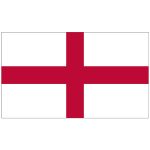
England |
England is a country that is part of the United Kingdom. It shares land borders with Scotland to the north and Wales to the west. The Irish Sea lies northwest of England and the Celtic Sea lies to the southwest. England is separated from continental Europe by the North Sea to the east and the English Channel to the south. The country covers five-eighths of the island of Great Britain, which lies in the North Atlantic, and includes over 100 smaller islands, such as the Isles of Scilly and the Isle of Wight. |
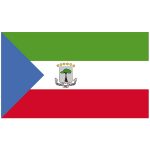
Equatorial Guinea |
Equatorial Guinea, officially the Republic of Equatorial Guinea, is a country located in Central Africa, with an area of 28,000 square kilometres . Formerly the colony of Spanish Guinea, its post-independence name evokes its location near both the Equator and the Gulf of Guinea. Equatorial Guinea is the only sovereign African state in which Spanish is an official language. As of 2015, the country had an estimated population of 1,222,245.Equatorial Guinea consists of two parts, an insular and a mainland region. The insular region consists of the islands of Bioko in the Gulf of Guinea and Annobón, a small volcanic island which is the only part of the country south of the equator. |
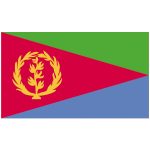
Eritrea |
Eritrea, officially the State of Eritrea, is a country in the Horn of Africa, with its capital at Asmara. It is bordered by Sudan in the west, Ethiopia in the south, and Djibouti in the southeast. The northeastern and eastern parts of Eritrea have an extensive coastline along the Red Sea. The nation has a total area of approximately 117,600 km2, and includes the Dahlak Archipelago and several of the Hanish Islands. Its toponym Eritrea is based on the Greek name for the Red Sea, which was first adopted for Italian Eritrea in 1890. |
|
|
Estonia, officially the Republic of Estonia, is a country in Northern Europe. It is bordered to the north by the Gulf of Finland with Finland on the other side, to the west by the Baltic Sea with Sweden to the west, to the south by Latvia, and to the east by Lake Peipus and Russia . The territory of Estonia consists of a mainland and 2,222 islands in the Baltic Sea, covering a total area of 45,227 km2, water 2,839 km2, land area 42,388 km2, and is influenced by a humid continental climate. The official language of the country, Estonian, is the second most spoken Finnic language. The territory of Estonia has been inhabited since at least 9,000 B.C. Ancient Estonians were some of the last European pagans to be Christianized, following the Livonian Crusade in the 13th century.Read more |
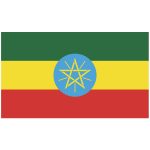
Ethiopia |
Ethiopia, officially the Federal Democratic Republic of Ethiopia, is a country in the Horn of Africa. It shares borders with Eritrea to the north and northeast, Djibouti and Somalia to the east, Sudan and South Sudan to the west, and Kenya to the south. With over 102 million inhabitants, Ethiopia is the most populous landlocked country in the world and the second-most populous nation on the African continent. It occupies a total area of 1,100,000 square kilometres, and its capital and largest city is Addis Ababa.Some of the oldest skeletal evidence for anatomically modern humans has been found in Ethiopia. It is widely considered as the region from which modern humans first set out for the Middle East and places beyond. |
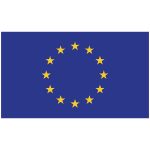
European Union |
The European Union is a political and economic union of 28 member states that are located primarily in Europe. It has an area of 4,475,757 km2 and an estimated population of over 510 million. The EU has developed an internal single market through a standardised system of laws that apply in all member states in those matters where members have agreed to act as one. EU policies aim to ensure the free movement of people, goods, services and capital within the internal market, enact legislation in justice and home affairs and maintain common policies on trade, agriculture, fisheries and regional development. For travel within the Schengen Area, passport controls have been abolished. |
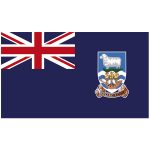
Falkland Islands |
The Falkland Islands is an archipelago in the South Atlantic Ocean on the Patagonian Shelf. The principal islands are about 300 miles east of South America’s southern Patagonian coast, at a latitude of about 52°S. The archipelago, with an area of 4,700 square miles, comprises East Falkland, West Falkland and 776 smaller islands. As a British overseas territory, the Falklands have internal self-governance, and the United Kingdom takes responsibility for their defence and foreign affairs. The Falkland Islands‘ capital is Stanley on East Falkland. Controversy exists over the Falklands‘ discovery and subsequent colonisation by Europeans.Read more |
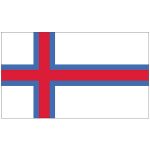
Faroe Islands |
The Faroe Islands, also spelled the Faeroe Islands, is a North Atlantic archipelago located 320 kilometres north-northwest of Scotland, about halfway between Norway and Iceland. The islands are an autonomous country within the Kingdom of Denmark. Their area is about 1,400 square kilometres with a population of 50,322 in October 2017.The Faroes‘ terrain is rugged, and the islands have a subpolar oceanic climate : windy, wet, cloudy, and cool. Despite this island group’s northerly latitude, temperatures average above freezing throughout the year because of the Gulf Stream. Between 1035 and 1814, the Faroes were part of the Hereditary Kingdom of Norway.Read more |
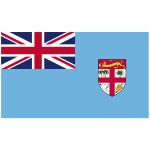
Fiji |
Fiji, officially the Republic of Fiji, is an island country in Melanesia, part of Oceania in the South Pacific Ocean about 1,100 nautical miles northeast of New Zealand’s North Island. Its closest neighbours are Vanuatu to the west, New Caledonia to the southwest, New Zealand’s Kermadec Islands to the southeast, Tonga to the east, the Samoas and France’s Wallis and Futuna to the northeast, and Tuvalu to the north. Fiji is an archipelago of more than 330 islands—of which 110 are permanently inhabited—and more than 500 islets, amounting to a total land area of about 18,300 square kilometres . The farthest island is Ono-i-Lau. The two major islands, Viti Levu and Vanua Levu, account for 87% of the total population of 898,760.Read more |
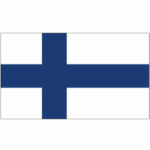 Finland |
The Republic of Finland is a Nordic country and a member state of the European Union in Northern Europe. It shares land borders with Sweden to the west, Russia to the east, Norway to the north, and is defined by the Gulf of Bothnia to the west, and the Gulf of Finland of the Baltic Sea across Estonia to the south. Finland covers an area of 338,455 square kilometres (130,678 sq mi) with a population of 5.5 million. Helsinki is the country’s capital and largest city. |
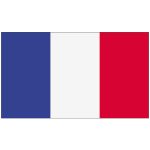
France |
France, officially the French Republic, is a country whose territory consists of metropolitan France in Western Europe and several overseas regions and territories. The metropolitan area of France extends from the Mediterranean Sea to the English Channel and the North Sea, and from the Rhine to the Atlantic Ocean. The overseas territories include French Guiana in South America and several islands in the Atlantic, Pacific and Indian oceans. The country’s 18 integral regions span a combined area of 643,801 square kilometres and a total population of 67.25 million . The sovereign state of France is a unitary semi-presidential republic with its capital in Paris, the country’s largest city and main cultural and commercial centre. |
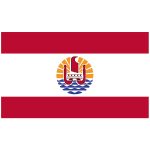
French Polynesia |
French Polynesia is an overseas collectivity of the French Republic and the only overseas country of France. It is composed of 118 geographically dispersed islands and atolls stretching over an expanse of more than 2,000 kilometres in the South Pacific Ocean. Its total land area is 4,167 square kilometres . French Polynesia is divided into five groups of islands: the Society Islands archipelago, composed of the Windward Islands and the Leeward Islands; the Tuamotu Archipelago; the Gambier Islands; the Marquesas Islands; and the Austral Islands. Among its 118 islands and atolls, 67 are inhabited.Read more |

French Southern and Antarctic Lands |
The French Southern and Antarctic Lands is an overseas territory of France. It consists of:
Kerguelen Islands, a group of volcanic islands in the southern Indian Ocean, southeast of Africa, approximately equidistant between Africa, Antarctica and Australia; |
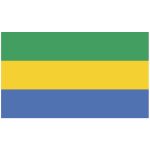
Gabon |
Gabon, officially the Gabonese Republic, is a country on the west coast of Central Africa. Located on the equator, Gabon is bordered by Equatorial Guinea to the northwest, Cameroon to the north, the Republic of the Congo on the east and south, and the Gulf of Guinea to the west. It has an area of nearly 270,000 square kilometres and its population is estimated at 2 million people. Its capital and largest city is Libreville. Since its independence from France in 1960, the sovereign state of Gabon has had three presidents.Read more |
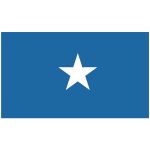
Galmudug |
Galmudug, officially Galmudug State, is an autonomous region in central Somalia. It is bordered to the north by the Puntland region, to the west by Ethiopia, to the east by Indian Ocean and to the south by Hirshabelle. Galmudug’s name is derived from a conflation of the names of the Galgaduud and Mudug regions. Galmudug consists of the region of Galgaduud and southern half of Mudug region. Galmudug is an autonomous state within the larger Federal Republic of Somalia, as defined by the provisional constitution of Somalia.Read more |
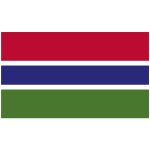
Gambia |
The Gambia, officially the Republic of The Gambia, is a country in West Africa that is almost entirely surrounded by Senegal with the exception of its western coastline along the Atlantic Ocean. It is the smallest country within mainland Africa.The Gambia is situated on either side of the Gambia River, the nation’s namesake, which flows through the centre of The Gambia and empties into the Atlantic Ocean. Its area is 10,689 square kilometres with a population of 1,857,181 as of the April 2013 census. Banjul is the Gambian capital and the largest cities are Serekunda and Brikama. The Gambia shares historical roots with many other West African nations in the slave trade, which was the key factor in the placing and keeping of a colony on the Gambia River, first by the Portuguese, during which era it was known as A Gâmbia.Read more |

Georgia |
Georgia is a country in the Caucasus region of Eurasia. Located at the crossroads of Western Asia and Eastern Europe, it is bounded to the west by the Black Sea, to the north by Russia, to the south by Turkey and Armenia, and to the southeast by Azerbaijan. The capital and largest city is Tbilisi. Georgia covers a territory of 69,700 square kilometres, and its 2017 population is about 3.718 million. The sovereign state of Georgia is a unitary semi-presidential republic, with the government elected through a representative democracy.During the classical era, several independent kingdoms became established in what is now Georgia, such as Colchis, later known as Lazica and Iberia. |
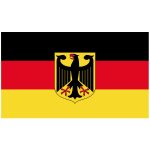
Germany |
Germany, officially the Federal Republic of Germany, is a country in central-western Europe. It includes 16 constituent states, covers an area of 357,386 square kilometres, and has a largely temperate seasonal climate. With nearly 83 million inhabitants, Germany is the most populous member state of the European Union. Germany’s capital and largest metropolis is Berlin, while its largest conurbation is the Ruhr, with its main centres of Dortmund and Essen. The country’s other major cities are Hamburg, Munich, Cologne, Frankfurt, Stuttgart, Düsseldorf, Leipzig, Bremen, Dresden, Hannover, and Nuremberg. |
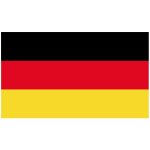
Germany |
Germany, officially the Federal Republic of Germany, is a country in central-western Europe. It includes 16 constituent states, covers an area of 357,386 square kilometres, and has a largely temperate seasonal climate. With nearly 83 million inhabitants, Germany is the most populous member state of the European Union. Germany’s capital and largest metropolis is Berlin, while its largest conurbation is the Ruhr, with its main centres of Dortmund and Essen. The country’s other major cities are Hamburg, Munich, Cologne, Frankfurt, Stuttgart, Düsseldorf, Leipzig, Bremen, Dresden, Hannover, and Nuremberg. |
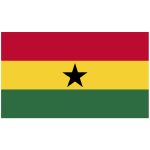
Ghana |
Ghana, officially the Republic of Ghana, is a country located along the Gulf of Guinea and Atlantic Ocean, in the subregion of West Africa. Spanning a land mass of 238,535 km2, Ghana is bordered by the Ivory Coast in the west, Burkina Faso in the north, Togo in the east and the Gulf of Guinea and Atlantic Ocean in the south. Ghana means „Warrior King“ in the Soninke language.The first permanent state in the territory of present-day Ghana dates back to the 11th century. Numerous kingdoms and empires emerged over the centuries, of which the most powerful was the Kingdom of Ashanti. Beginning in the 15th century, numerous European powers contested the area for trading rights, with the British ultimately establishing control of the coast by the late 19th century. |
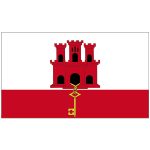
Gibraltar |
Gibraltar is a British Overseas Territory located at the southern tip of the Iberian Peninsula. It has an area of 6.7 km2 and is bordered to the north by Spain. The landscape is dominated by the Rock of Gibraltar at the foot of which is a densely populated city area, home to over 30,000 people, primarily Gibraltarians. It shares a maritime border with Morocco. Under the Gibraltar constitution of 2006, Gibraltar has limited powers of self-government, with some responsibilities, such as defence and foreign relations, remaining with the British government. |

Greece |
Greece, officially the Hellenic Republic, historically also known as Hellas, is a country mostly located in Southern Europe, with a population of approximately 11 million as of 2016. Athens is the nation’s capital and largest city, followed by Thessaloniki. Greece is located at the crossroads of Europe, Asia, and Africa. Situated on the southern tip of the Balkan Peninsula, it shares land borders with Albania to the northwest, the Republic of Macedonia and Bulgaria to the north, and Turkey to the northeast. The Aegean Sea lies to the east of the mainland, the Ionian Sea to the west, the Cretan Sea and the Mediterranean Sea to the south.Read more |
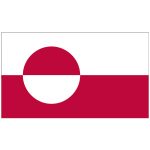
Greenland |
Greenland is an autonomous constituent country within the Kingdom of Denmark between the Arctic and Atlantic Oceans, east of the Canadian Arctic Archipelago. Though physiographically a part of the continent of North America, Greenland has been politically and culturally associated with Europe for more than a millennium. The majority of its residents are Inuit, whose ancestors began migrating from the Canadian mainland in the 13th century, gradually settling across the island. Greenland is the world’s largest island. Australia and Antarctica, although larger, are generally considered to be continental landmasses rather than islands.Read more |
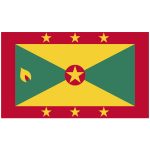
Grenada |
Grenada is a country in the West Indies in the southeastern Caribbean Sea consisting of the island of Grenada and six smaller islands at the southern end of the Grenadines island chain. It is located northwest of Trinidad and Tobago, northeast of Venezuela and southwest of Saint Vincent and the Grenadines. Its size is 348.5 square kilometres, and it had an estimated population of 107,317 in 2016. Its capital is St. George’s. |
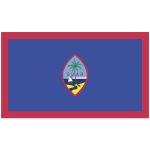
Guam |
Guam is an unincorporated and organized territory of the United States in Micronesia in the western Pacific Ocean. It is the westernmost point and territory of the United States, along with the Northern Mariana Islands. The capital city of Guam is Hagåtña and the most populous city is Dededo. The inhabitants of Guam are called Guamanians, and they are American citizens by birth. Indigenous Guamanians are the Chamorros, who are related to other Austronesian natives to the west in the Philippines and Taiwan. |
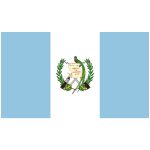
Guatemala |
Guatemala, officially the Republic of Guatemala, is a country in Central America bordered by Mexico to the north and west, Belize and the Caribbean to the northeast, Honduras to the east, El Salvador to the southeast and the Pacific Ocean to the south. With an estimated population of around 16.6 million, it is the most populated country in Central America. Guatemala is a representative democracy; its capital and largest city is Nueva Guatemala de la Asunción, also known as Guatemala City. The territory of modern Guatemala once formed the core of the Maya civilization, which extended across Mesoamerica. Most of the country was conquered by the Spanish in the 16th century, becoming part of the viceroyalty of New Spain.Read more |
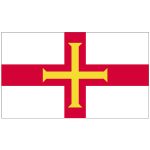
Guernsey |
Guernsey is an island in the English Channel off the coast of Normandy. It lies roughly north of Saint-Malo and to the west of Jersey and the Cotentin Peninsula. With several smaller nearby islands, it forms a jurisdiction within the Bailiwick of Guernsey, a Crown dependency. The jurisdiction is made up of ten parishes on the island of Guernsey, three other inhabited islands, and many small islets and rocks.
== Constitutional status == |
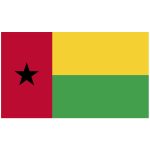
Guinea Bissau |
Guinea-Bissau, officially the Republic of Guinea-Bissau, is a country in West Africa that covers 36,125 square kilometres with an estimated population of 1,815,698.Guinea-Bissau was once part of the kingdom of Gabu, as well as part of the Mali Empire. Parts of this kingdom persisted until the 18th century, while a few others were under some rule by the Portuguese Empire since the 16th century. In the 19th century, it was colonized as Portuguese Guinea. Upon independence, declared in 1973 and recognised in 1974, the name of its capital, Bissau, was added to the country’s name to prevent confusion with Guinea . Guinea-Bissau has a history of political instability since independence, and no elected president has successfully served a full five-year term. |
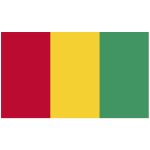
Guinea |
Guinea, officially the Republic of Guinea, is a country on the western coast of Africa. Formerly known as French Guinea, the modern country is sometimes referred to as Guinea-Conakry in order to distinguish it from other countries with „Guinea“ in the name and the eponymous region, such as Guinea-Bissau and Equatorial Guinea. Guinea has a population of 12.4 million and an area of 245,860 square kilometres .The sovereign state of Guinea is a republic with a president that is directly elected by the people and is head of state and head of government. The unicameral Guinean National Assembly is the legislative body of the country, and its members are also directly elected by the people. The judicial branch is led by the Guinea Supreme Court, the highest and final court of appeal in the country. |
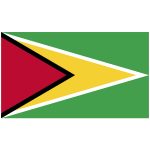
Guyana |
Guyana, officially the Co-operative Republic of Guyana, is a country on the northern mainland of South America. It is, however, often considered part of the Caribbean region because of its strong cultural, historical, and political ties with other Anglo-Caribbean countries and the Caribbean Community . Guyana is bordered by the Atlantic Ocean to the north, Brazil to the south and southwest, Suriname to the east and Venezuela to the west. With 215,000 square kilometres, Guyana is the third-smallest sovereign state on mainland South America after Uruguay and Suriname. The region known as „the Guianas“ consists of the large shield landmass north of the Amazon River and east of the Orinoco River known as the „land of many waters“.Read more |
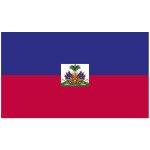
Haiti |
Haiti, officially the Republic of Haiti and formerly called Hayti, is a country located on the island of Hispaniola in the Greater Antilles archipelago of the Caribbean Sea. It occupies the western three-eighths of the island, which it shares with the Dominican Republic. Haiti is 27,750 square kilometres in size and has an estimated 10.8 million people, making it the most populous country in the Caribbean Community and the second-most populous country in the Caribbean as a whole. The region was originally inhabited by the indigenous Taíno people. Spain landed on the island on 5 December 1492 during the first voyage of Christopher Columbus across the Atlantic.Read more |
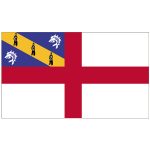
Herm |
Herm is one of the Channel Islands and part of the Parish of St Peter Port in the Bailiwick of Guernsey. It is located in the English Channel, north-west of France and south of England. It is 1.5 miles long and under 0.5 miles wide; orientated north-south, with several stretches of sand along its northern coast. The much larger island of Guernsey lies to the west and Jersey to the south-east, and the smaller island of Jethou is just off the south-west coast. Herm was first discovered in the Mesolithic period, and the first settlers arrived in the Neolithic and Bronze Ages.Read more |
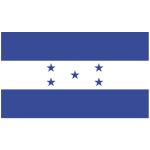
Honduras |
Honduras, officially the Republic of Honduras, is a country in Central America. It has at times been referred to as Spanish Honduras to differentiate it from British Honduras, which became modern-day Belize. The republic of Honduras is bordered to the west by Guatemala, to the southwest by El Salvador, to the southeast by Nicaragua, to the south by the Pacific Ocean at the Gulf of Fonseca, and to the north by the Gulf of Honduras, a large inlet of the Caribbean Sea. Honduras was home to several important Mesoamerican cultures, most notably the Maya, before the Spanish invaded in the sixteenth century. The Spanish introduced Roman Catholicism and the now predominant Spanish language, along with numerous customs that have blended with the indigenous culture.Read more |
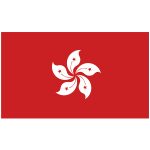
Hong Kong |
Hong Kong, officially the Hong Kong Special Administrative Region of the People’s Republic of China, is a specially administered territory on the eastern side of the Pearl River estuary in southern China. With over 7.4 million people of various nationalities in a territory of 1,104 square kilometres, Hong Kong is the fourth-most densely populated region in the world. Hong Kong became a colony of the British Empire after Qing China ceded Hong Kong Island at the conclusion of the First Opium War in 1842. The colony expanded to the Kowloon Peninsula in 1860 after the Second Opium War and was further extended when Britain obtained a 99-year lease of the New Territories in 1898. The entire territory was returned to China when this lease expired in 1997.Read more |
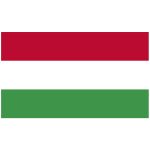
Hungary |
Hungary is a country in Central Europe that covers an area of 93,030 square kilometres in the Carpathian Basin, bordered by Slovakia to the north, Ukraine to the northeast, Austria to the northwest, Romania to the east, Serbia to the south, Croatia to the southwest, and Slovenia to the west. With about 10 million inhabitants, Hungary is a medium-sized member state of the European Union. The official language is Hungarian, which is the most widely spoken Uralic language in the world. Hungary’s capital and its largest city and metropolis is Budapest, a significant economic hub, classified as a leading global city. Major urban areas include Debrecen, Szeged, Miskolc, Pécs and Győr. |
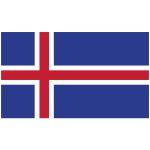
Iceland |
Iceland is a Nordic island country in the North Atlantic, with a population of 348,580 and an area of 103,000 km2, making it the most sparsely populated country in Europe. The capital and largest city is Reykjavík. Reykjavík and the surrounding areas in the southwest of the country are home to over two-thirds of the population. Iceland is volcanically and geologically active. The interior consists of a plateau characterised by sand and lava fields, mountains, and glaciers, and many glacial rivers flow to the sea through the lowlands.Read more |

India |
India, also known as the Republic of India, is a country in South Asia. It is the seventh-largest country by area, the second-most populous country, and the most populous democracy in the world. Bounded by the Indian Ocean on the south, the Arabian Sea on the southwest, and the Bay of Bengal on the southeast, it shares land borders with Pakistan to the west; China, Nepal, and Bhutan to the northeast; and Bangladesh and Myanmar to the east. In the Indian Ocean, India is in the vicinity of Sri Lanka and the Maldives, while its Andaman and Nicobar Islands share a maritime border with Thailand and Indonesia. The Indian subcontinent was home to the urban Indus Valley Civilisation of the 3rd millennium BCE. In the following millennium, the oldest scriptures associated with Hinduism began to be composed.Read more |
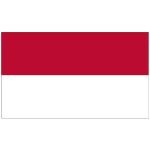
Indonesia |
Indonesia, officially the Republic of Indonesia, is a sovereign state in Southeast Asia, between the Indian and Pacific oceans. It is the world’s largest island country, with more than thirteen thousand islands, and at 1,904,569 square kilometres, the 14th largest by land area and the 7th largest in combined sea and land area. With over 261 million people, it is the world’s 4th most populous country as well as the most populous Muslim-majority country. Java, the world’s most populous island, contains more than half of the country’s population. Indonesia is a republic with an elected parliament and president.Read more |

Ingushetia |
The Republic of Ingushetia, also referred to as simply Ingushetia, is a federal subject of the Russian Federation, located in the North Caucasus region. Its capital is the town of Magas. At 3,000 square km, in terms of area, the republic is the smallest of Russia’s federal subjects except for the federal cities. It was established on June 4, 1992, after the Chechen-Ingush Autonomous Soviet Socialist Republic was split in two.Read more |
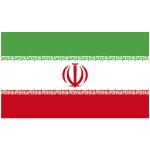
Iran |
Iran, also known as Persia, officially the Islamic Republic of Iran, is a country in Western Asia. With over 81 million inhabitants, Iran is the world’s 18th-most-populous country. Comprising a land area of 1,648,195 km2, it is the second-largest country in the Middle East and the 17th-largest in the world. Iran is bordered to the northwest by Armenia and the Republic of Azerbaijan, to the north by the Caspian Sea, to the northeast by Turkmenistan, to the east by Afghanistan and Pakistan, to the south by the Persian Gulf and the Gulf of Oman, and to the west by Turkey and Iraq. The country’s central location in Eurasia and Western Asia, and its proximity to the Strait of Hormuz, give it geostrategic importance. |
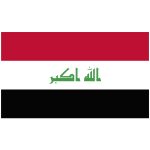
Iraq |
Iraq, officially known as the Republic of Iraq, is a country in Western Asia, bordered by Turkey to the north, Iran to the east, Kuwait to the southeast, Saudi Arabia to the south, Jordan to the southwest and Syria to the west. The capital, and largest city, is Baghdad. Iraq is home to diverse ethnic groups including Arabs, Kurds, Assyrians, Turkmen, Shabakis, Yazidis, Armenians, Mandeans, Circassians and Kawliya. Around 95% of the country’s 37 million citizens are Muslims, with Christianity, Yarsan, Yezidism and Mandeanism also present. The official languages of Iraq are Arabic and Kurdish. |
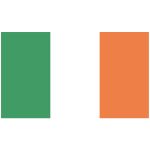
Ireland |
Ireland is an island in the North Atlantic. It is separated from Great Britain to its east by the North Channel, the Irish Sea, and St George’s Channel. Ireland is the second-largest island of the British Isles, the third-largest in Europe, and the twentieth-largest on Earth.Politically, Ireland is divided between the Republic of Ireland, which covers five-sixths of the island, and Northern Ireland, which is part of the United Kingdom. In 2011, the population of Ireland was about 6.6 million, ranking it the second-most populous island in Europe after Great Britain. Just under 4.8 million live in the Republic of Ireland and just over 1.8 million live in Northern Ireland.The island’s geography comprises relatively low-lying mountains surrounding a central plain, with several navigable rivers extending inland. |
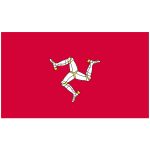
Isle of Man |
The Isle of Man, sometimes referred to simply as Mann, is a self-governing British Crown dependency in the Irish Sea between Great Britain and Ireland. The head of state is Queen Elizabeth II, who holds the title of Lord of Mann and is represented by a Lieutenant Governor. Defence is the responsibility of the United Kingdom. Insurance and online gambling generate 17% of GNP each, followed by information and communications technology and banking with 9% each.The island has been inhabited since before 6500 BC. Gaelic cultural influence began in the 5th century AD, and the Manx language, a branch of the Gaelic languages, emerged. In 627, Edwin of Northumbria conquered the Isle of Man along with most of Mercia.Read more |
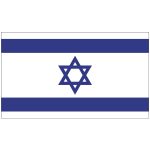
Israel |
Israel, officially the State of Israel, is a country in the Middle East, on the southeastern shore of the Mediterranean Sea and the northern shore of the Red Sea. It has land borders with Lebanon to the north, Syria to the northeast, Jordan on the east, the Palestinian territories of the West Bank and Gaza Strip to the east and west, respectively, and Egypt to the southwest. The country contains geographically diverse features within its relatively small area. Israel’s economic and technological center is Tel Aviv, while its seat of government and proclaimed capital is Jerusalem, although the state’s sovereignty over Jerusalem has only partial recognition.Israel has evidence of the earliest migration of hominids out of Africa. Canaanite tribes are archaeologically attested since the Middle Bronze Age, while the Kingdoms of Israel and Judah emerged during the Iron Age. |
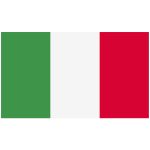
Italy |
Italy, officially the Italian Republic, is a country in Europe. Located in the heart of the Mediterranean Sea, Italy shares open land borders with France, Switzerland, Austria, Slovenia, San Marino, and Vatican City. Italy covers an area of 301,340 km2 and has a largely temperate seasonal and Mediterranean climate. With around 61 million inhabitants, it is the fourth-most populous EU member state and the most populous in southern Europe. Due to its central geographic location in Europe and the Mediterranean, Italy has historically been home to a myriad of peoples and cultures.Read more |
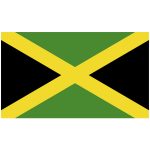
Jamaica |
Jamaica is an island country situated in the Caribbean Sea. Spanning 10,990 square kilometres in area, it is the third-largest island of the Greater Antilles and the fourth-largest island country in the Caribbean. Jamaica lies about 145 kilometres south of Cuba, and 191 kilometres west of Hispaniola . Previously inhabited by the indigenous Arawak and Taíno peoples, the island came under Spanish rule following the arrival of Christopher Columbus in 1494. Many of the indigenous people died of disease, and the Spanish transplanted African slaves to Jamaica as labourers.Read more |
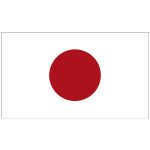
Japan |
Japan is an island country in East Asia. Located in the Pacific Ocean, it lies off the eastern coast of the Asian mainland and stretches from the Sea of Okhotsk in the north to the East China Sea and China in the southwest.
The kanji that make up Japan’s name mean „sun origin“, and it is often called the „Land of the Rising Sun“. Japan is a stratovolcanic archipelago consisting of about 6,852 islands. |
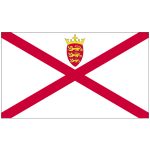
Jersey |
Jersey, officially the Bailiwick of Jersey, is a Crown dependency located near the coast of Normandy, France. Jersey was part of the Duchy of Normandy, whose dukes went on to become kings of England from 1066. After Normandy was lost by the kings of England in the 13th century, and the ducal title surrendered to France, Jersey and the other Channel Islands remained attached to the English crown. The bailiwick consists of the island of Jersey, the largest of the Channel Islands, along with surrounding uninhabited islands and rocks collectively named Les Dirouilles, Les Écréhous, Les Minquiers, Les Pierres de Lecq, and other reefs. Although the bailiwicks of Jersey and Guernsey are often referred to collectively as the Channel Islands, the „Channel Islands“ are not a constitutional or political unit.Read more |
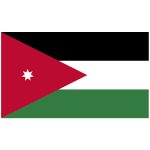
Jordan |
Jordan, officially the Hashemite Kingdom of Jordan, is an Arab country in Western Asia, on the East Bank of the Jordan River. Jordan is bordered by Saudi Arabia to the south, Iraq to the north-east, Syria to the north, Israel and Palestine to the west. The Dead Sea lies along its western borders and the country has a small shoreline on the Red Sea in its extreme south-west, but is otherwise landlocked. Jordan is strategically located at the crossroads of Asia, Africa and Europe. The capital, Amman, is Jordan’s most populous city as well as the country’s economic, political and cultural centre.What is now Jordan has been inhabited by humans since the Paleolithic period. |
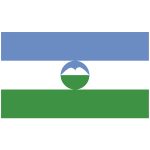
Kabardino Balkaria |
The Kabardino-Balkar Republic, or Kabardino-Balkaria, is a federal subject of Russia located in the North Caucasus. As of the 2010 Census, its population was 859,939 on 12,500 square km. Its capital is Nalchik.
== Geography == The republic is situated in the North Caucasus mountains, with plains in the northern part. Area: 12,500 square kilometers |
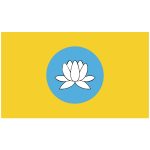
Kalmykia |
The Republic of Kalmykia is a federal subject of Russia . As of the 2010 Census, its population was 289,481.Kalmykia is the only region in Europe where Buddhism is the most practiced religion, with Buddhists constituting a plurality of the population.Elista, the capital of the republic, has of late, gained an international reputation for international chess competitions.
== Geography == |
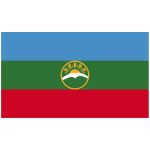
Karachay Cherkessia |
The Karachay-Cherkess Republic or Karachay-Cherkessia is a federal subject of Russia. It is geographically located in the North Caucasus region of Southern Russia and is administratively part of the North Caucasian Federal District. Karachay-Cherkessia has a population of 477,859 .Cherkessk is the largest city and the capital of the Karachay-Cherkess Republic. Karachay-Cherkessia is one of Russia’s ethnic republics, primarily representing the indigenous Karachay people and Cherkess people. Karachays form the largest ethnic group at around 40% of the population, followed by ethnic Russians and Cherkess .Read more |
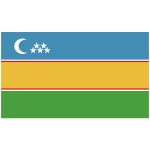
Karakalpakstan |
Karakalpakstan, officially the Republic of Karakalpakstan is an autonomous republic within Uzbekistan. It occupies the whole northwestern end of Uzbekistan. The capital is Nukus . The Republic of Karakalpakstan has an area of 160,000 square kilometres . Its territory covers the classical land of Khwarezm, though in classical Persian literature the area was known as Kāt . |
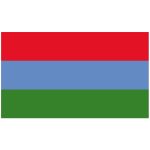
Karelia |
Karelia, the land of the Karelian people, is an area in Northern Europe of historical significance for Finland, Russia, and Sweden. It is currently divided among the northwestern Russian Federation and Finland .
== Use of name == Various subdivisions may be called Karelia. Finnish Karelia was an historical province of Finland, and is now divided between Finland and Russia, often called just Karjala in Finnish. The eastern part of this chiefly Lutheran area was ceded to Russia after the Winter War of 1939–40. |
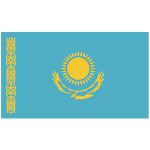
Kazakhstan |
Kazakhstan, officially the Republic of Kazakhstan, is the world’s largest landlocked country, and the ninth largest in the world, with an area of 2,724,900 square kilometres . Kazakhstan is the dominant nation of Central Asia economically, generating 60% of the region’s GDP, primarily through its oil/gas industry. |
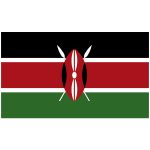
Kenya |
Kenya, officially the Republic of Kenya, is a country in Africa with its capital and largest city in Nairobi. Kenya’s territory lies on the equator and overlies the East African Rift, covering a diverse and expansive terrain that extends roughly from Lake Victoria to Lake Turkana and further south-east to the Indian Ocean. It is bordered by Tanzania to the south and south-west, Uganda to the west, South Sudan to the north-west, Ethiopia to the north and Somalia to the north-east. Kenya covers 581,309 km2 has a population of approximately 48 million. Kenya’s capital and largest city is Nairobi, while its oldest city and first capital is the coastal city of Mombasa.Read more |
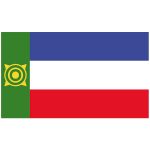
Khakassia |
The Republic of Khakassia, or simply Khakassia is a federal subject of Russia. Its capital city is Abakan, which is also the largest city in the republic. As of the 2010 Census, the republic’s population was 532,403. |
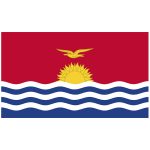
Kiribati |
Kiribati, officially the Republic of Kiribati, is a country in Micronesia in the central Pacific Ocean. The permanent population is just over 110,000, more than half of whom live on Tarawa Atoll. The sovereign state comprises 32 atolls and reef islands and one raised coral island, Banaba. They have a total land area of 800 square kilometres and are dispersed over 3.5 million square kilometres . Their spread straddles both the equator and the 180th meridian, although the International Date Line goes round Kiribati and swings far to the east, almost reaching the 150°W meridian. |
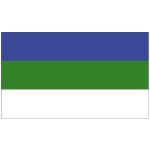
Komi |
The Komi Republic is a federal subject of Russia . Its capital is the city of Syktyvkar. The population of the republic, as of the 2010 Census was 901,189. |
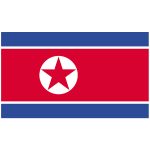
Korea, People’s Democratic Republic |
North Korea, officially the Democratic People’s Republic of Korea, is a country in East Asia constituting the northern part of the Korean Peninsula, with Pyongyang the capital and the largest city in the country. To the north and northwest, the country is bordered by China and by Russia along the Amnok and Tumen rivers; it is bordered to the south by South Korea, with the heavily fortified Korean Demilitarized Zone separating the two. Nevertheless, North Korea, like its southern counterpart, claims to be the legitimate government of the entire peninsula and adjacent islands. Both North Korea and South Korea became members of the United Nations in 1991.In 1910, Korea was annexed by Imperial Japan. After the Japanese surrender at the end of World War II in 1945, Korea was divided into two zones, with the north occupied by the Soviet Union and the south occupied by the United States. |
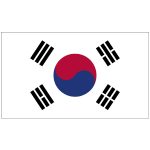
Korea, Republic |
South Korea, officially the Republic of Korea, is a country in East Asia, constituting the southern part of the Korean Peninsula and lying east to the Asian mainland. The name Korea is derived from Goguryeo which was one of the great powers in East Asia during its time, ruling most of the Korean Peninsula, Manchuria, parts of the Russian Far East and Inner Mongolia, under Gwanggaeto the Great. South Korea lies in the north temperate zone and has a predominantly mountainous terrain. It comprises an estimated 51.4 million residents distributed over 100,363 km2 . The capital and largest city is Seoul, with a population of 10 million. |
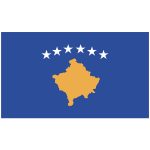
Kosovo |
Kosovo, officially the Republic of Kosovo, is a partially recognised state and disputed territory in Southeastern Europe that declared independence from Serbia in February 2008. Covering an area of 10,908 square kilometres, Kosovo is a landlocked territory in the Balkan Peninsula, bordered by Albania to the southwest, the Republic of Macedonia to the southeast, Montenegro to the west and the uncontested territory of Serbia to the north and east. Due to its strategic position in the Balkan Peninsula, it serves as an important link in the connection between Central and Southern Europe, the Adriatic Sea and the Black Sea. Its capital and largest city is Pristina, while other major urban areas include Prizren, Peć and Ferizaj. While Serbia recognises administration of the territory by Kosovo’s elected government, it continues to claim it as its own Autonomous Province of Kosovo and Metohija. |
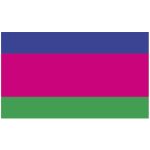
Kuban People’s Republic |
The Kuban People’s Republic was an anti-Bolshevik state during the Russian Civil War, comprising the territory of the modern-day Kuban region in Russia. The republic was proclaimed by the Kuban Rada on 28 January 1918, and declared its independence on 16 February. It would include all territory of the former Kuban Oblast of the Russian Empire. During its brief independence, it sought union with the Ukrainian People’s Republic until the latter was occupied by Soviet forces. The Kuban People’s Republic was crushed 7 November 1919, having existed for 21 months.Read more |
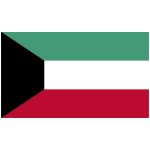
Kuwait |
Kuwait, officially the State of Kuwait, is a country in Western Asia. Situated in the northern edge of Eastern Arabia at the tip of the Persian Gulf, it shares borders with Iraq and Saudi Arabia. As of 2016, Kuwait has a population of 4.2 million people; 1.3 million are Kuwaitis and 2.9 million are expatriates. Expatriates account for 70% of the population.Oil reserves were discovered in commercial quantities in 1938. From 1946 to 1982, the country underwent large-scale modernization. |
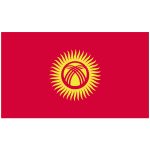
Kyrgyzstan |
Kyrgyzstan, officially the Kyrgyz Republic (Kyrgyz: Кыргыз Республикасы, translit. Qırğız Respublikası; Russian: Кыргызская Республика, tr. Kyrgyzskaya Respublika; Uzbek: Qirg’iz Respublikasi, and also known as Kirghizia, is a sovereign state in Central Asia. Kyrgyzstan is a landlocked country with mountainous terrain. It is bordered by Kazakhstan to the north, Uzbekistan to the west and southwest, Tajikistan to the southwest and China to the east. |
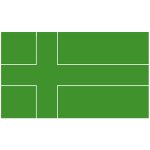
Ladonia |
Ladonia is a micronation, proclaimed in 1996 as the result of a years-long court battle between artist Lars Vilks and local authorities over two sculptures. The claimed territory is part of the natural reserve of Kullaberg in southern Sweden.
== History == Vilks appealed the decision of the council, but lost. |
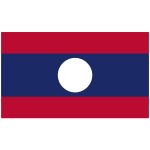
Laos |
Laos, officially the Lao People’s Democratic Republic, commonly referred to by its colloquial name of Muang Lao, is a socialist state and the only landlocked country in Southeast Asia at the heart of the Indochinese peninsula, bordered by Myanmar and China to the northwest, Vietnam to the east, Cambodia to the southwest, and Thailand to the west and southwest.Present-day Laos traces its historic and cultural identity to the kingdom of Lan Xang Hom Khao, which existed for four centuries as one of the largest kingdoms in Southeast Asia. Due to Lan Xang’s central geographical location in Southeast Asia, the kingdom became a popular hub for overland trade, becoming wealthy economically as well as culturally. After a period of internal conflict, Lan Xang broke off into three separate kingdoms—Luang Phrabang, Vientiane and Champasak. In 1893, it became a French protectorate, with the three territories uniting to form what is now known as the country of Laos. |
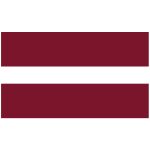
Latvia |
Latvia, officially the Republic of Latvia, is a country in the Baltic region of Northern Europe. Since its independence, Latvia has been referred to as one of the Baltic states. It is bordered by Estonia in the northern region, Lithuania in the southern, to the east is Russia, and Belarus to the southeast, as well as sharing a maritime border with Sweden to the west. Latvia has 1,957,200 inhabitants and a territory of 64,589 km2 . The country has a temperate seasonal climate.After centuries of Swedish, Polish and Russian rule, a rule mainly executed by the Baltic German aristocracy, the Republic of Latvia was established on 18 November 1918 when it broke away and declared independence from Russia in the aftermath of World War I. However, by the 1930s the country became increasingly autocratic after the coup in 1934 establishing an authoritarian regime under Kārlis Ulmanis. |
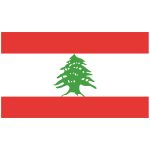
Lebanon |
Lebanon, officially known as the Lebanese Republic, is a country in Western Asia. It is bordered by Syria to the north and east and Israel to the south, while Cyprus is west across the Mediterranean Sea. Lebanon’s location at the crossroads of the Mediterranean Basin and the Arabian hinterland facilitated its rich history and shaped a cultural identity of religious and ethnic diversity. At just 10,452 km2, it is the smallest recognized sovereign state on the mainland Asian continent.The earliest evidence of civilization in Lebanon dates back more than seven thousand years, predating recorded history. |
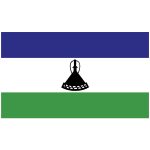
Lesotho |
Lesotho officially the Kingdom of Lesotho is an enclaved country in southern Africa. It is just over 30,000 km2 in size and has a population of around 2 million. Its capital and largest city is Maseru. Lesotho was previously known as Basutoland, but it declared independence from the United Kingdom on 4 October 1966. The sovereign state is a member of the United Nations, the Commonwealth of Nations, and the Southern African Development Community .Read more |
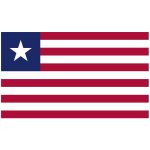
Liberia |
Liberia, officially the Republic of Liberia, is a country on the West African coast. It is bordered by Sierra Leone to its west, Guinea to its north and Ivory Coast to its east, the Atlantic Ocean to its south. It covers an area of 111,369 square kilometers and has a population of around 4,700,000 people. English is the official language and over 20 indigenous languages are spoken, representing the numerous ethnic groups who make up more than 95% of the population. The country’s capital and largest city is Monrovia. |
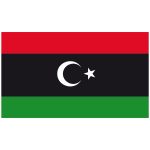
Libya |
Libya is a country in North Africa, bordered by the Mediterranean Sea to the north, Egypt to the east, Sudan to the southeast, Chad and Niger to the south and Algeria and Tunisia to the west. The sovereign state is made of three historical regions: Tripolitania, Fezzan and Cyrenaica. With an area of almost 1.8 million square kilometres, Libya is the fourth largest country in Africa, and is the 16th largest country in the world. Libya has the 10th-largest proven oil reserves of any country in the world. The largest city and capital, Tripoli, is located in western Libya and contains over one million of Libya’s six million people. |
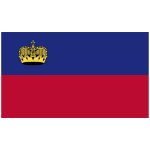
Liechtenstein |
Liechtenstein, officially the Principality of Liechtenstein, is a doubly landlocked German-speaking microstate in Central Europe. The principality is a constitutional monarchy headed by the Prince of Liechtenstein. Liechtenstein is bordered by Switzerland to the west and south and Austria to the east and north. It has an area of just over 160 square kilometres, the fourth smallest country in Europe and has a population of 37,877. Divided into 11 municipalities, its capital is Vaduz, and its largest municipality is Schaan.Read more |
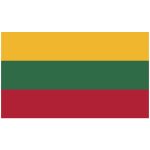
Lithuania |
Lithuania, officially the Republic of Lithuania, is a country in the Baltic region of northern-eastern Europe. Since its independence, Lithuania has been referred to as one of the Baltic states. It is situated along the southeastern shore of the Baltic Sea, to the east of Sweden and Denmark. It is bordered by Latvia to the north, Belarus to the east and south, Poland to the south, and Kaliningrad Oblast to the southwest. Lithuania has an estimated population of 2.8 million people as of 2017, and its capital and largest city is Vilnius. |
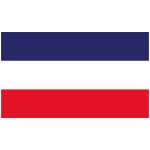
Los Altos |
Los Altos is a city in Santa Clara County, California, in northern Silicon Valley, in the San Francisco Bay Area. The population was 28,976 according to the 2010 census. Most of the city’s growth occurred between 1950 and 1980. Originally an agricultural town with many summer cottages and apricot orchards, Los Altos is now an affluent commuter town for Silicon Valley. Los Altos has several distinctive features.Read more |
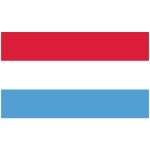
Luxembourg |
Luxembourg, officially the Grand Duchy of Luxembourg, is a small landlocked country in western Europe. It is bordered by Belgium to the west and north, Germany to the east, and France to the south. Its capital, Luxembourg City, together with Brussels and Strasbourg, is one of the three official capitals of the European Union and the seat of the European Court of Justice, the highest judicial authority in the EU. Its culture, people, and languages are highly intertwined with its neighbours, making it essentially a mixture of French and German cultures, as evident by the nation’s three official languages: French, German, and the national language, Luxembourgish . The repeated invasions by Germany, especially in World War II, resulted in the country’s strong will for mediation between France and Germany and, among other things, led to the foundation of the European Union.With an area of 2,586 square kilometres, it is one of the smallest sovereign states in Europe. In 2016, Luxembourg had a population of 576,249, which makes it one of the least-populous countries in Europe, but by far the one with the highest population growth rate. |
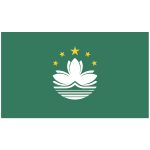
Macau |
Macau or Macao, officially the Macao Special Administrative Region of the People’s Republic of China, is an autonomous territory on the western side of the Pearl River estuary in East Asia. Along with Hong Kong, Guangzhou, Shenzhen, Zhuhai, and several other major cities in Guangdong, the territory forms a core part of the Pearl River Delta metropolitan region, the most populated area in the world. With a population of 650,900 in an area of 30.5 km2, it is the most densely populated region in the world. Macau was formerly a colony of the Portuguese Empire, after Ming China leased the territory as a trading post in 1557. Originally governing under Chinese authority and sovereignty, Portugal was given perpetual occupation rights for Macau in 1887.Read more |
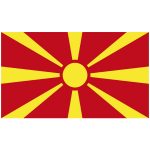
Macedonia |
Macedonia, officially the Republic of Macedonia, is a country in the Balkan peninsula in Southeast Europe. It is one of the successor states of the former Yugoslavia, from which it declared independence in 1991. It became a member of the United Nations in 1993, but, as a result of an ongoing dispute with Greece over the use of the name „Macedonia“, was admitted under the provisional description the former Yugoslav Republic of Macedonia, a term that is also used by international organizations such as the European Union, the Council of Europe, and NATO. On 17 June 2018, Macedonia and Greece signed the Prespa agreement which would see the country change its name to “Republic of North Macedonia”, after the October 1 national referendum on the matter and legislation passing through parliament.A landlocked country, the Republic of Macedonia has borders with Kosovo to the northwest, Serbia to the north, Bulgaria to the east, Greece to the south, and Albania to the west. |
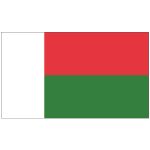
Madagascar |
Madagascar, officially the Republic of Madagascar, and previously known as the Malagasy Republic, is an island country in the Indian Ocean, off the coast of East Africa. The nation comprises the island of Madagascar, and numerous smaller peripheral islands. Following the prehistoric breakup of the supercontinent Gondwana, Madagascar split from the Indian peninsula around 88 million years ago, allowing native plants and animals to evolve in relative isolation. Consequently, Madagascar is a biodiversity hotspot; over 90% of its wildlife is found nowhere else on Earth. The island’s diverse ecosystems and unique wildlife are threatened by the encroachment of the rapidly growing human population and other environmental threats. |

Malawi |
Malawi, officially the Republic of Malawi, is a landlocked country in southeast Africa that was formerly known as Nyasaland. It is bordered by Zambia to the northwest, Tanzania to the northeast, and Mozambique on the east, south and west. Malawi is over 118,000 km2 with an estimated population of 18,091,575 . Lake Malawi takes up about a third of Malawi’s area. Its capital is Lilongwe, which is also Malawi’s largest city; the second largest is Blantyre, the third is Mzuzu and the fourth largest is its old capital Zomba. |
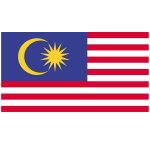
Malaysia |
Malaysia officially the Federation of Malaysia or Malaysia Federation is a country in Southeast Asia. The federal constitutional monarchy consists of 13 states and three federal territories, separated by the South China Sea into two similarly sized regions, Peninsular Malaysia and Malaysian Borneo. Peninsular Malaysia shares a land and maritime border with Thailand in the north and maritime borders with Singapore in the south, Vietnam in the northeast, and Indonesia in the west. East Malaysia shares land and maritime borders with Brunei and Indonesia and a maritime border with the Philippines and Vietnam. Kuala Lumpur is the national capital and largest city while Putrajaya is the seat of federal government. |
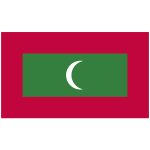
Maldives |
The Maldives, officially the Republic of Maldives, is a South Asian country, located in the Indian Ocean, situated in the Arabian Sea. It lies southwest of Sri Lanka and India. The chain of 26 atolls stretches from Ihavandhippolhu Atoll in the north to the Addu City in the south. Comprising a territory spanning roughly 298 square kilometres, the Maldives is one of the world’s most geographically dispersed sovereign states as well as the smallest Asian country by land area and population, with around 427,756 inhabitants. Malé is the capital and most populated city, traditionally called the „King’s Island“ for its central location. |
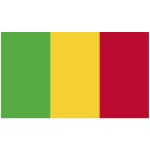
Mali |
Mali, officially the Republic of Mali, is a landlocked country in West Africa, a region geologically identified with the West African Craton. Mali is the eighth-largest country in Africa, with an area of just over 1,240,000 square kilometres . The population of Mali is 18 million. Its capital is Bamako. The sovereign state of Mali consists of eight regions and its borders on the north reach deep into the middle of the Sahara Desert, while the country’s southern part, where the majority of inhabitants live, features the Niger and Senegal rivers. |
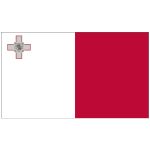
Malta |
Malta, officially known as the Republic of Malta, is a Southern European island country consisting of an archipelago in the Mediterranean Sea. It lies 80 km south of Italy, 284 km east of Tunisia, and 333 km north of Libya. Malta is one of the world’s smallest and most densely populated countries, at over 316 km2 with a population of about 475,000. Its capital is Valletta, which is the smallest national capital in the European Union by area at 0.8 km.2 Its largest town is Birkirkara, while its chief economic centre is Sliema. The official languages are Maltese and English, with Maltese also recognised as the national language. |
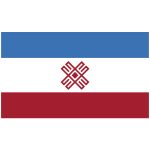
Mari El |
The Mari El Republic is a federal subject of Russia . It is geographically located in the European Russia region of the country, along the northern bank of the Volga River, and is administratively part of the Volga Federal District. The Mari El Republic has a population of 696,459 .Yoshkar-Ola is the capital and the largest city of the Republic Mari El is one of Russia’s ethnic republics, primarily representing the indigenous Mari people, a Finno-Ugric ethnic group who have traditionally lived along the Volga River and Kama River. The majority of the Republic’s population are ethnic Russians and Mari, with minority populations of Tatars and Chuvash. The official languages of Mari El are Russian and the Mari language.Read more |
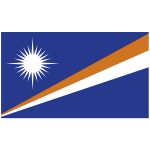
Marshall Islands |
The Marshall Islands, officially the Republic of the Marshall Islands, is an island country and a United States associated state near the equator in the Pacific Ocean, slightly west of the International Date Line. Geographically, the country is part of the larger island group of Micronesia. The country’s population of 53,158 people is spread out over 29 coral atolls, comprising 1,156 individual islands and islets. The islands share maritime boundaries with the Federated States of Micronesia to the west, Wake Island to the north, Kiribati to the southeast, and Nauru to the south. About 27,797 of the islanders live on Majuro, which contains the capital.Read more |
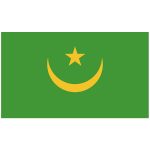
Mauritania |
Mauritania, officially the Islamic Republic of Mauritania, is a country in Northwest Africa. It is the eleventh largest sovereign state in Africa and is bordered by the Atlantic Ocean to the west, Western Sahara to the north and northwest, Algeria to the northeast, Mali to the east and southeast, and Senegal to the southwest. The country derives its name from the ancient Berber kingdom of Mauretania, which existed from the 3rd century BCE into the 7th century CE in the far north of modern-day Morocco and Algeria. Approximately 90% of Mauritania’s land is within the Sahara; consequently, the population is concentrated in the south, where precipitation is slightly higher. The capital and largest city is Nouakchott, located on the Atlantic coast, which is home to around one-third of the country’s 4.3 million people.Read more |
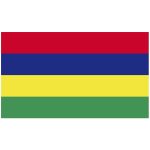
Mauritius |
Mauritius, officially the Republic of Mauritius, is an island country in the Mascarene archipelago of the Indian Ocean, located 2,000 kilometres off the southeast coast of Africa. The constitution of Mauritius declares the country’s sovereignty over Mauritius Island, Rodrigues, Agaléga, St. Brandon and the disputed territories of Tromelin and the Chagos Archipelago. The country’s nearest neighbours include Reunion, a French overseas department, and Madagascar. Mauritius is the most densely populated country in Africa. |
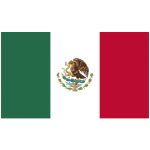
Mexico |
Mexico, officially the United Mexican States, is a federal republic in the southernmost portion of North America. It is bordered to the north by the United States; to the south and west by the Pacific Ocean; to the southeast by Guatemala, Belize, and the Caribbean Sea; and to the east by the Gulf of Mexico. Covering almost 2,000,000 square kilometres, the nation is the fifth largest country in the Americas by total area and the 13th largest independent state in the world. With an estimated population of over 120 million people, the country is the eleventh most populous state and the most populous Spanish-speaking state in the world, while being the second most populous nation in Latin America after Brazil. Mexico is a federation comprising 31 states and Mexico City, a special federal entity that is also the capital city and its most populous city.Read more |
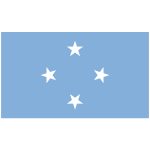
Micronesia, Federated States |
The Federated States of Micronesia is a country and a United States associated state consisting of four states – from west to east, Yap, Chuuk, Pohnpei and Kosrae – that are spread across the Western Pacific Ocean. Together, the states comprise around 607 islands that cover a longitudinal distance of almost 2,700 km just north of the equator. They lie northeast of New Guinea, south of Guam and the Marianas, west of Nauru and the Marshall Islands, east of Palau and the Philippines, about 2,900 km north of eastern Australia and some 4,000 km southwest of the main islands of Hawaii. While the FSM’s total land area is quite small, it occupies more than 2,600,000 km2 of the Pacific Ocean, giving the country the 14th largest Exclusive Economic Zone in the world. The independent sovereign island nations capital is Palikir, located on Pohnpei Island, while the largest city is Weno, located in the Chuuk Atoll.Read more |
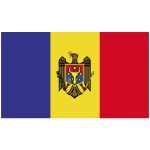
Moldova |
Moldova, officially the Republic of Moldova, is a landlocked country in Eastern Europe, bordered by Romania to the west and Ukraine to the north, east, and south. The capital city is Chișinău. Most of the Moldovan territory was a part of the Principality of Moldavia from the 14th century until 1812, when it was ceded to the Russian Empire by the Ottoman Empire and became known as Bessarabia. In 1856, southern Bessarabia was returned to Moldavia, which three years later united with Wallachia to form Romania, but Russian rule was restored over the whole of the region in 1878. During the 1917 Russian Revolution, Bessarabia briefly became autonomous and then independent Moldavian Democratic Republic until it was integrated into Romania in 1918 following a vote of its assembly.Read more |
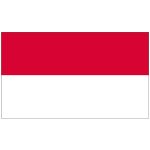
Monaco |
Monaco, officially the Principality of Monaco, is a sovereign city-state, country and microstate on the French Riviera in Western Europe. France borders the country on three sides while the other side borders the Mediterranean Sea. Monaco is also located close to Italy, although it has no direct border. Monaco has an area of 2.020 km2, making it the second-smallest state in the world after the Vatican. Its population was about 38,400 based on the last census of 2016.Read more |
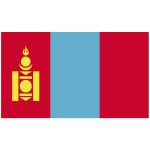
Mongolia |
Mongolia is a landlocked country in East Asia. Its area is roughly equivalent with the historical territory of Outer Mongolia, and that term is sometimes used to refer to the current state. It is sandwiched between China to the south and Russia to the north. Mongolia does not share a border with Kazakhstan, although only 37 kilometres separates them. At 1,564,116 square kilometres, Mongolia is the 18th-largest and the most sparsely populated unitary sovereign state in the world, with a population of around 3 million people.Read more |
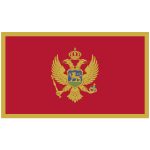
Montenegro |
Montenegro is a country in Southeastern Europe on the Adriatic Sea. It borders Bosnia and Herzegovina to the north; Serbia and the disputed territory of Kosovo to the east; Albania to the south and Croatia to the west. Montenegro has an area of 13,812 square kilometres and a population of 640,000, most of whom are Orthodox Christians. Its capital Podgorica is one of the twenty-three municipalities in the country. Cetinje is designated as the Old Royal Capital. |
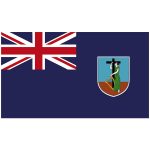
Montserrat |
Montserrat is a Caribbean island in the Leeward Islands, which is part of the chain known as the Lesser Antilles, in the West Indies. It is a British Overseas Territory . Montserrat measures approximately 16 km in length and 11 km in width, with approximately 40 km of coastline. Montserrat is nicknamed „The Emerald Isle of the Caribbean“ both for its resemblance to coastal Ireland and for the Irish ancestry of many of its inhabitants.On 18 July 1995, the previously dormant Soufrière Hills volcano, in the southern part of the island, became active. Eruptions destroyed Montserrat’s Georgian era capital city of Plymouth. |
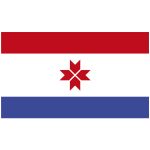
Mordovia |
The Republic of Mordovia is a federal subject of Russia . Its capital is the city of Saransk. As of the 2010 Census, the population of the republic was 834,755. Ethnic Russians and Mordvins account for the majority of the population. |
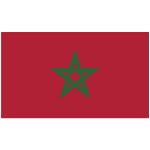
Morocco |
Morocco, officially the Kingdom of Morocco (Arabic: المملكة المغربية, translit. al-Mamlakah al-Maghribiyah, lit. |
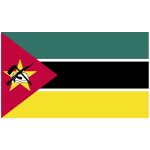
Mozambique |
Mozambique, officially the Republic of Mozambique is a country in Southeast Africa bordered by the Indian Ocean to the east, Tanzania to the north, Malawi and Zambia to the northwest, Zimbabwe to the west, and Swaziland and South Africa to the southwest. The sovereign state is separated from the Comoros, Mayotte and Madagascar by the Mozambique Channel to the east. The capital of Mozambique is Maputo while Matola is the largest city, being a suburb of Maputo. Between the first and fifth centuries AD, Bantu-speaking peoples migrated to present-day Mozambique from farther north and west. Beginning in the 11th century, Arab, Persian, and Somali merchants began settlements and establishing commercial ports along the coast, contributing to the development of a distinct Swahili culture and language.Read more |
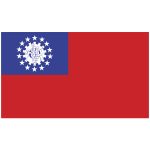 Myanmar Burma Myanmar Burma |
Myanmar, officially the Republic of the Union of Myanmar and also known as Burma, is a country in Southeast Asia. Myanmar is bordered by India and Bangladesh to its west, Thailand and Laos to its east and China to its north and northeast. To its south, about one third of Myanmar’s total perimeter of 5,876 km forms an uninterrupted coastline of 1,930 km along the Bay of Bengal and the Andaman Sea. The country’s 2014 census counted the population to be 51 million people. As of 2017, the population is about 54 million. |
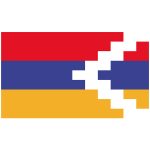
Nagorno Karabakh Republic |
Nagorno-Karabakh also known as Artsakh, is a landlocked region in the South Caucasus, within the mountainous range of Karabakh, lying between Lower Karabakh and Zangezur, and covering the southeastern range of the Lesser Caucasus mountains. The region is mostly mountainous and forested. Nagorno-Karabakh is a disputed territory, internationally recognized as part of Azerbaijan, but most of the region is governed by the Republic of Artsakh, a de facto independent state with Armenian ethnic majority established on the basis of the Nagorno-Karabakh Autonomous Oblast of the Azerbaijan Soviet Socialist Republic. Azerbaijan has not exercised political authority over the region since the advent of the Karabakh movement in 1988.Read more |
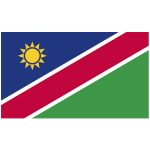
Namibia |
Namibia, officially the Republic of Namibia, is a country in southern Africa. Its western border is the Atlantic Ocean; it shares land borders with Zambia and Angola to the north, Botswana to the east and South Africa to the south and east. Although it does not border Zimbabwe, less than 200 metres of the Zambezi River separates the two countries. Namibia gained independence from South Africa on 21 March 1990, following the Namibian War of Independence. Its capital and largest city is Windhoek, and it is a member state of the United Nations, the Southern African Development Community, the African Union, and the Commonwealth of Nations. |
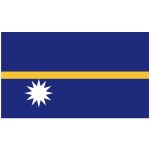
Nauru |
Nauru, officially the Republic of Nauru and formerly known as Pleasant Island, is an island country in Micronesia, a subregion of Oceania, in the Central Pacific. Its nearest neighbour is Banaba Island in Kiribati, 300 kilometres to the east. It further lies northwest of Tuvalu, north of the Solomon Islands, east-northeast of Papua New Guinea, southeast of the Federated States of Micronesia and south of the Marshall Islands. With 11,347 residents in a 21-square-kilometre area, Nauru is the smallest state in the South Pacific, smallest republic and third-smallest state by area in the world, behind only Vatican City and Monaco. Settled by people from Micronesia and Polynesia c. 1000 BC, Nauru was annexed and claimed as a colony by the German Empire in the late 19th century.Read more |

Nepal |
Nepal, officially the Federal Democratic Republic of Nepal, is a landlocked country in South Asia. It is located mainly in the Himalayas but also includes parts of the Indo-Gangetic Plain. With an estimated population of 26.4 million, it is 48th largest country by population and 93rd largest country by area. It borders China in the north and India in the south, east, and west while Bangladesh is located within only 27 km of its southeastern tip and Bhutan is separated from it by the Indian state of Sikkim. Nepal has a diverse geography, including fertile plains, subalpine forested hills, and eight of the world’s ten tallest mountains, including Mount Everest, the highest point on Earth. |
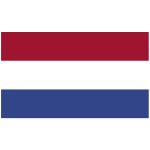
Netherlands |
The Netherlands is a country located mainly in Northwestern Europe. Together with three island territories in the Caribbean, it forms a constituent country of the Kingdom of the Netherlands. The European portion of the Netherlands consists of twelve provinces and borders Germany to the east, Belgium to the south, and the North Sea to the northwest, sharing maritime borders in the North Sea with Belgium, the United Kingdom, and Germany. The five largest cities in the Netherlands are Amsterdam, Rotterdam, The Hague, Utrecht and Eindhoven . Amsterdam is the country’s capital, while The Hague holds the seat of the States General, Cabinet and Supreme Court. |
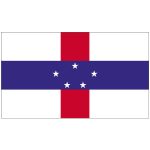
Netherlands Antilles |
The Netherlands Antilles was a constituent country of the Kingdom of the Netherlands. The country consisted of several island territories located in the Caribbean Sea. The islands were also informally known as the Dutch Antilles. The country came into being in 1954 as the autonomous successor of the Dutch colony of Curaçao and Dependencies, and was dissolved in 2010. The former Dutch colony of Surinam, although it was relatively close by on the continent of South America, did not become part of Netherlands Antilles but became a separate autonomous country in 1954. |
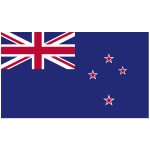
New Zealand |
New Zealand is a sovereign island country in the southwestern Pacific Ocean. The country geographically comprises two main landmasses—the North Island, and the South Island —and around 600 smaller islands. New Zealand is situated some 1,500 kilometres east of Australia across the Tasman Sea and roughly 1,000 kilometres south of the Pacific island areas of New Caledonia, Fiji, and Tonga. Because of its remoteness, it was one of the last lands to be settled by humans. During its long period of isolation, New Zealand developed a distinct biodiversity of animal, fungal, and plant life. |

Nicaragua |
Nicaragua, officially the Republic of Nicaragua, is the largest country in the Central American isthmus, bordered by Honduras to the northwest, the Caribbean to the east, Costa Rica to the south, and the Pacific Ocean to the southwest. Managua is the country’s capital and largest city and is also the third-largest city in Central America, behind Tegucigalpa and Guatemala City. The multi-ethnic population of six million includes people of indigenous, European, African, and Asian heritage. The main language is Spanish. Native tribes on the Mosquito Coast speak their own languages and English. |
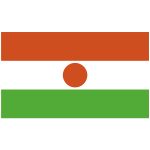
Niger |
Niger or the Niger, officially the Republic of the Niger, is a landlocked country in Western Africa named after the Niger River. Niger is bordered by Libya to the northeast, Chad to the east, Nigeria and Benin to the south, Burkina Faso and Mali to the west, and Algeria to the northwest. Niger covers a land area of almost 1,270,000 km2, making it the largest country in West Africa. Over 80% of its land area lies in the Sahara Desert. The country’s predominantly Islamic population of about 21 million mostly clusters in the far south and west of the country. |
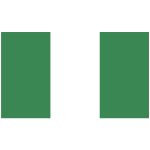
Nigeria |
The Federal Republic of Nigeria, commonly referred to as Nigeria, is a country in West Africa, bordering Benin in the west, Chad and Cameroon in the east, and Niger in the north. Its coast in the south is located on the Gulf of Guinea in the Atlantic Ocean. The federal republic comprises 36 states and the Federal Capital Territory, where the capital, Abuja is located. Nigeria is officially a democratic secular country.Nigeria has been home to a number of kingdoms and tribal states over the millennia. The modern state originated from British colonial rule beginning in the 19th century, and took its present territorial shape with the merging of the Southern Nigeria Protectorate and Northern Nigeria Protectorate in 1914. |
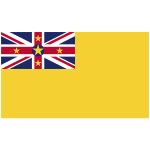
Niue |
Niue is an island country in the South Pacific Ocean, 2,400 kilometres northeast of New Zealand, east of Tonga, south of Samoa, and west of the Cook Islands. Niue’s land area is about 261 square kilometres and its population, predominantly Polynesian, was about 1,600 in 2016. The island is commonly referred to as „The Rock“, which comes from the traditional name „Rock of Polynesia“. Niue is one of the world’s largest coral islands. The terrain of island has two noticeable levels. |
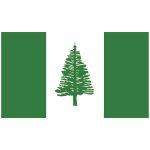
Norfolk Island |
Norfolk Island is a small island in the Pacific Ocean located between Australia, New Zealand, and New Caledonia, 1,412 kilometres directly east of mainland Australia’s Evans Head, and about 900 kilometres from Lord Howe Island. Together with the two neighbouring islands Phillip Island and Nepean Island it forms one of the Commonwealth of Australia’s external territories. At the 2016 Australian census, it had 1748 inhabitants living on a total area of about 35 km2 . Its capital is Kingston.
The first settlers in Norfolk Island were East Polynesians but they were long gone when Great Britain settled it as part of its 1788 settlement of Australia. |
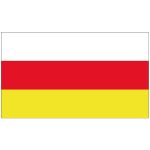
North Ossetia |
The Republic of North Ossetia-Alania is a federal subject of Russia . Its population according to the 2010 Census was 712,980. Its capital is the city of Vladikavkaz.
== Name == |
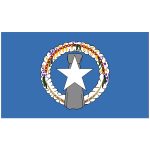
Northern Mariana Islands |
The Northern Mariana Islands, officially the Commonwealth of the Northern Mariana Islands, is an insular area and commonwealth of the United States consisting of 15 islands in the northwestern Pacific Ocean. The CNMI includes all islands in the Mariana Archipelago except Guam which is the southernmost island of the chain and a separate U.S. territory. Along with Guam, it is the westernmost point and territory of the United States. The United States Department of the Interior cites a landmass of 183.5 square miles . According to the 2010 United States Census, 53,883 people were living in the CNMI at that time.Read more |
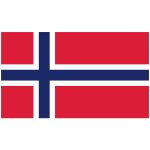
Norway |
Norway, officially the Kingdom of Norway, is a Nordic country in Northwestern Europe whose core territory comprises the western and northernmost portion of the Scandinavian Peninsula; the remote island of Jan Mayen and the archipelago of Svalbard are also part of the Kingdom of Norway. The Antarctic Peter I Island and the sub-Antarctic Bouvet Island are dependent territories and thus not considered part of the kingdom. Norway also lays claim to a section of Antarctica known as Queen Maud Land. Norway has a total area of 385,252 square kilometres and a population of 5,302,778 . The country shares a long eastern border with Sweden .Read more |
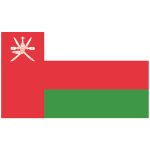
Oman |
Oman, officially the Sultanate of Oman, is an Arab country on the southeastern coast of the Arabian Peninsula in Western Asia. Its official religion is Islam. Holding a strategically important position at the mouth of the Persian Gulf, the country shares land borders with the United Arab Emirates to the northwest, Saudi Arabia to the west, and Yemen to the southwest, and shares marine borders with Iran and Pakistan. The coast is formed by the Arabian Sea on the southeast and the Gulf of Oman on the northeast. The Madha and Musandam exclaves are surrounded by the UAE on their land borders, with the Strait of Hormuz and Gulf of Oman forming Musandam’s coastal boundaries.Read more |
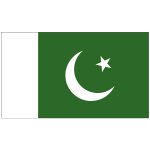
Pakistan |
Pakistan, officially the Islamic Republic of Pakistan, is a country in South Asia. It is the fifth-most populous country with a population exceeding 212,742,631 people. In area, it is the 33rd-largest country, spanning 881,913 square kilometres . Pakistan has a 1,046-kilometre coastline along the Arabian Sea and Gulf of Oman in the south and is bordered by India to the east, Afghanistan to the west, Iran to the southwest, and China in the far northeast. It is separated narrowly from Tajikistan by Afghanistan’s Wakhan Corridor in the northwest, and also shares a maritime border with Oman. |
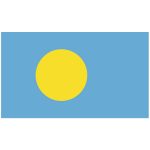
Palau |
Palau, officially the Republic of Palau, is an island country located in the western Pacific Ocean. The country contains approximately 340 islands, forming the western chain of the Caroline Islands in Micronesia, and has an area of 466 square kilometers . The most populous island is Koror. The capital Ngerulmud is located on the nearby island of Babeldaob, in Melekeok State. Palau shares maritime boundaries with the Philippines, Indonesia, and the Federated States of Micronesia. |
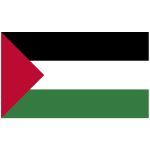
Palestine |
Palestine, officially the State of Palestine, is a de jure sovereign state in the Middle East claiming the West Bank and Gaza Strip with East Jerusalem as the designated capital, although its administrative center is currently located in Ramallah. Most of the areas claimed by the State of Palestine have been occupied by Israel since 1967 in the consequence of the Six-Day War. The population is 4,550,368 as of 2014, ranked 123rd in the world. After World War II, in 1947, the United Nations adopted a Partition Plan for Mandatory Palestine recommending the creation of independent Arab and Jewish states and an internationalized Jerusalem. After the establishment of a Jewish state in Eretz Israel, to be known as the State of Israel on 14 May 1948, neighboring Arab armies invaded the former British mandate on the next day and fought the Israeli forces.Read more |
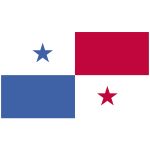
Panama |
Panama, officially the Republic of Panama, is a country in Central America, bordered by Costa Rica to the west, Colombia to the southeast, the Caribbean Sea to the north and the Pacific Ocean to the south. The capital and largest city is Panama City, whose metropolitan area is home to nearly half the country’s 4 million people.Panama was inhabited by indigenous tribes before Spanish colonists arrived in the 16th century. It broke away from Spain in 1821 and joined the Republic of Gran Colombia, a union of Nueva Granada, Ecuador, and Venezuela. After Gran Colombia dissolved in 1831, Panama and Nueva Granada eventually became the Republic of Colombia. With the backing of the United States, Panama seceded from Colombia in 1903, allowing the construction of the Panama Canal to be completed by the US Army Corps of Engineers between 1904 and 1914. |
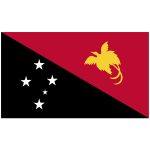
Papua New Guinea |
Papua New Guinea, officially the Independent State of Papua New Guinea, is an Oceanian country that occupies the eastern half of the island of New Guinea and its offshore islands in Melanesia, a region of the southwestern Pacific Ocean north of Australia. Its capital, located along its southeastern coast, is Port Moresby. The western half of New Guinea forms the Indonesian provinces of Papua and West Papua. At the national level, after being ruled by three external powers since 1884, Papua New Guinea established its sovereignty in 1975. This followed nearly 60 years of Australian administration, which started during World War I. It became an independent Commonwealth realm in 1975 with Queen Elizabeth II as its head of state and became a member of the Commonwealth of Nations in its own right.Read more |
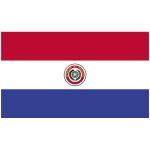
Paraguay |
Paraguay, officially the Republic of Paraguay, is one of only two landlocked countries in South America . It is bordered by Argentina to the south and southwest, Brazil to the east and northeast, and Bolivia to the northwest. Paraguay lies on both banks of the Paraguay River, which runs through the center of the country from north to south. Due to its central location in South America, it is sometimes referred to as Corazón de Sudamérica .Spanish conquistadores arrived in 1524 after navigating northwards from the Río de la Plata to the Paraná River, and finally up the Paraguay River. In 1537, they established the city of Asunción, which was the first capital of the Governorate of Paraguay and Río de la Plata. |
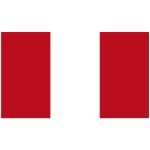
Peru |
Peru, officially the Republic of Peru, is a country in western South America. It is bordered in the north by Ecuador and Colombia, in the east by Brazil, in the southeast by Bolivia, in the south by Chile, and in the west by the Pacific Ocean. Peru is an extremely biodiverse country with habitats ranging from the arid plains of the Pacific coastal region in the west to the peaks of the Andes mountains vertically extending from the north to the southeast of the country to the tropical Amazon Basin rainforest in the east with the Amazon river.Peruvian territory was home to several ancient cultures, ranging from the Norte Chico civilization in the 32nd century BC, the oldest civilization in the Americas, to the Inca Empire, the largest and most sophisticated state in pre-Columbian America. The Spanish Empire conquered the region in the 16th century and established a Viceroyalty that encompassed most of its South American colonies, with its capital in Lima. Peru formally proclaimed independence in 1821, and following the military campaigns of José de San Martín and Simón Bolívar, and the decisive battle of Ayacucho, Peru secured independence in 1824. |

Philippines |
The Philippines, officially the Republic of the Philippines, is an archipelagic country in Southeast Asia. Situated in the western Pacific Ocean, it consists of about 7,641 islands that are categorized broadly under three main geographical divisions from north to south: Luzon, Visayas, and Mindanao. The capital city of the Philippines is Manila and the most populous city is Quezon City, both part of Metro Manila. Bounded by the South China Sea on the west, the Philippine Sea on the east and the Celebes Sea on the southwest, the Philippines shares maritime borders with Taiwan to the north, Vietnam to the west, Palau to the east and Malaysia and Indonesia to the south. The Philippines‘ location on the Pacific Ring of Fire and close to the equator makes the Philippines prone to earthquakes and typhoons, but also endows it with abundant natural resources and some of the world’s greatest biodiversity.Read more |
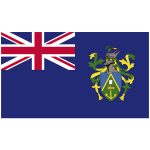
Pitcairn Island |
The Pitcairn Islands, officially Pitcairn, Henderson, Ducie and Oeno Islands, are a group of four volcanic islands in the southern Pacific Ocean that form the sole British Overseas Territory in the South Pacific. The four islands – Pitcairn proper, Henderson, Ducie, and Oeno – are scattered across several hundred miles of ocean and have a combined land area of about 47 square kilometres . Henderson Island accounts for 86% of the land area, but only Pitcairn Island is inhabited. Pitcairn is the least populous national jurisdiction in the world. The Pitcairn Islanders are a biracial ethnic group descended mostly from nine Bounty mutineers and the handful of Tahitians who accompanied them, an event that has been retold in many books and films.Read more |
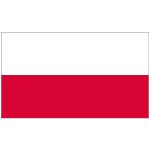
Poland |
Poland, officially the Republic of Poland, is a country located in Central Europe. It is divided into 16 administrative subdivisions, covering an area of 312,696 square kilometres, and has a largely temperate seasonal climate. With a population of approximately 38.5 million people, Poland is the sixth most populous member state of the European Union. Poland’s capital and largest metropolis is Warsaw. Other major cities include Kraków, Łódź, Wrocław, Poznań, Gdańsk and Szczecin. |
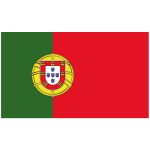
Portugal |
Portugal, officially the Portuguese Republic, is a country located mostly on the Iberian Peninsula in southwestern Europe. It is the westernmost sovereign state of mainland Europe. It is bordered to the west and south by the Atlantic Ocean and to the north and east by Spain. Its territory also includes the Atlantic archipelagos of the Azores and Madeira, both autonomous regions with their own regional governments. Portugal is the oldest state on the Iberian Peninsula and one of the oldest in Europe, its territory having been continuously settled, invaded and fought over since prehistoric times.Read more |

Puerto Rico |
Puerto Rico, officially the Commonwealth of Puerto Rico and briefly called Porto Rico, is an unincorporated territory of the United States located in the northeast Caribbean Sea, approximately 1,000 miles southeast of Miami, Florida. An archipelago among the Greater Antilles, Puerto Rico includes the main island of Puerto Rico and a number of smaller ones, such as Mona, Culebra, and Vieques. The capital and most populous city is San Juan. Its official languages are Spanish and English, though Spanish predominates.Read more |
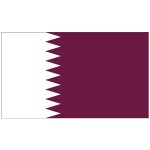
Qatar |
Qatar, officially the State of Qatar, is a country located in Western Asia, occupying the small Qatar Peninsula on the northeastern coast of the Arabian Peninsula. Whether the sovereign state should be regarded as a constitutional or an absolute monarchy is disputed. Its sole land border is with neighboring Gulf Cooperation Council monarchy Saudi Arabia to the south, with the rest of its territory surrounded by the Persian Gulf. An arm of the Persian Gulf separates Qatar from the nearby island monarchy of Bahrain. In early 2017, Qatar’s total population was 2.6 million: 313,000 Qatari citizens and 2.3 million expatriates.Read more |

Republika Srpska |
Republika Srpska is one of two constitutional and legal entities of Bosnia and Herzegovina, the other being the Federation of Bosnia and Herzegovina. The entities are largely autonomous. Its de jure capital city is Sarajevo, but the de facto capital and administrative centre is Banja Luka.The territory of what is Republika Srpska was first inhabited by several Illyrian and Celtic civilizations during the Neolithic age. After centuries of Ottoman and Austro-Hungarian rule, it became part of the Kingdom of Serbs, Croats and Slovenes in 1918 following World War I, which was renamed to Yugoslavia in 1929. Following World War II in Yugoslavia, it became part of the second Yugoslavia in 1945 as part of the Socialist Republic of Bosnia and Herzegovina. |
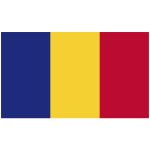
Romania |
Romania is a country located at the crossroads of Central, Eastern, and Southeastern Europe. It borders the Black Sea to south-east, Bulgaria to the south, Ukraine to the north, Hungary to the west, Serbia to south-west, and Moldova to the east. It has a predominantly temperate-continental climate. With a total area of 238,397 square kilometres, Romania is the 12th largest country and also the 7th most populous member state of the European Union, having almost 20 million inhabitants. Its capital and largest city is Bucharest and other major urban areas include Iași, Timișoara, Cluj-Napoca, and Constanța. |
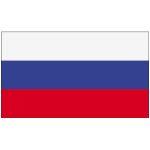
Russia |
Russia, officially the Russian Federation, is a country in Eurasia. At 17,125,200 square kilometres, Russia is the largest country in the world by area, covering more than one-eighth of the Earth’s inhabited land area, and the ninth most populous, with over 144 million people as of December 2017, excluding Crimea. About 77% of the population live in the western, European part of the country. |
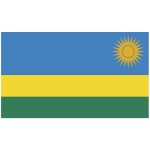
Rwanda |
Rwanda, officially the Republic of Rwanda, is a country in Central and East Africa and one of the smallest countries on the African mainland. Located a few degrees south of the Equator, Rwanda is bordered by Uganda, Tanzania, Burundi and the Democratic Republic of the Congo. Rwanda is in the African Great Lakes region and is highly elevated; its geography is dominated by mountains in the west and savanna to the east, with numerous lakes throughout the country. The climate is temperate to subtropical, with two rainy seasons and two dry seasons each year. The population is young and predominantly rural, with a density among the highest in Africa.Read more |
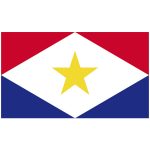
Saba |
Saba is a Caribbean island which is the smallest special municipality of the Netherlands. It consists largely of the potentially active volcano Mount Scenery, at 887 metres the highest point of the entire Netherlands. Saba has a land area of 13 square kilometres . As of January 2013, the population was 1,991 inhabitants, with a population density of 150 inhabitants per square kilometre . Its towns and major settlements are The Bottom, Windwardside, Hell’s Gate and St.Read more |
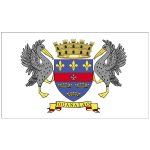
Saint Barthelemy |
Saint Barthélemy, officially the Territorial collectivity of Saint-Barthélemy, called Ouanalao by the indigenous people, is an overseas collectivity of France in the West Indies. Often abbreviated to St-Barth in French, and St. Barths or St. Barts in English, the island lies about 35 kilometres southeast of St. Martin and north of St.Read more |
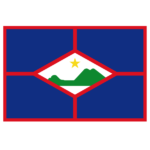
Saint Eustatius |
Sint Eustatius is an island in the Caribbean. The island lies in the northern Leeward Islands portion of the West Indies, southeast of the Virgin Islands. Sint Eustatius is immediately to the northwest of Saint Kitts, and to the southeast of Saba. The regional capital is Oranjestad. Formerly part of the Netherlands Antilles, Sint Eustatius became a special municipality within the Netherlands on 10 October 2010. Together with Bonaire and Saba it forms the BES islands.Read more |
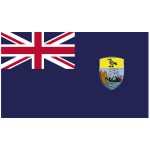
Saint Helena |
Saint Helena is a volcanic tropical island in the South Atlantic Ocean, 4,000 kilometres east of Rio de Janeiro and 1,950 kilometres west of the Cunene River, which marks the border between Namibia and Angola in southwestern Africa. It is part of the British Overseas Territory of Saint Helena, Ascension and Tristan da Cunha. Saint Helena measures about 16 by 8 kilometres and has a population of 4,534 . It was named after Saint Helena of Constantinople. It is one of the most remote islands in the world, and was uninhabited when discovered by the Portuguese in 1502.Read more |
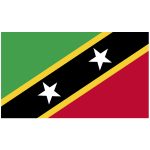
Saint Kitts and Nevis |
Saint Kitts and Nevis, also known as the Federation of Saint Christopher and Nevis, is an island country in the West Indies. Located in the Leeward Islands chain of the Lesser Antilles, it is the smallest sovereign state in the Western Hemisphere, in both area and population. The country is a Commonwealth realm, with Queen Elizabeth II as head of state. The capital city is Basseterre on the larger island of Saint Kitts. The smaller island of Nevis lies approximately 3 km southeast of Saint Kitts across a shallow channel called „The Narrows“.Read more |
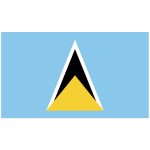
Saint Lucia |
Saint Lucia is a sovereign island country in the West Indies in the eastern Caribbean Sea on the boundary with the Atlantic Ocean. Part of the Lesser Antilles, it is located north/northeast of the island of Saint Vincent, northwest of Barbados and south of Martinique. It covers a land area of 617 km2 and reported a population of 165,595 in the 2010 census. Its capital is Castries. The French were the island’s first European settlers.Read more |
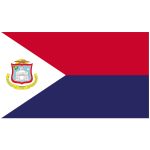
Saint Martin |
Saint Martin is an island in the northeast Caribbean Sea, approximately 300 km east of Puerto Rico. The 87-square-kilometre island is divided roughly 60/40 between the French Republic and the Kingdom of the Netherlands, but the two parts are roughly equal in population. The division dates to 1648. The southern Dutch part comprises Sint Maarten and is one of four constituent countries that form the Kingdom of the Netherlands. The northern French part comprises the Collectivity of Saint Martin and is an overseas collectivity of France. |
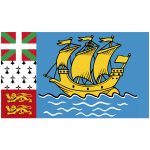
Saint Pierre and Miquelon |
Saint Pierre and Miquelon, officially the Overseas Collectivity of Saint Pierre and Miquelon, is a self-governing territorial overseas collectivity of France, situated in the northwestern Atlantic Ocean near the Canadian province of Newfoundland and Labrador. It is the only part of New France that remains under French control, with an area of 242 square kilometres and a population of 6,080 at the January 2011 census.The islands are situated at the entrance of Fortune Bay, which extends into the southwestern coast of Newfoundland, near the Grand Banks. They are 3,819 kilometres from Brest, the nearest point in Metropolitan France, and 25 kilometres from the Burin Peninsula of Newfoundland.
== Etymology == |

Saint Vincent and the Grenadines |
Saint Vincent and the Grenadines is a country in the Lesser Antilles island arc, in the southern portion of the Windward Islands, which lies in the West Indies at the southern end of the eastern border of the Caribbean Sea where the latter meets the Atlantic Ocean. The sovereign state is also frequently known simply as Saint Vincent. Its 389 km2 territory consists of the main island of Saint Vincent and the northern two-thirds of the Grenadines, which are a chain of smaller islands stretching south from Saint Vincent Island to Grenada. Most of Saint Vincent and the Grenadines lies within the Hurricane Belt. To the north of Saint Vincent lies Saint Lucia and to the east is Barbados.Read more |

Sakha Republic |
The Sakha Republic, simply Sakha, is a federal subject of Russia . It has a population of 958,528, consisting mainly of ethnic Yakuts and Russians. |
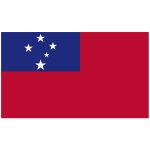
Samoa |
Samoa, officially the Independent State of Samoa and, until 4 July 1997, known as Western Samoa, is a country consisting of two main islands Savai’i and Upolu with four smaller islands surrounding the landmasses. The capital city is Apia. The Lapita people discovered and settled the Samoan Islands around 3,500 years ago. They developed a unique Samoan language and Samoan cultural identity. Samoa is a unitary parliamentary democracy with eleven administrative divisions.Read more |
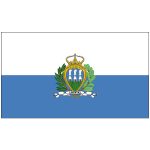
San Marino |
San Marino, officially the Republic of San Marino, also known as the Most Serene Republic of San Marino, is an enclaved microstate surrounded by Italy, situated on the Italian Peninsula on the northeastern side of the Apennine Mountains. Its size is just over 61 km2, with a population of 33,562. Its capital is the City of San Marino and its largest settlement is Dogana in the municipality of Serravalle. San Marino has the smallest population of all the members of the Council of Europe. The country takes its name from Marinus, a stonemason originating from the Roman colony on the island of Rab, in modern-day Croatia.Read more |
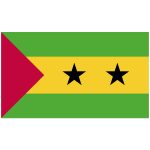
Sao Tomé and Principe |
São Tomé and Príncipe, officially the Democratic Republic of São Tomé and Príncipe, is an island country in the Gulf of Guinea, off the western equatorial coast of Central Africa. It consists of two archipelagos around the two main islands of São Tomé and Príncipe, located about 140 kilometres apart and about 250 and 225 kilometres off the northwestern coast of Gabon, respectively. The islands were uninhabited until their discovery by Portuguese explorers in the 15th century. Gradually colonised and settled by the Portuguese throughout the 16th century, they collectively served as a vital commercial and trade center for the Atlantic slave trade. The rich volcanic soil and close proximity to the Equator made São Tomé and Príncipe ideal for sugar cultivation, followed later by cash crops such as coffee and cocoa; the lucrative plantation economy was heavily dependent upon imported African slaves.Read more |
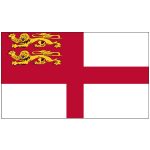
Sark |
Sark is an island in the Channel Islands in the southwestern English Channel, off the coast of Normandy, France. It is a royal fief, which forms part of the Bailiwick of Guernsey, with its own set of laws based on Norman law and its own parliament. It has a population of about 500. Sark has an area of 2.10 square miles .Sark is one of the few remaining places in the world where cars are banned from roads and only tractors and horse-drawn vehicles are allowed. In 2011, Sark was designated as a Dark Sky Community and the first Dark Sky Island in the world. |
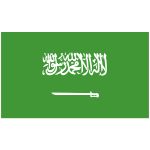
Saudi Arabia |
Saudi Arabia, officially the Kingdom of Saudi Arabia, is a country in Western Asia constituting the bulk of the Arabian Peninsula. With a land area of approximately 2,150,000 km2, Saudi Arabia is the largest sovereign state in the Middle East, geographically the fifth-largest in Asia, second-largest in the Arab world after Algeria and 12th-largest in the world. Saudi Arabia is bordered by Jordan and Iraq to the north, Kuwait to the northeast, Qatar, Bahrain and the United Arab Emirates to the east, Oman to the southeast and Yemen to the south. It is separated from Israel and Egypt by the Gulf of Aqaba. It is the only nation with both a Red Sea coast and a Persian Gulf coast, and most of its terrain consists of arid desert, lowland and mountains. |

Sealand, Principality of |
The Principality of Sealand, commonly known as Sealand, is a micronation that claims Roughs Tower, an offshore platform in the North Sea approximately 12 kilometres off the coast of Suffolk, as its territory. Roughs Tower is a disused Maunsell Sea Fort, originally called HM Fort Roughs, built as an anti-aircraft gun platform by the British during World War II.Since 1967, the decommissioned HM Fort Roughs has been occupied by family and associates of Paddy Roy Bates, who claim that it is an independent sovereign state. Bates seized it from a group of pirate radio broadcasters in 1967 with the intention of setting up his own station at the site. He attempted to establish Sealand as a nation state in 1975 with the writing of a national constitution and establishment of other national symbols.While it has been described as the world’s smallest country, Sealand is not officially recognised by any established sovereign state in spite of Sealand’s government’s claim that it has been de facto recognised by the United Kingdom and Germany. The United Nations Convention on the Law of the Sea, in force since 1994, states „Artificial islands, installations and structures do not possess the status of islands. |

Senegal |
Senegal, officially the Republic of Senegal, is a country in West Africa. Senegal is bordered by Mauritania in the north, Mali to the east, Guinea to the southeast, and Guinea-Bissau to the southwest. Senegal also borders The Gambia, a country occupying a narrow sliver of land along the banks of the Gambia River, which separates Senegal’s southern region of Casamance from the rest of the country. Senegal also shares a maritime border with Cape Verde. Senegal’s economic and political capital is Dakar. |
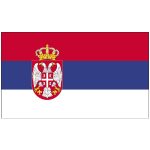
Serbia |
Serbia, officially the Republic of Serbia, is a country situated at the crossroads of Central and Southeast Europe in the southern Pannonian Plain and the central Balkans. The sovereign state borders Hungary to the north; Romania and Bulgaria to the east; Macedonia to the south; Croatia, Bosnia and Herzegovina, Montenegro to the west and claims a border with Albania through the disputed territory of Kosovo. Serbia numbers around 7 million residents. Its capital, Belgrade, ranks among the oldest and largest cities in southeastern Europe.Following the Slavic migrations to the Balkans postdating the 6th century, Serbs established several sovereign states in the early Middle Ages which at times nominally recognized Byzantine, Frankish and Hungarian overrule. The Serbian Kingdom obtained recognition by the Vatican and Constantinople in 1217, reaching its peak in 1346 as a relatively short-lived Serbian Empire. |
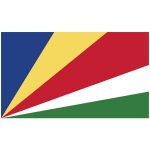
Seychelles |
Seychelles, officially the Republic of Seychelles, is a archipelago country in the Indian Ocean. The capital of the 115-island country, Victoria, lies 1,500 kilometres east of mainland East Africa. Other nearby island countries and territories include Comoros, Mayotte, Madagascar, Réunion and Mauritius to the south. With a population of roughly 94,228, it has the smallest population of any sovereign African country.The sovereign state of Seychelles is a member of the African Union, the Southern African Development Community, the Commonwealth of Nations, and the United Nations. After proclamation of independence from the United Kingdom in 1976, Seychelles has developed from a largely agricultural society to a market-based diversified economy, with agriculture being supplanted by rapidly rising service and public sectors as well as tourism. |

Sierra Leone |
Sierra Leone, officially the Republic of Sierra Leone, is a country in West Africa. It is bordered by Guinea to the northeast, Liberia to the southeast and the Atlantic Ocean to the southwest. It has a tropical climate, with a diverse environment ranging from savanna to rainforests. The country has a total area of 71,740 km2 and a population of 7,075,641 as of the 2015 census. Sierra Leone is a constitutional republic with a directly elected president and a unicameral legislature. |
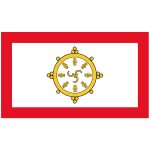
Sikkim |
Sikkim is a state in northeast India. It borders Tibet in the north and northeast, Bhutan in the east, Nepal in the west, and West Bengal in the south. Sikkim is also located close to India’s Siliguri Corridor near Bangladesh. Sikkim is the least populous and second smallest among the Indian states. A part of the Eastern Himalaya, Sikkim is notable for its biodiversity, including alpine and subtropical climates, as well as being a host to Kanchenjunga, the highest peak in India and third highest on Earth. |
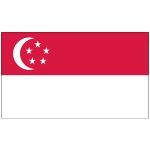
Singapore |
Singapore, officially the Republic of Singapore, is a sovereign city-state and island country in Southeast Asia. It lies one degree north of the equator, at the southern tip of the Malay Peninsula, with Indonesia’s Riau Islands to the south and Peninsular Malaysia to the north. Singapore’s territory consists of one main island along with 62 other islets. Since independence, extensive land reclamation has increased its total size by 23% . The country is known for its transition from third world to first world in a single generation, under the leadership of its founding father, Lee Kuan Yew.Stamford Raffles founded colonial Singapore in 1819 as a trading post of the British East India Company. |
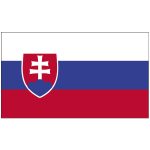
Slovakia |
Slovakia, officially the Slovak Republic, is a landlocked country in Central Europe. It is bordered by Poland to the north, Ukraine to the east, the Czech Republic to the west, Hungary to the south, and Austria to the southwest. Slovakia’s territory spans about 49,000 square kilometres and is mostly mountainous. The population is over 5.4 million and consists mostly of Slovaks. The capital and largest city is Bratislava, second largest city is Košice. |
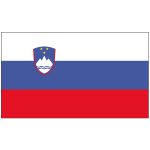
Slovenia |
Slovenia, officially the Republic of Slovenia, is a country located in southern Central Europe at the crossroads of the main European cultural and trade routes. It is bordered by Italy to the west, Austria to the north, Hungary to the northeast, Croatia to the southeast, and the Adriatic Sea to the southwest. It covers 20,273 square kilometers and has a population of 2.07 million. One of the successor states of the former Yugoslavia, Slovenia is a parliamentary republic and a member of the United Nations, European Union, and NATO. The capital and largest city is Ljubljana.Slovenia is mostly mountainous with a mainly continental climate, with the exception of the Slovene Littoral, which has a sub-Mediterranean climate, and the northwest, which has an Alpine climate. Additionally, the Dinaric Alps and the Pannonian Plain meet on the territory of Slovenia. |
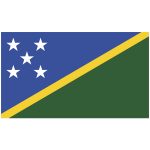
Solomon Island |
Solomon Islands is a country consisting of six major islands and over 900 smaller islands in Oceania lying to the east of Papua New Guinea and northwest of Vanuatu and covering a land area of 28,400 square kilometres . The country’s capital, Honiara, is located on the island of Guadalcanal. The country takes its name from the Solomon Islands archipelago, which is a collection of Melanesian islands that also includes the North Solomon Islands, but excludes outlying islands, such as Rennell and Bellona, and the Santa Cruz Islands. The islands have been inhabited for thousands of years. In 1568, the Spanish navigator Álvaro de Mendaña was the first European to visit them, naming them the Islas Salomón.Read more |
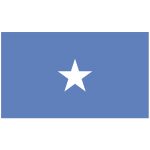
Somalia |
Somalia, officially the Federal Republic of Somalia, is a sovereign state with its territory located in the Horn of Africa. It is bordered by Ethiopia to the west, Djibouti to the northwest, the Gulf of Aden to the north, the Guardafui Channel and Indian Ocean to the east, and Kenya to the southwest. It is separated from Socotra by the Guardafui Channel in the northeast. |
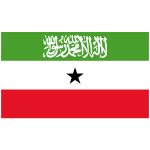
Somaliland |
Somaliland, officially the Republic of Somaliland, is a self-declared state, internationally considered to be an autonomous region of Somalia.The government of the de facto state of Somaliland regards itself as the successor state to the former British Somaliland protectorate, which, in the form of the briefly independent State of Somaliland, united as scheduled on 1 July 1960 with the Trust Territory of Somaliland to form the Somali Republic.Somaliland lies in northwestern Somalia, on the southern coast of the Gulf of Aden. It is bordered by the remainder of Somalia to the east, Djibouti to the northwest, and Ethiopia to the south and west. Its claimed territory has an area of 176,120 square kilometres, with approximately 4 million residents. The capital and the largest city is Hargeisa, with the population of around 1,500,000 residents.In 1988, the Siad Barre government began a crackdown against the Hargeisa-based Somali National Movement and other militant groups, which were among the events that led to the Somali Civil War. The conflict left the country’s economic and military infrastructure severely damaged. |
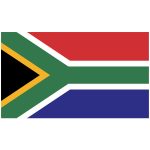
South Africa, Republic of |
The South African Republic, often referred to as the Transvaal or as the Transvaal Republic, was an independent and internationally recognised country in Southern Africa from 1852 to 1902. The country defeated the British in what is often referred to as the First Boer War and remained independent until the end of the Second Boer War on 31 May 1902, when it was forced to surrender to the British. The territory of the ZAR became known after this war as the Transvaal Colony. After the outbreak of the First World War a small number of Boers staged the Maritz Rebellion by declaring the reinstatement of the South African Republic and aligned themselves with the Central Powers. The rebellion was put down by British forces in February 1915.Read more |
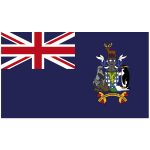
South Georgia and the South Sandwich Islands |
South Georgia and the South Sandwich Islands is a British Overseas Territory in the southern Atlantic Ocean. It is a remote and inhospitable collection of islands, consisting of South Georgia and a chain of smaller islands known as the South Sandwich Islands. South Georgia is 165 km long and 1 to 35 km wide and is by far the largest island in the territory. The South Sandwich Islands lie about 700 km southeast of South Georgia. The territory’s total land area is 3,903 km2 . |
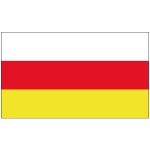
South Ossetia |
South Ossetia, officially the Republic of South Ossetia–the State of Alania or Tskhinvali Region, is a disputed territory in the South Caucasus, in the northern part of the internationally recognised Georgian territory. It has a population of 53,000 people who live in an area of 3,900 km2, south of the Russian Caucasus, with 30,000 living in Tskhinvali. The separatist polity, Republic of South Ossetia, is recognised as a state by Russia, Venezuela, Nicaragua, Nauru, and Syria. While Georgia lacks control over South Ossetia, the Georgian government and most members of the United Nations consider the territory part of Georgia, whose constitution designates the area as „the former autonomous district of South Ossetia“, in reference to the former Soviet autonomous oblast disbanded in 1990.Georgia does not recognise the existence of South Ossetia as a political entity, and therefore its territory does not correspond to any Georgian administrative area, with most of the territory included into Shida Kartli region. The area is often informally referred to as the legally undefined Tskhinvali Region in Georgia and in international organisations when neutrality is deemed necessary. |
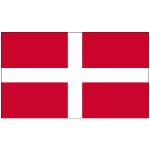
Sovereign Military Order of Malta |
The Sovereign Military Hospitaller Order of Saint John of Jerusalem, of Rhodes and of Malta, also known as the Sovereign Military Order of Malta or the Order of Malta, is a Catholic lay religious order traditionally of military, chivalrous and noble nature. It was founded as the Knights Hospitaller circa 1099 in Jerusalem, Kingdom of Jerusalem, by the Blessed Gerard, making it the world’s oldest surviving chivalric order. Headquartered in Palazzo Malta in Rome, its mission is summed up in its motto: Tuitio fidei et obsequium pauperum, „Defence of the faith and assistance to the poor“. The order is led by an elected Prince and Grand Master.The Sovereign Military Order of Malta, now based in Rome, is the present-day continuation of the medieval Knights Hospitaller, with origins in the Fraternitas Hospitalaria hospital founded circa 1048 by merchants from the Duchy of Amalfi in the Muristan district of Jerusalem, Fatimid Caliphate, to provide medical care for pilgrims to the Holy Land. Following the conquest of Jerusalem in 1099 during the First Crusade and the subsequent loss of the Kingdom of Jerusalem to the Mamluk Sultanate, it became a military order to protect Christians against Islamic persecution and was recognised as sovereign in 1113 by Pope Paschal II. It operated from Cyprus, Rhodes, Malta, over which it was sovereign until the French occupation, and from Palazzo Malta in Rome from 1834 until the present. |
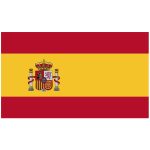
Spain |
Spain, officially the Kingdom of Spain, is a country mostly located on the Iberian Peninsula in Europe. The country’s mainland is bordered to the south and east by the Mediterranean Sea except for a small land boundary with Gibraltar; to the north and northeast by France, Andorra, and the Bay of Biscay; and to the west and northwest by Portugal and the Atlantic Ocean. Spanish territory includes two large archipelagoes, the Balearic Islands in the Mediterranean Sea and the Canary Islands off the African Atlantic coast, two cities, Ceuta and Melilla, on the African mainland and several small islands in the Alboran Sea near the African coast. Spain is the only European country to have a border with an African country .With an area of 505,990 km2, Spain is the largest country in Southern Europe, the second largest country in Western Europe and the European Union, and the fourth largest country in the European continent. By population, Spain is the sixth largest in Europe and the fifth in the European Union. |
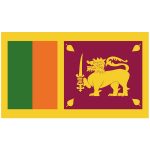
Sri Lanka |
Sri Lanka, officially the Democratic Socialist Republic of Sri Lanka, is an island country in South Asia, located in the Indian Ocean to the southwest of the Bay of Bengal and to the southeast of the Arabian Sea. It is separated from the Indian subcontinent by the Gulf of Mannar and the Palk Strait. The legislative capital, Sri Jayawardenepura Kotte, is a suburb of the commercial capital and largest city, Colombo. Sri Lanka’s documented history spans 3,000 years, with evidence of pre-historic human settlements dating back to at least 125,000 years. It has a rich cultural heritage and the first known Buddhist writings of Sri Lanka, the Pāli Canon, date back to the Fourth Buddhist council in 29 BC. Its geographic location and deep harbours made it of great strategic importance from the time of the ancient Silk Road through to the modern Maritime Silk Road.Sri Lanka was known from the beginning of British colonial rule as Ceylon .Read more |
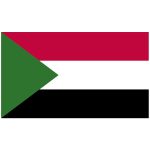
Sudan, North |
Sudan, also known as North Sudan since South Sudan’s independence and officially the Republic of the Sudan, is a country in Northeast Africa. It is bordered by Egypt to the north, the Red Sea, Eritrea and Ethiopia to the east, South Sudan to the south, the Central African Republic to the southwest, Chad to the west, and Libya to the northwest. It houses 37 million people and occupies a total area of 1,861,484 square kilometres, making it the third-largest country in Africa. Sudan’s predominant religion is Islam, and its official languages are Arabic and English. The capital is Khartoum, located at the confluence of the Blue and White Nile. |
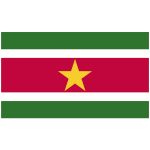
Suriname |
Suriname, officially known as the Republic of Suriname, is a country on the northeastern Atlantic coast of South America. It is bordered by the Atlantic Ocean to the north, French Guiana to the east, Guyana to the west and Brazil to the south. At just under 165,000 square kilometers, it is the smallest sovereign state in South America. Suriname has a population of approximately 558,368, most of whom live on the country’s north coast, in and around the capital and largest city, Paramaribo. Suriname was long inhabited by various indigenous people before being invaded and contested by European powers from the 16th century, eventually coming under Dutch rule in the late 17th century.Read more |
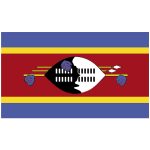
Swaziland |
Swaziland or eSwatini, officially the Kingdom of Eswatini since 19 April 2018, is a landlocked country in Southern Africa. It is bordered by Mozambique to its northeast and South Africa to its north, west and south. The country and its people take their names from Mswati II, the 19th-century king under whose rule Swazi territory was expanded and unified.At no more than 200 kilometres north to south and 130 kilometres east to west, Swaziland is one of the smallest countries in Africa; despite this, its climate and topography are diverse, ranging from a cool and mountainous highveld to a hot and dry lowveld. The population is primarily ethnic Swazis, whose language is siSwati. They established their kingdom in the mid-18th century under the leadership of Ngwane III; the present boundaries were drawn up in 1881 in the midst of the Scramble for Africa. |
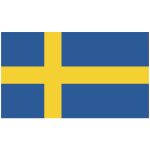
Sweden |
Sweden, officially the Kingdom of Sweden, is a Scandinavian Nordic country in Northern Europe. It borders Norway to the west and north and Finland to the east, and is connected to Denmark in the southwest by a bridge-tunnel across the Öresund, a strait at the Swedish-Danish border. At 450,295 square kilometres, Sweden is the third-largest country in the European Union by area. Sweden has a total population of 10.2 million of which 2.4 million has a foreign background. It has a low population density of 22 inhabitants per square kilometre . |
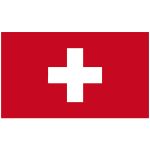
Switzerland |
Switzerland, officially the Swiss Confederation, is a country in Europe. It consists of 26 cantons, and the city of Bern is the seat of the federal authorities. The sovereign state is a federal republic situated in western, central and southern Europe, and is bordered by Italy to the south, France to the west, Germany to the north, and Austria and Liechtenstein to the east. Switzerland is a landlocked country geographically divided between the Alps, the Swiss Plateau and the Jura, spanning a total area of 41,285 km2 . While the Alps occupy the greater part of the territory, the Swiss population of approximately eight-and-a-half million people is concentrated mostly on the plateau, where the largest cities are to be found: among them are the two global cities and economic centres Zürich and Geneva. |
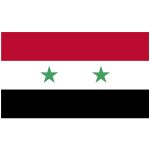
Syria |
Syria, officially known as the Syrian Arab Republic, is a country in Western Asia, bordering Lebanon and the Mediterranean Sea to the west, Turkey to the north, Iraq to the east, Jordan to the south, and Israel to the southwest. Syria’s capital and largest city is Damascus. A country of fertile plains, high mountains, and deserts, Syria is home to diverse ethnic and religious groups, including Syrian Arabs, Greeks, Armenians, Assyrians, Kurds, Circassians, Mandeans and Turks. Religious groups include Sunnis, Christians, Alawites, Druze, Isma’ilis, Mandeans, Shiites, Salafis, Yazidis, and Jews. Sunni make up the largest religious group in Syria. |
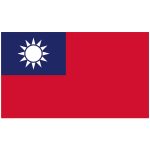
Taiwan |
Taiwan, officially the Republic of China, is a state in East Asia. Its neighbors include the People’s Republic of China to the west, Japan to the northeast, and the Philippines to the south. It is the most populous state and largest economy that is not a member of the United Nations. The island of Taiwan, formerly known as Formosa, was inhabited by aborigines before the 17th century, when Dutch and Spanish colonies opened the island to mass Han immigration. After a brief rule by the Kingdom of Tungning, the island was annexed in 1683 by the Qing dynasty, the last dynasty of China.Read more |
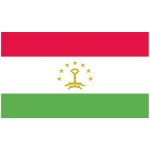
Tajikistan |
Tajikistan, officially the Republic of Tajikistan, is a mountainous, landlocked country in Central Asia with an area of 143,100 km2 and an estimated population of 8.7 million people as of 2016. It is bordered by Afghanistan to the south, Uzbekistan to the west, Kyrgyzstan to the north, and China to the east. The traditional homelands of the Tajik people include present-day Tajikistan as well as parts of Afghanistan and Uzbekistan. The territory that now constitutes Tajikistan was previously home to several ancient cultures, including the city of Sarazm of the Neolithic and the Bronze Age, and was later home to kingdoms ruled by people of different faiths and cultures, including the Oxus civilisation, Andronovo culture, Buddhism, Nestorian Christianity, Zoroastrianism, Manichaeism and Islam. The area has been ruled by numerous empires and dynasties, including the Achaemenid Empire, Sasanian Empire, Hephthalite Empire, Samanid Empire, Mongol Empire, Timurid dynasty, the Russian Empire, and subsequently the Soviet Union.Read more |
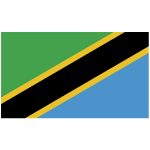
Tanzania |
Tanzania, officially the United Republic of Tanzania, is a country in eastern Africa within the African Great Lakes region. It borders Kenya and Uganda to the north; Rwanda, Burundi, and the Democratic Republic of the Congo to the west; Zambia, Malawi, and Mozambique to the south; and the Indian Ocean to the east. Mount Kilimanjaro, Africa’s highest mountain, is in north-eastern Tanzania. Some prehistoric population migrations into Tanzania include Southern Cushitic speakers who moved south from Ethiopia; Eastern Cushitic people who moved into Tanzania from north of Lake Turkana about 2,000 and 4,000 years ago; and the Southern Nilotes, including the Datoog, who originated from the present-day South Sudan–Ethiopia border region between 2,900 and 2,400 years ago. These movements took place at about the same time as the settlement of the Mashariki Bantu from West Africa in the Lake Victoria and Lake Tanganyika areas.Read more |

Tatarstan |
The Republic of Tatarstan, or simply Tatarstan, is a federal subject of the Russian Federation, located in the Volga Federal District. Its capital is the city of Kazan. The republic borders Kirov, Ulyanovsk, Samara, and Orenburg Oblasts, the Mari El, Udmurt, and Chuvash Republics, and the Republic of Bashkortostan. The area of the republic is 68,000 square kilometres . |
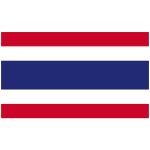
Thailand |
Thailand, officially the Kingdom of Thailand and formerly known as Siam, is a country at the center of the Southeast Asian Indochinese peninsula composed of 76 provinces. At 513,120 km2 and over 68 million people, Thailand is the world’s 50th largest country by total area and the 21st-most-populous country. The capital and largest city is Bangkok, a special administrative area. Thailand is bordered to the north by Myanmar and Laos, to the east by Laos and Cambodia, to the south by the Gulf of Thailand and Malaysia, and to the west by the Andaman Sea and the southern extremity of Myanmar. Its maritime boundaries include Vietnam in the Gulf of Thailand to the southeast, and Indonesia and India on the Andaman Sea to the southwest. |
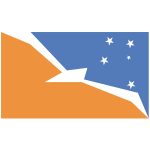
Tierra del Fuego Province Argentina |
Tierra del Fuego is an Argentine province. The province had been inhabited by indigenous people for more than 12,000 years, since they migrated south of the mainland. It was first encountered by a European in 1520 when spotted by Ferdinand Magellan. Even after Argentina achieved independence, this territory remained under indigenous control until the nation’s campaign known as the Conquest of the Desert in the 1870s. After destroying most of the native population in the desert part of Patagonia, Argentina organized this section in 1885 as a territory.Read more |
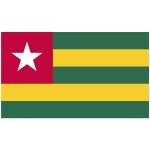
Togo |
Togo, officially the Togolese Republic, is a country in West Africa bordered by Ghana to the west, Benin to the east and Burkina Faso to the north. The sovereign state extends south to the Gulf of Guinea, where its capital Lomé is located. Togo covers 57,000 square kilometres, making it one of the smallest countries in Africa, with a population of approximately 7.6 million.From the 11th to the 16th century, various tribes entered the region from all directions. From the 16th century to the 18th century, the coastal region was a major trading center for Europeans to search for slaves, earning Togo and the surrounding region the name „The Slave Coast“. In 1884, Germany declared a region including present-day Togo as a protectorate called Togoland. |
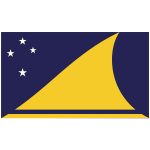
Tokelau |
Tokelau is a dependent territory of New Zealand in the southern Pacific Ocean. It consists of three tropical coral atolls, with a combined land area of 10 km2 . The capital rotates yearly between the three atolls. Tokelau lies north of the Samoan Islands, east of Tuvalu, south of the Phoenix Islands, southwest of the more distant Line Islands, and northwest of the Cook Islands. |

Tonga |
Tonga, officially the Kingdom of Tonga, is a Polynesian country and archipelago comprising 169 islands, of which 36 are inhabited. The total surface area is about 750 square kilometres scattered over 700,000 square kilometres of the southern Pacific Ocean. The sovereign state has a population of 100,651 people, of whom 70% reside on the main island of Tongatapu. Tonga stretches across approximately 800 kilometres in a north-south line. It is surrounded by Fiji and Wallis and Futuna to the northwest, Samoa to the northeast, Niue to the east, Kermadec to the southwest, and New Caledonia and Vanuatu to the farther west.Read more |
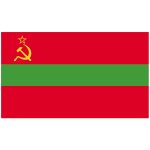
Transnistria |
Transnistria, officially the Pridnestrovian Moldavian Republic, and also called Transdniester, Trans-Dniestr, Transdniestria, or Pridnestrovie, is an unrecognised state which controls part of the geographical region Transnistria and also the city of Bender and its surrounding localities on the west bank. This area was part of the former Moldavian SSR, and since the dissolution of the USSR has been claimed by the Republic of Moldova as the Administrative-Territorial Units of the Left Bank of the Dniester. Transnistria has been recognised only by three other mostly non-recognised states: Abkhazia, Artsakh, and South Ossetia. The region is considered by the UN to be part of Moldova. Transnistria is designated by the Republic of Moldova as the Transnistria autonomous territorial unit with special legal status, or Stînga Nistrului .After the dissolution of the USSR, tensions between Moldova and the breakaway Transnistrian territory escalated into a military conflict that started in March 1992 and was concluded by a ceasefire in July of the same year.Read more |
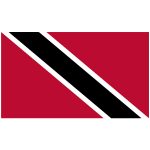
Trinidad and Tobago |
Trinidad and Tobago, officially the Republic of Trinidad and Tobago, is a twin island country that is the southernmost nation of the West Indies in the Caribbean. It is situated 130 kilometres south of Grenada off the northern edge of the South American mainland, 11 kilometres off the coast of northeastern Venezuela. It shares maritime boundaries with Barbados to the northeast, Grenada to the northwest, Guyana to the southeast, and Venezuela to the south and west.The island of Trinidad was a Spanish colony from the arrival of Christopher Columbus in 1498 until Spanish governor Don José María Chacón surrendered the island to a British fleet under the command of Sir Ralph Abercromby in 1797. During the same period, the island of Tobago changed hands among Spanish, British, French, Dutch and Courlander colonizers more times than any other island in the Caribbean. Trinidad and Tobago were ceded to Britain in 1802 under the Treaty of Amiens as separate states and unified in 1889. |
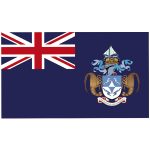
Tristan da Cunha |
Tristan da Cunha, colloquially Tristan, is both a remote group of volcanic islands in the south Atlantic Ocean and the main island of that group. It is the most remote inhabited archipelago in the world which lies proximately 1,511 miles off the coast of Cape Town in South Africa, 1,343 miles from Saint Helena and 2,166 miles off the coast from the Falkland Islands.. The territory consists of the main island, Tristan da Cunha, which has a north–south length of 11.27 kilometres and an area of 98 square kilometres, and the smaller, uninhabited Nightingale Islands and the wildlife reserves of Inaccessible and Gough islands. As of October 2018, the main island has 250 permanent inhabitants whom all carry British Overseas Territories citizenship. The other islands are uninhabited, except for the personnel of a weather station on Gough Island. |
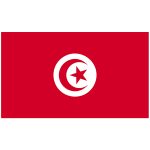
Tunisia |
Tunisia, officially the Republic of Tunisia, is a country in Northwest Africa, covering 165,000 square kilometres . Its northernmost point, Cape Angela, is the northernmost point on the African continent. It is bordered by Algeria to the west and southwest, Libya to the southeast, and the Mediterranean Sea to the north and east. Tunisia’s population was estimated to be just under 11.93 million in 2016. Tunisia’s name is derived from its capital city, Tunis, which is located on its northeast coast. |
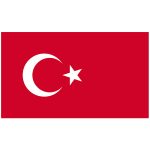
Turkey |
Turkey, officially the Republic of Turkey, is a transcontinental country in Eurasia and Middle East, located mainly in Western Asia, with a smaller portion on the Balkan peninsula in Southeast Europe. Turkey is bordered by eight countries: Greece and Bulgaria to the northwest; Georgia to the northeast; Armenia, the Azerbaijani exclave of Nakhchivan and Iran to the east; and Iraq and Syria to the south. The country is encircled by seas on three sides, with the Aegean Sea to the west, the Black Sea to the north, and the Mediterranean Sea to the south. The Bosphorus, the Sea of Marmara, and the Dardanelles, which together form the Turkish Straits, divide Thrace and Anatolia and separate Europe from Asia. Ankara is the capital while Istanbul is the country’s largest city and main cultural and commercial centre, classified as a leading global city.Approximately 70–80% of the country’s citizens identify themselves as ethnic Turks. |
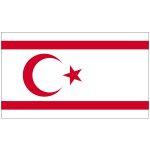
Turkish Republic of Northern Cyprus |
Northern Cyprus, officially the Turkish Republic of Northern Cyprus, is a de facto state that comprises the northeastern portion of the island of Cyprus. Recognised only by Turkey, Northern Cyprus is considered by the international community to be part of the Republic of Cyprus. Northern Cyprus extends from the tip of the Karpass Peninsula in the northeast to Morphou Bay, Cape Kormakitis and its westernmost point, the Kokkina exclave in the west. Its southernmost point is the village of Louroujina. A buffer zone under the control of the United Nations stretches between Northern Cyprus and the rest of the island and divides Nicosia, the island’s largest city and capital of both sides.Read more |
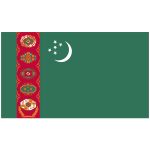
Turkmenistan |
Turkmenistan, formerly known as Turkmenia, is a country in Central Asia, bordered by Kazakhstan to the northwest, Uzbekistan to the north and east, Afghanistan to the southeast, Iran to the south and southwest, and the Caspian Sea to the west. Ashgabat is the capital and largest city. The population of the country is 5.6 million, the lowest of the Central Asian republics. Turkmenistan has been at the crossroads of civilizations for centuries. In medieval times, Merv was one of the great cities of the Islamic world and an important stop on the Silk Road, a caravan route used for trade with China until the mid-15th century.Read more |
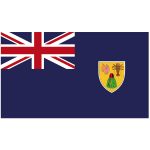
Turks and Caicos Islands |
The Turks and Caicos Islands, or TCI for short, are a British Overseas Territory consisting of the larger Caicos Islands and smaller Turks Islands, two groups of tropical islands in the Lucayan Archipelago of the Atlantic Ocean and northern West Indies. They are known primarily for tourism and as an offshore financial centre. The resident population is 31,458 as of 2012 of whom 23,769 live on Providenciales in the Caicos Islands. The Turks and Caicos Islands lie southeast of Mayaguana in the Bahamas island chain and north of the island of Hispaniola and the other Antilles archipelago islands. Cockburn Town, the capital since 1766, is situated on Grand Turk Island about 1,042 kilometres east-southeast of Miami, United States.Read more |
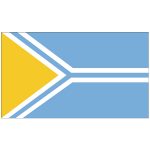
Tuva |
Tuva or Tyva, officially the Tyva Republic, is a federal subject of Russia .The Tuvan republic lies at the geographical center of Asia, in southern Siberia. The republic borders the Altai Republic, the Republic of Khakassia, Krasnoyarsk Krai, Irkutsk Oblast, and the Republic of Buryatia in Russia and Mongolia to the south. Its capital is the city of Kyzyl. It has a population of 307,930 .From 1921 to 1944, Tuva constituted a sovereign, independent nation under the name of Tannu Tuva, officially, the Tuvan People’s Republic, or the People’s Republic of Tannu Tuva. |
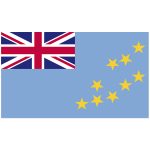
Tuvalu |
Tuvalu, formerly known as the Ellice Islands, is a Polynesian island country located in the Pacific Ocean, situated in Oceania, about midway between Hawaii and Australia. It lies east-northeast of the Santa Cruz Islands, southeast of Nauru, south of Kiribati, west of Tokelau, northwest of Samoa and Wallis and Futuna and north of Fiji. It comprises three reef islands and six true atolls spread out between the latitude of 5° to 10° south and longitude of 176° to 180°, west of the International Date Line. Tuvalu has a population of 10,640 . The total land area of the islands of Tuvalu is 26 square kilometres . |
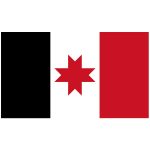
Udmurtia |
Udmurtia, or the Udmurt Republic, is a federal subject of Russia within the Volga Federal District. Its capital is the city of Izhevsk. Population: 1,521,420 .
== History == On November 4, 1920, the Votyak Autonomous Oblast was formed. |
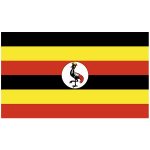
Uganda |
Uganda, officially the Republic of Uganda, is a landlocked country in East-Central Africa. The sovereign state bordered to the east by Kenya, to the north by South Sudan, to the west by the Democratic Republic of the Congo, to the south-west by Rwanda, and to the south by Tanzania. The southern part of the country includes a substantial portion of Lake Victoria, shared with Kenya and Tanzania. Uganda is in the African Great Lakes region. Uganda also lies within the Nile basin, and has a varied but generally a modified equatorial climate. |
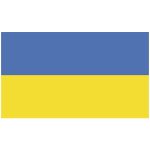
Ukraine |
Ukraine, sometimes called the Ukraine, is a country in Eastern Europe. Excluding Crimea, Ukraine has a population of about 42.5 million, making it the 32nd most populous country in the world. Its capital and largest city is Kiev. Ukrainian is the official language and its alphabet is Cyrillic. |
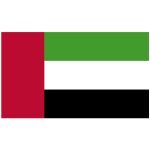
United Arab Emirates |
The United Arab Emirates, sometimes simply called the Emirates, is a country in Western Asia at the southeast end of the Arabian Peninsula on the Persian Gulf, bordering Oman to the east and Saudi Arabia to the south, as well as sharing maritime borders with Qatar to the west and Iran to the north. The sovereign absolute monarchy is a federation of seven emirates consisting of Abu Dhabi, Ajman, Dubai, Fujairah, Ras al-Khaimah, Sharjah and Umm al-Quwain. Each emirate is governed by a ruler; together, they jointly form the Federal Supreme Council. One of the rulers serves as the President of the United Arab Emirates. In 2013, the UAE’s population was 9.2 million, of which 1.4 million are Emirati citizens and 7.8 million are expatriates.Human occupation of the present UAE has been traced back to the emergence of anatomically modern man from Africa some 125,000 BCE through finds at the Faya-1 site in Mleiha, Sharjah. |
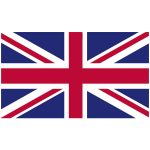
United Kingdom |
The United Kingdom of Great Britain and Northern Ireland, commonly known as the United Kingdom or Britain, is a sovereign country lying off the north-western coast of the European mainland. The United Kingdom includes the island of Great Britain, the north-eastern part of the island of Ireland and many smaller islands. Northern Ireland is the only part of the United Kingdom that shares a land border with another sovereign state—the Republic of Ireland. Apart from this land border, the United Kingdom is surrounded by the Atlantic Ocean, with the North Sea to its east, the English Channel to its south and the Celtic Sea to its south-south-west, giving it the 12th-longest coastline in the world. The Irish Sea lies between Great Britain and Ireland. |
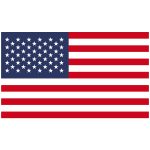
United States of America |
The United States of America (USA), commonly known as the United States or America, is a country composed of 50 states, a federal district, five major self-governing territories, and various possessions. At 3.8 million square miles (9.8 million km2), the United States is the world’s third- or fourth-largest country by total area and slightly smaller than the entire continent of Europe’s 3.9 million square miles (10.1 million km2). With a population of over 325 million people, the U.S. is the third most populous country. The capital is Washington, D.C., and the largest city by population is New York City. Forty-eight states and the capital’s federal district are contiguous in North America between Canada and Mexico. The State of Alaska is in the northwest corner of North America, bordered by Canada to the east and across the Bering Strait from Russia to the west. The State of Hawaii is an archipelago in the mid-Pacific Ocean. The U.S. territories are scattered about the Pacific Ocean and the Caribbean Sea, stretching across nine official time zones. The extremely diverse geography, climate, and wildlife of the United States make it one of the world’s 17 megadiverse countries. |
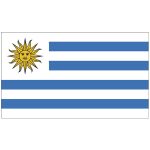
Uruguay |
Uruguay, officially the Oriental Republic of the Uruguay, in reference to its location on the eastern bank of the Uruguay River, is a country in the southeastern region of South America. It borders Argentina to its west and Brazil to its north and east, with the Río de la Plata to the south and the Atlantic Ocean to the southeast. Uruguay is home to an estimated 3.44 million people, of whom 1.8 million live in the metropolitan area of its capital and largest city, Montevideo. With an area of approximately 176,000 square kilometres, Uruguay is geographically the second-smallest nation in South America, after Suriname. Uruguay was inhabited by the Charrúa people for approximately 4,000 years before the Portuguese established Colonia del Sacramento in 1680; Uruguay was colonized by Europeans relatively late compared with neighboring countries.Read more |
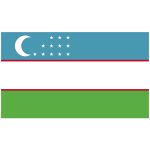
Uzbekistan |
Uzbekistan, officially also the Republic of Uzbekistan, is a doubly landlocked country in Central Asia. The sovereign state is a secular, unitary constitutional republic, comprising 12 provinces, one autonomous republic, and a capital city. Uzbekistan is bordered by five landlocked countries: Kazakhstan to the north; Kyrgyzstan to the northeast; Tajikistan to the southeast; Afghanistan to the south; and Turkmenistan to the southwest. What is now Uzbekistan was in ancient times part of the Iranian-speaking region of Transoxiana. The first recorded settlers were Eastern Iranian nomads, known as Scythians, who founded kingdoms in Khwarezm, Bactria, Sogdia, Fergana, and Margiana.Read more |
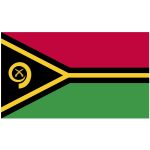
Vanuatu |
Vanuatu, officially the Republic of Vanuatu, is a Pacific island country located in the South Pacific Ocean. The archipelago, which is of volcanic origin, is 1,750 kilometres east of northern Australia, 540 kilometres northeast of New Caledonia, east of New Guinea, southeast of the Solomon Islands, and west of Fiji. Vanuatu was first inhabited by Melanesian people. The first Europeans to visit the islands were a Spanish expedition led by Portuguese navigator Fernandes de Queirós, who arrived on the largest island in 1606. Since the Portuguese and Spanish monarchies had been unified under the king of Spain in 1580, Queirós claimed the archipelago for Spain, as part of the colonial Spanish East Indies, and named it La Austrialia del Espíritu Santo.Read more |
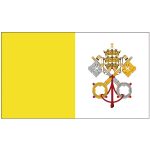
Vatican City Holy See |
Vatican City (, officially Vatican City State, is an independent city-state enclaved within Rome, Italy. Established with the Lateran Treaty, it is distinct from yet under „full ownership, exclusive dominion, and sovereign authority and jurisdiction“ of the Holy See . With an area of 44 hectares, and a population of about 1,000, it is the smallest state in the world by both area and population. The Vatican City is an ecclesiastical or sacerdotal-monarchical state ruled by the pope who is, religiously speaking, the bishop of Rome and head of the Catholic Church. The highest state functionaries are all Catholic clergy of various national origins.Read more |
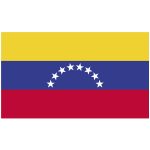
Venezuela |
Venezuela, officially the Bolivarian Republic of Venezuela, is a country on the northern coast of South America, consisting of a continental landmass and a large number of small islands and islets in the Caribbean Sea. The capital and largest urban agglomeration is the city of Caracas. It has a territorial extension of 916,445 km2 . The continental territory is bordered on the north by the Caribbean Sea and the Atlantic Ocean, on the west by Colombia, Brazil on the south, Trinidad and Tobago to the north-east and on the east by Guyana. With this last country, the Venezuelan government maintains a claim for Guayana Esequiba over an area of 159,542 km2 . |
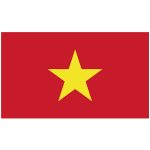
Vietnam |
Vietnam, officially the Socialist Republic of Vietnam, is the easternmost country on the Indochina Peninsula. With an estimated 94.6 million inhabitants as of 2016, it is the world’s 15th-most-populous country, and the ninth-most-populous Asian country. Vietnam is bordered by China to the north, Laos to the northwest, Cambodia to the southwest, Thailand across the Gulf of Thailand to the southwest, and the Philippines, Malaysia and Indonesia across the South China Sea to the east and southeast. Its capital city has been Hanoi since the reunification of North and South Vietnam in 1976, with Ho Chi Minh City as the most populous city. The northern part of Vietnam was part of Imperial China for over a millennium, from 111 BC to AD 939.Read more |
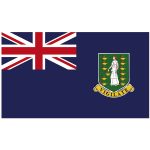
Virgin Islands UK |
The British Virgin Islands, officially simply „Virgin Islands“, are a British Overseas Territory in the Caribbean, to the east of Puerto Rico. The islands are geographically part of the Virgin Islands archipelago and are located in the Leeward Islands of the Lesser Antilles. The British Virgin Islands consist of the main islands of Tortola, Virgin Gorda, Anegada, and Jost Van Dyke, along with over 50 other smaller islands and cays. About 15 of the islands are inhabited. The capital, Road Town, is on Tortola, the largest island, which is about 20 km long and 5 km wide.Read more |
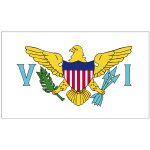
Virgin Islands US |
The United States Virgin Islands, officially the Virgin Islands of the United States, is a group of islands in the Caribbean and an unincorporated and organized territory of the United States. The islands are geographically part of the Virgin Islands archipelago and are located in the Leeward Islands of the Lesser Antilles. The U.S. Virgin Islands consists of the main islands of Saint Croix, Saint John, and Saint Thomas, and many other surrounding minor islands. The total land area of the territory is 133.73 square miles . The territory’s capital is Charlotte Amalie on the island of St.Read more |
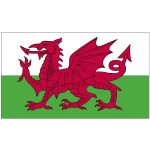
Wales |
Wales is a country that is part of the United Kingdom and the island of Great Britain. It is bordered by England to the east, the Irish Sea to the north and west, and the Bristol Channel to the south. It had a population in 2011 of 3,063,456 and has a total area of 20,779 km2 . Wales has over 1,680 miles of coastline and is largely mountainous, with its higher peaks in the north and central areas, including Snowdon, its highest summit. The country lies within the north temperate zone and has a changeable, maritime climate. |
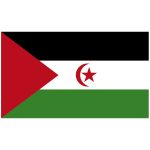
Western-Sahara |
Western Sahara is a disputed territory in the Maghreb region of North Africa, partially controlled by the self-proclaimed Sahrawi Arab Democratic Republic and partially Moroccan-occupied, bordered by Morocco proper to the north, Algeria to the northeast, Mauritania to the east and south, and the Atlantic Ocean to the west. Its surface area amounts to 266,000 square kilometres . It is one of the most sparsely populated territories in the world, mainly consisting of desert flatlands. The population is estimated at just over 500,000, of which nearly 40% live in Laayoune, the largest city in Western Sahara. Occupied by Spain until the late 20th century, Western Sahara has been on the United Nations list of non-self-governing territories since 1963 after a Moroccan demand.Read more |
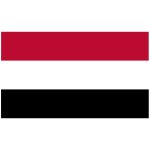
Yemen |
Yemen, officially known as the Republic of Yemen, is a country at the southern end of the Arabian Peninsula. Yemen is the second-largest Arab sovereign state in the peninsula, occupying 527,970 square kilometres . The coastline stretches for about 2,000 kilometres . |
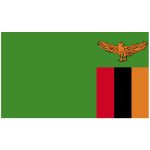
Zambia |
Zambia, officially the Republic of Zambia, is a landlocked country in south-central Africa, neighbouring the Democratic Republic of the Congo to the north, Tanzania to the north-east, Malawi to the east, Mozambique to the southeast, Zimbabwe and Botswana to the south, Namibia to the southwest, and Angola to the west. The capital city is Lusaka, in the south-central part of Zambia. The population is concentrated mainly around Lusaka in the south and the Copperbelt Province to the northwest, the core economic hubs of the country. Originally inhabited by Khoisan peoples, the region was affected by the Bantu expansion of the thirteenth century. After visits by European explorers in the eighteenth century, the region became the British protectorates of Barotziland-North-Western Rhodesia and North-Eastern Rhodesia towards the end of the nineteenth century.Read more |
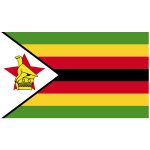
Zimbabwe |
Zimbabwe, officially the Republic of Zimbabwe, is a landlocked country located in southern Africa, between the Zambezi and Limpopo Rivers, bordered by South Africa, Botswana, Zambia and Mozambique. The capital and largest city is Harare. A country of roughly 16 million people, Zimbabwe has 16 official languages, with English, Shona, and Ndebele the most commonly used. Since the 11th century, present-day Zimbabwe has been the site of several organised states and kingdoms as well as a major route for migration and trade. The British South Africa Company of Cecil Rhodes first demarcated the present territory during the 1890s; it became the self-governing British colony of Southern Rhodesia in 1923.Read more |
| Vlag | Lanfden information |
|---|---|

Abkhazia |
Abkhazia, officially the Republic of Abkhazia, is a de facto and partially recognized republic on the eastern coast of the Black Sea, south of the Greater Caucasus mountains, in northwestern Georgia. It covers 8,660 square kilometres and has a population of around 240,000. Its capital is Sukhumi. |

Adygea |
The Republic of Adygea, also known as the Adyghe Republic, is a federal subject of Russia, with its territory enclaved within Krasnodar Krai. Its area is 7,600 square kilometers with a population of 439,996 . Maykop is its capital city.
== Geography == |

Afghanistan |
Afghanistan, officially the Islamic Republic of Afghanistan, is a landlocked country located within South Asia. Afghanistan is bordered by Pakistan in the south and east; Iran in the west; Turkmenistan, Uzbekistan, and Tajikistan in the north; and in the far northeast, China. Its territory covers 652,000 square kilometers and much of it is covered by the Hindu Kush mountain range, which experience very cold winters. The north consists of fertile plains, whilst the south-west consists of deserts where temperatures can get very hot in summers. Kabul serves as the capital and its largest city. |

Ajaria |
Adjara, officially known as the Autonomous Republic of Adjara, is a historical, geographic and political-administrative region of Georgia. Located in the country’s southwestern corner, Adjara lies on the coast of the Black Sea near the foot of the Lesser Caucasus Mountains, north of Turkey. It is an important tourist destination and includes Georgia’s second-largest city of Batumi as its capital. About 350,000 people live on its 2,880 km2. Adjara is home to the Adjarians, a regional subgroup of Georgians.Read more |

Aland |
The Åland Islands or Åland is an archipelago province at the entrance to the Gulf of Bothnia in the Baltic Sea belonging to Finland. It is autonomous, demilitarised and is the only monolingually Swedish-speaking region in Finland. It is the smallest region of Finland, constituting 0.49% of its land area and 0.50% of its population. Åland comprises Fasta Åland on which 90% of the population resides and a further 6,500 skerries and islands to its east. Fasta Åland is separated from the coast of Sweden by 38 kilometres of open water to the west.Read more |

Albania |
Albania, officially the Republic of Albania, is a country in Southeastern Europe on the Adriatic and Ionian Sea within the Mediterranean Sea. It is bounded by Montenegro to the northwest, Kosovo to the northeast, the Republic of Macedonia to the east and Greece to the south and southeast. Geographically, the country displays varied climatic, geological, hydrological and morphological conditions, defined in an area of 28,748 km2 . It possesses remarkable diversity with the landscape ranging from the snow-capped mountains in the Albanian Alps as well as the Korab, Skanderbeg, Pindus and Ceraunian Mountains to the hot and sunny coasts of the Albanian Adriatic and Ionian Sea along the Mediterranean Sea. Historically, different Illyrian, Thracian and Greek tribes have inhabited the country’s territory as well as several Greek colonies established in the Illyrian coast since classical antiquity until the Roman Empire expanded on the Balkans.Read more |

Alderney |
Alderney is the northernmost of the inhabited Channel Islands. It is part of the Bailiwick of Guernsey, a British Crown dependency. It is 3 miles long and 1 1⁄2 miles wide. The area is 3 square miles, making it the third-largest island of the Channel Islands, and the second largest in the Bailiwick. It is around 10 miles from the west of La Hague on the Cotentin Peninsula, Normandy, in France, 20 miles from the north-east of Guernsey and 60 miles from the south coast of Great Britain. |

Algeria |
Algeria, officially the People’s Democratic Republic of Algeria, is a country in North Africa on the Mediterranean coast. The capital and most populous city is Algiers, located in the far north of the country. With an area of 2,381,741 square kilometres, Algeria is the tenth-largest country in the world, and the largest in Africa since South Sudan became independent from Sudan in 2011. Algeria is bordered to the northeast by Tunisia, to the east by Libya, to the west by Morocco, to the southwest by the Western Saharan territory, Mauritania, and Mali, to the southeast by Niger, and to the north by the Mediterranean Sea. The country is a semi-presidential republic consisting of 48 provinces and 1,541 communes . |

Altai Republik |
The Altai Republic is a federal subject of Russia . Its capital is the town of Gorno-Altaysk. The area of the republic is 92,600 square kilometers, and its population is 206,168 .
== History == |

American Samoa |
American Samoa is an unincorporated territory of the United States located in the South Pacific Ocean, southeast of Samoa.American Samoa consists of five main islands and two coral atolls. The largest and most populous island is Tutuila, with the Manuʻa Islands, Rose Atoll, and Swains Island also included in the territory. All islands except for Swains Island are part of the Samoan Islands, located west of the Cook Islands, north of Tonga, and some 300 miles south of Tokelau. To the west are the islands of the Wallis and Futuna group. The current population of American Samoa is approximately 55,689 people.Read more |

Andorra |
Andorra, officially the Principality of Andorra, also called the Principality of the Valleys of Andorra, is a sovereign landlocked microstate on the Iberian Peninsula, in the eastern Pyrenees, bordered by France in the north and Spain in the south. Believed to have been created by Charlemagne, Andorra was ruled by the Count of Urgell until 988 when it was transferred to the Diocese of Urgell, and the present principality was formed by a charter in 1278. It is known as a principality as it is a diarchy headed by two Co-Princes: the Catholic Bishop of Urgell in Spain and the President of the Republic of France. Andorra is the sixth-smallest nation in Europe, having an area of 468 square kilometres and a population of approximately 77,281. The Andorrans are a Romance ethnic group of originally Catalan descent.Read more |

Angola |
Angola, officially the Republic of Angola, is a west-coast country of south-central Africa. It is the seventh-largest country in Africa, bordered by Namibia to the south, the Democratic Republic of the Congo to the north, Zambia to the east, and the Atlantic Ocean to the west. Angola has an exclave province, the province of Cabinda that borders the Republic of the Congo and the Democratic Republic of the Congo. The capital and largest city of Angola is Luanda. Although inhabited since the Paleolithic Era, what is now Angola was molded by Portuguese colonisation.Read more |

Anguilla |
Anguilla is a British overseas territory in the Caribbean. It is one of the most northerly of the Leeward Islands in the Lesser Antilles, lying east of Puerto Rico and the Virgin Islands and directly north of Saint Martin. The territory consists of the main island of Anguilla, approximately 16 miles long by 3 miles wide at its widest point, together with a number of much smaller islands and cays with no permanent population. The island’s capital is The Valley. The total land area of the territory is 35 square miles, with a population of approximately 14,764 . |

Antarctica |
Antarctica is Earth’s southernmost continent. It contains the geographic South Pole and is situated in the Antarctic region of the Southern Hemisphere, almost entirely south of the Antarctic Circle, and is surrounded by the Southern Ocean. At 14,000,000 square kilometres, it is the fifth-largest continent. For comparison, Antarctica is nearly twice the size of Australia. About 98% of Antarctica is covered by ice that averages 1.9 km in thickness, which extends to all but the northernmost reaches of the Antarctic Peninsula. |

Antigua and Barbuda |
Antigua and Barbuda is a country in the West Indies in the Americas, lying between the Caribbean Sea and the Atlantic Ocean. It consists of two major islands, Antigua and Barbuda, and a number of smaller islands . The permanent population numbers about 81,800 and the capital and largest port and city is St. John’s, on Antigua. |

Argentina |
Argentina, officially the Argentine Republic, is a country located mostly in the southern half of South America. Sharing the bulk of the Southern Cone with Chile to the west, the country is also bordered by Bolivia and Paraguay to the north, Brazil to the northeast, Uruguay and the South Atlantic Ocean to the east, and the Drake Passage to the south. With a mainland area of 2,780,400 km2, Argentina is the eighth-largest country in the world, the fourth largest in the Americas, and the largest Spanish-speaking nation. The sovereign state is subdivided into twenty-three provinces and one autonomous city, Buenos Aires, which is the federal capital of the nation as decided by Congress. The provinces and the capital have their own constitutions, but exist under a federal system. |

Armenia |
Armenia, officially the Republic of Armenia, is a country in the South Caucasus region of Eurasia. Located in Western Asia on the Armenian Highlands, it is bordered by Turkey to the west, Georgia to the north, the de facto independent Republic of Artsakh and Azerbaijan to the east, and Iran and Azerbaijan’s exclave of Nakhchivan to the south.Armenia is a unitary, multi-party, democratic nation-state with an ancient cultural heritage. Urartu was established in 860 BC and by the 6th century BC it was replaced by the Satrapy of Armenia. |

Aruba |
Aruba is an island and a constituent country of the Kingdom of the Netherlands in the southern Caribbean Sea, located about 1,600 kilometres west of the main part of the Lesser Antilles and 29 kilometres north of the coast of Venezuela. It measures 32 kilometres long from its northwestern to its southeastern end and 10 kilometres across at its widest point. Together with Bonaire and Curaçao, Aruba forms a group referred to as the ABC islands. Collectively, Aruba and the other Dutch islands in the Caribbean are often called the Dutch Caribbean. Aruba is one of the four countries that form the Kingdom of the Netherlands, along with the Netherlands, Curaçao, and Sint Maarten; the citizens of these countries are all Dutch nationals.Read more |

Australia |
Australia, officially the Commonwealth of Australia, is a sovereign country comprising the mainland of the Australian continent, the island of Tasmania and numerous smaller islands. It is the largest country in Oceania and the world’s sixth-largest country by total area. The neighbouring countries are Papua New Guinea, Indonesia and East Timor to the north; the Solomon Islands and Vanuatu to the north-east; and New Zealand to the south-east. The population of 25 million is highly urbanised and heavily concentrated on the eastern seaboard. Australia’s capital is Canberra, and its largest city is Sydney. |

Austria |
Austria, officially the Republic of Austria, is a landlocked country of over 8.8 million people in Central Europe. It is bordered by the Czech Republic and Germany to the north, Hungary and Slovakia to the east, Slovenia and Italy to the south, and Switzerland and Liechtenstein to the west. The territory of Austria covers 83,879 km2 . The terrain is highly mountainous, lying within the Alps; only 32% of the country is below 500 m, and its highest point is 3,798 m . The majority of the population speaks local Bavarian dialects of German as their native language, and German in its standard form is the country’s official language. |

Azerbaijan |
Azerbaijan, officially the Republic of Azerbaijan, is a country in the South Caucasus region of Eurasia at the crossroads of Eastern Europe and Western Asia. It is bounded by the Caspian Sea to the east, Russia to the north, Georgia to the northwest, Armenia to the west and Iran to the south. The exclave of Nakhchivan is bound by Armenia to the north and east, Iran to the south and west, and has an 11 km long border with Turkey in the north west. The Azerbaijan Democratic Republic proclaimed its independence in 1918 and became the first democratic state in the Muslim-oriented world. The country was incorporated into the Soviet Union in 1920 as the Azerbaijan Soviet Socialist Republic.Read more |

Bahamas |
The Bahamas, known officially as the Commonwealth of The Bahamas, is a country within the Lucayan Archipelago. The archipelagic state consists of more than 700 islands, cays, and islets in the Atlantic Ocean, and is located north of Cuba and Hispaniola, northwest of the Turks and Caicos Islands, southeast of the United States state of Florida, and east of the Florida Keys. The capital is Nassau on the island of New Providence. The designation of „the Bahamas“ can refer either to the country or to the larger island chain that it shares with the Turks and Caicos Islands. The Royal Bahamas Defence Force describes the Bahamas territory as encompassing 470,000 km2 of ocean space. |

Bahrain |
Bahrain, officially the Kingdom of Bahrain, is an island country in the Persian Gulf. The sovereign state comprises a small archipelago centered around Bahrain Island, situated between the Qatar peninsula and the north eastern coast of Saudi Arabia, to which it is connected by the 25-kilometre King Fahd Causeway. Bahrain’s population is 1,234,571, including 666,172 non-nationals. It is 765.3 square kilometres in size, making it the third-smallest nation in Asia after the Maldives and Singapore.Bahrain is the site of the ancient Dilmun civilisation. |

Bangladesh |
Bangladesh, officially the People’s Republic of Bangladesh, is a country in South Asia. It shares land borders with India and Myanmar .The country’s maritime territory in the Bay of Bengal is roughly equal to the size of its land area. Bangladesh is the world’s eighth most populous country. Dhaka is its capital and largest city, followed by Chittagong, which has the country’s largest port. Bangladesh forms the largest and easternmost part of the Bengal region. |

Barbados |
Barbados is an island country in the Lesser Antilles of the West Indies, in the Caribbean region of North America. It is 34 kilometres in length and up to 23 km in width, covering an area of 432 km2 . It is situated in the western area of the North Atlantic and 100 km east of the Windward Islands and the Caribbean Sea; therein, Barbados is east of the Windwards, part of the Lesser Antilles, roughly at 13°N of the equator. It is about 168 km east of both the countries of Saint Lucia and Saint Vincent and the Grenadines and 400 km north-east of Trinidad and Tobago. Barbados is outside the principal Atlantic hurricane belt. |

Bashkortostan |
The Republic of Bashkortostan, also historically known as Bashkiria, is a federal subject of Russia . It is located between the Volga River and the Ural Mountains. Its capital is the city of Ufa. |

Belarus |
Belarus, officially the Republic of Belarus, formerly known by its Russian name Byelorussia or Belorussia, is a landlocked country in Eastern Europe bordered by Russia to the northeast, Ukraine to the south, Poland to the west, and Lithuania and Latvia to the northwest. Its capital and most populous city is Minsk. Over 40% of its 207,600 square kilometres is forested. Its major economic sectors are service industries and manufacturing. Until the 20th century, different states at various times controlled the lands of modern-day Belarus, including the Principality of Polotsk, the Grand Duchy of Lithuania, the Polish–Lithuanian Commonwealth, and the Russian Empire. |

Belgium |
Belgium officially the Kingdom of Belgium, is a country in Western Europe bordered by France, the Netherlands, Germany and Luxembourg. It covers an area of 30,528 square kilometres and has a population of more than 11 million. The capital and largest city is Brussels; other major cities are Antwerp, Ghent, Charleroi and Liège. The sovereign state of Belgium is a federal constitutional monarchy with a parliamentary system of governance. Its institutional organisation is complex and is structured on both regional and linguistic grounds.Read more |

Belize |
Belize, formerly British Honduras, is a country on the eastern coast of Central America. Belize is bordered on the northwest by Mexico, on the east by the Caribbean Sea, and on the south and west by Guatemala. Belize is a parliamentary constitutional monarchy. Belize has an area of 22,800 square kilometres and a population of 387,879 . Its mainland is about 290 km long and 110 km wide.Read more |

Benin |
Benin, officially the Republic of Benin and formerly Dahomey, is a country in West Africa. It is bordered by Togo to the west, Nigeria to the east, and Burkina Faso and Niger to the north. The majority of its population lives on the small southern coastline of the Bight of Benin, part of the Gulf of Guinea in the northernmost tropical portion of the Atlantic Ocean. The capital of Benin is Porto-Novo, but the seat of government is in Cotonou, the country’s largest city and economic capital. Benin covers an area of 114,763 square kilometres and its population in 2016 was estimated to be approximately 10.87 million. |

Bermuda |
Bermuda is a British Overseas Territory in the North Atlantic Ocean. It is approximately 1,070 km east-southeast of Cape Hatteras, North Carolina; 1,236 km south of Cape Sable Island, Nova Scotia; and 1,759 km north of Cuba. The capital city is Hamilton. Bermuda is self-governing, with its own constitution and its own government, which enacts local laws, while the United Kingdom retains responsibility for defence and foreign relations. Bermuda’s two largest economic sectors are offshore insurance and reinsurance, and tourism.Read more |

Bhutan |
Bhutan, officially the Kingdom of Bhutan, is a landlocked country in South Asia. Located in the Eastern Himalayas, it is bordered by Tibet Autonomous Region of China in the north, the Sikkim state of India and the Chumbi Valley of Tibet in the west, the Arunachal Pradesh state of India in the east, and the states of Assam and West Bengal in the south. Bhutan is geopolitically in South Asia and is the region’s second least populous nation after the Maldives. Thimphu is its capital and largest city, while Phuntsholing is its financial center. The independence of Bhutan has endured for centuries and it has never been colonized in its history.Read more |

Bonaire |
Bonaire is a Dutch island in the Caribbean part of the Netherlands, which since 2010 has been a special administrative municipality as a Caribbean public body. It is located in the southern part of the Caribbean Sea, off the coast of Venezuela, and belongs to the ABC islands of the Lesser Antilles. The capital of Bonaire is Kralendijk; a corruption of Koralendijk . The oldest settlement is Rincon, Spanish for „corner“. |

British Antarctic Territory |
The British Antarctic Territory is a sector of Antarctica claimed by the United Kingdom as one of its 14 British Overseas Territories, of which it is by far the largest by area. It comprises the region south of 60°S latitude and between longitudes 20°W and 80°W, forming a wedge shape that extends to the South Pole, overlapping the Antarctic claims of Argentina and Chile . The Territory was formed on 3 March 1962, although the UK’s claim to this portion of the Antarctic dates back to letters patent of 1908 and 1917. The area now covered by the Territory includes three regions which, before 1962, were administered by the British as separate dependencies of the Falkland Islands: Graham Land, the South Orkney Islands, and the South Shetland Islands. The United Kingdom’s claim to the region has been suspended since the Antarctic Treaty came into force in 1961, Article 4 of which states „No acts or activities taking place while the present Treaty is in force shall constitute a basis for asserting, supporting or denying a claim to territorial sovereignty in Antarctica.Read more |

British Indian Ocean Territory |
The British Indian Ocean Territory is an overseas territory of the United Kingdom situated in the Indian Ocean halfway between Tanzania and Indonesia. The territory comprises the seven atolls of the Chagos Archipelago with over 1,000 individual islands – many very small – amounting to a total land area of 60 square kilometres . The largest and most southerly island is Diego Garcia, 27 km2, the site of a joint military facility of the United Kingdom and the United States. The only inhabitants are US and British military personnel and associated contractors, who collectively number around 2,500 . The removal of Chagossians from the Chagos Archipelago occurred between 1968 and 1973.Read more |

Brittany |
Brittany is a cultural region in the northwest of France, covering the western part of what was known as Armorica during the period of Roman occupation. It became an independent kingdom and then a duchy before being united with the Kingdom of France in 1532 as a province governed as if it were a separate nation under the crown. Brittany has also been referred to as Less, Lesser or Little Britain . It is bordered by the English Channel to the north, the Celtic Sea and the Atlantic Ocean to the west, and the Bay of Biscay to the south. Its land area is 34,023 km² .Read more |

Brunei |
Brunei, officially the Nation of Brunei, the Abode of Peace, is a country located on the north coast of the island of Borneo in Southeast Asia. Apart from its coastline with the South China Sea, the sovereign state is completely surrounded by the Malaysian state of Sarawak. It is separated into two parts by the Sarawak district of Limbang. Brunei is the only sovereign state completely on the island of Borneo; the remainder of the island’s territory is divided between the nations of Malaysia and Indonesia. Brunei’s population was 423,196 in 2016.At the peak of the Bruneian Empire, Sultan Bolkiah is alleged to have had control over most regions of Borneo, including modern-day Sarawak and Sabah, as well as the Sulu Archipelago off the northeast tip of Borneo, Seludong, and the islands off the northwest tip of Borneo. |

Bulgaria |
Bulgaria, officially the Republic of Bulgaria, is a country in southeastern Europe. It is bordered by Romania to the north, Serbia and Macedonia to the west, Greece and Turkey to the south, and the Black Sea to the east. The capital and largest city is Sofia; other major cities are Plovdiv, Varna and Burgas. |

Burkina Faso |
Burkina Faso is a landlocked country in West Africa. It covers an area of around 274,200 square kilometres and is surrounded by six countries: Mali to the north; Niger to the east; Benin to the southeast; Togo and Ghana to the south; and Ivory Coast to the southwest. In 2017, its population was estimated at just over 20 million. Burkina Faso is a francophone country, with French as the official language of government and business. Formerly called the Republic of Upper Volta, the country was renamed „Burkina Faso“ on 4 August 1984 by then-President Thomas Sankara. |

Burundi |
Burundi, officially the Republic of Burundi, is a landlocked country in the African Great Lakes region of East Africa, bordered by Rwanda to the north, Tanzania to the east and south, and the Democratic Republic of the Congo to the west. It is also considered part of Central Africa. Burundi’s capital is Bujumbura. The southwestern border is adjacent to Lake Tanganyika. The Twa, Hutu and Tutsi peoples have lived in Burundi for at least 500 years.Read more |

Butyatia |
The Republic of Buryatia is a federal subject of Russia, located in Siberia in Asia. Its capital is the city of Ulan-Ude. Its area is 351,300 square kilometers with a population of 972,021 . |

Cambodia |
Cambodia, officially the Kingdom of Cambodia, is a country located in the southern portion of the Indochina peninsula in Southeast Asia. It is 181,035 square kilometres in area, bordered by Thailand to the northwest, Laos to the northeast, Vietnam to the east and the Gulf of Thailand to the southwest. The sovereign state of Cambodia has a population of over 15 million. The official religion is Theravada Buddhism, practised by approximately 95 percent of the population. The country’s minority groups include Vietnamese, Chinese, Chams and 30 hill tribes. |

Cameroon |
Cameroon, officially the Republic of Cameroon, is a country wedged in West and Central Africa. It is bordered by Nigeria to the west and north; Chad to the northeast; the Central African Republic to the east; and Equatorial Guinea, Gabon and the Republic of the Congo to the south. Cameroon’s coastline lies on the Bight of Biafra, part of the Gulf of Guinea and the Atlantic Ocean. Although Cameroon is not an ECOWAS member state, it geographically and historically is in West Africa with the Southern Cameroons which now form her Northwest and Southwest Regions having a strong West African history. The country is sometimes identified as West African and other times as Central African due to its strategic position at the crossroads between West and Central Africa. |

Canada |
Canada is a country located in the northern part of North America. Its ten provinces and three territories extend from the Atlantic to the Pacific and northward into the Arctic Ocean, covering 9.98 million square kilometres, making it the world’s second-largest country by total area. Canada’s southern border with the United States is the world’s longest bi-national land border. Its capital is Ottawa, and its three largest metropolitan areas are Toronto, Montreal, and Vancouver. As a whole, Canada is sparsely populated, the majority of its land area being dominated by forest and tundra. |

Cape Verde |
Cape Verde or Cabo Verde, officially the Republic of Cabo Verde, is an island country spanning an archipelago of 10 volcanic islands in the central Atlantic Ocean. It forms part of the Macaronesia ecoregion, along with the Azores, Canary Islands, Madeira, and the Savage Isles. In ancient times these islands were referred to as „the Islands of the Blessed“ or the „Fortunate Isles“. Located 570 kilometres west of the Cape Verde Peninsula in West Africa, the islands cover a combined area of slightly over 4,000 square kilometres . The Cape Verde archipelago was uninhabited until the 15th century, when Portuguese explorers discovered and colonized the islands, establishing the first European settlement in the tropics.Read more |

Cayman Islands |
The Cayman Islands is an autonomous British Overseas Territory in the western Caribbean Sea. The 264-square-kilometre territory comprises the three islands of Grand Cayman, Cayman Brac and Little Cayman, which are located to the south of Cuba and northeast of Honduras, between Jamaica and the Yucatán Peninsula. The total population of the three islands is approximately 60,765. The capital city is George Town, situated on Grand Cayman. The Cayman Islands is considered to be part of the geographic Western Caribbean Zone as well as the Greater Antilles.Read more |

Central African Republic |
The Central African Republic is a landlocked country in Central Africa. It is bordered by Chad to the north, Sudan to the northeast, South Sudan to the east, the Democratic Republic of the Congo to the south, the Republic of the Congo to the southwest and Cameroon to the west. The CAR covers a land area of about 620,000 square kilometres and had an estimated population of around 4.6 million as of 2016. Most of the CAR consists of Sudano-Guinean savannas, but the country also includes a Sahelo-Sudanian zone in the north and an equatorial forest zone in the south. Two thirds of the country is within the Ubangi River basin, while the remaining third lies in the basin of the Chari, which flows into Lake Chad.Read more |

Chad |
Chad, officially the Republic of Chad, is a landlocked country in north-central Africa. It is bordered by Libya to the north, Sudan to the east, the Central African Republic to the south, Cameroon and Nigeria to the southwest, and Niger to the west. It is the fifth largest country in Africa and the second-largest in Central Africa in terms of area. Chad has several regions: a desert zone in the north, an arid Sahelian belt in the centre and a more fertile Sudanian Savanna zone in the south.Read more |

Chechen Republic of Ichkeria |
The Chechen Republic of Ichkeria was an unrecognized secessionist government of the Chechen Republic. The First Chechen War resulted in the victory of the separatist forces. After achieving de facto independence from Russia in 1996, the Chechen government failed to establish order. The region became plagued by kidnappings and violence between different Chechen clans. In 1997 the Chechen Republic adopted sharia and carried out public executions.Read more |

Chechen Republic |
Chechnya, officially the Chechen Republic, is a federal subject of Russia. It is located in the North Caucasus, situated in the southernmost part of Eastern Europe, and within 100 kilometres of the Caspian Sea. The capital of the republic is the city of Grozny. As of the 2010 Russian Census, the republic was reported to have a population of 1,268,989 people; however, that number has been questioned by multiple demographers, who think such population growth after two deadly wars is highly implausible.After the dissolution of the Soviet Union in 1991, the Chechen-Ingush ASSR was split into two parts: the Republic of Ingushetia and the Chechen Republic.Read more |

Chile |
Chile, officially the Republic of Chile, is a South American country occupying a long, narrow strip of land between the Andes to the east and the Pacific Ocean to the west. It borders Peru to the north, Bolivia to the northeast, Argentina to the east, and the Drake Passage in the far south. Chilean territory includes the Pacific islands of Juan Fernández, Salas y Gómez, Desventuradas, and Easter Island in Oceania. Chile also claims about 1,250,000 square kilometres of Antarctica, although all claims are suspended under the Antarctic Treaty. The arid Atacama Desert in northern Chile contains great mineral wealth, principally copper.Read more |

China |
China, officially the People’s Republic of China, is a country in East Asia and the world’s most populous country, with a population of around 1.404 billion. Covering approximately 9,600,000 square kilometers, it is the third- or fourth-largest country by total area, depending on the source consulted. Governed by the Communist Party of China, the state exercises jurisdiction over 22 provinces, five autonomous regions, four direct-controlled municipalities, and the special administrative regions of Hong Kong and Macau. China emerged as one of the world’s earliest civilizations, in the fertile basin of the Yellow River in the North China Plain. For millennia, China’s political system was based on hereditary monarchies, or dynasties, beginning with the semi-legendary Xia dynasty in 21st century BCE. Since then, China has expanded, fractured, and re-unified numerous times.Read more |

Christmas Island |
The Territory of Christmas Island is an Australian external territory comprising the island of the same name. Christmas Island is located in the Indian Ocean, around 350 kilometres south of Java and Sumatra and around 1,550 kilometres north-west of the closest point on the Australian mainland. It has an area of 135 square kilometres . Christmas Island had a population of 1,843 residents as of 2016, the majority of whom live in settlements on the northern tip of the island. The main settlement is Flying Fish Cove.Read more |

Chuvashia |
The Chuvash Republic, or Chuvashia, is a federal subject of Russia . It is the homeland of the Chuvash people, a Turkic ethnic group. Its capital is the city of Cheboksary. As of the 2010 Census, its population was 1,251,619.
== Geography == |

Colombia |
Colombia, officially the Republic of Colombia, is a country largely situated in the northwest of South America, with territories in Central America. Colombia shares a border to the northwest with Panama, to the east with Venezuela and Brazil and to the south with Ecuador and Peru. It shares its maritime limits with Costa Rica, Nicaragua, Honduras, Jamaica, Haiti and the Dominican Republic. The sovereign state of Colombia is a unitary, constitutional republic comprising thirty-two departments. The territory of what is now Colombia was originally inhabited by indigenous peoples, including the Muisca, Quimbaya, and the Tairona.Read more |

Comoros |
The Comoros, officially the Union of the Comoros, is an island country in the Indian Ocean located at the northern end of the Mozambique Channel off the eastern coast of Africa between northeastern Mozambique and northwestern Madagascar. The capital and largest city in Comoros is Moroni. The religion of the majority of the population is Sunni Islam. At 1,660 km2, excluding the contested island of Mayotte, the Comoros is the third-smallest African nation by area. The population, excluding Mayotte, is estimated at 795,601.Read more |

Congo, Democratic Republic of the |
The Democratic Republic of the Congo, also known as DR Congo, the DRC, Congo-Kinshasa or simply the Congo, is a country located in Central Africa. It is sometimes referred to by its former name of Zaire, which was its official name between 1971 and 1997. The DRC borders the Central African Republic and South Sudan to the north; Uganda, Rwanda, Burundi and Tanzania to the east; Zambia to the south; Angola to the southwest; and the Republic of the Congo and the Atlantic Ocean to the west. It is the second-largest country in Africa after Algeria, by area and the 11th-largest in the world. With a population of over 78 million, the Democratic Republic of the Congo is the most populated officially Francophone country, the fourth-most-populated country in Africa and the 16th-most-populated country in the world. |

Congo, Republic of the |
The Republic of the Congo, also known as Congo-Brazzaville, the Congo Republic or simply the Congo, is a |country in Central Africa. It is bordered by five countries: Gabon and the Atlantic Ocean to the west; Cameroon to the northwest; the Central African Republic to the northeast; the Democratic Republic of the Congo to the east and south; and the Angolan exclave of Cabinda to the southwest. The region was dominated by Bantu-speaking tribes at least 3,000 years ago, who built trade links leading into the Congo River basin. Congo-Brazzaville was formerly part of the French colony of Equatorial Africa. Upon independence in 1960, the former colony of French Congo became the Republic of the Congo.Read more |

Cook Island |
The Cook Islands is a self-governing island country in the South Pacific Ocean in free association with New Zealand. It comprises 15 islands whose total land area is 240 square kilometres . The Cook Islands‘ Exclusive Economic Zone covers 1,800,000 square kilometres of ocean.New Zealand is responsible for the Cook Islands‘ defence and foreign affairs, but they are exercised in consultation with the Cook Islands. In recent times, the Cook Islands have adopted an increasingly independent foreign policy. Although Cook Islanders are citizens of New Zealand, they have the status of Cook Islands nationals, which is not given to other New Zealand citizens. |

Costa Rica |
Costa Rica, officially the Republic of Costa Rica, is a country in Central America, bordered by Nicaragua to the north, the Caribbean Sea to the northeast, Panama to the southeast, the Pacific Ocean to the southwest, and Ecuador to the south of Cocos Island. It has a population of around 4.9 million, in a land area of 51,060 square kilometers . An estimated 333,980 people live in the capital and largest city, San José.The sovereign state of Costa Rica is a unitary presidential constitutional republic. It’s known for its long-standing and stable democracy, and for its highly educated workforce, most of whom speak English. The country spends roughly 6.9% of its budget on education, compared to a global average of 4.4%. |

Cote d’Ivoire |
Ivory Coast, known endonymously as Côte d’Ivoire and officially the Republic of Côte d’Ivoire, is a country located in West Africa. Ivory Coast’s political capital is Yamoussoukro, while its economic capital and largest city is the port city of Abidjan. It borders Guinea and Liberia to the west, Burkina Faso and Mali to the north, Ghana to the east, and Gulf of Guinea to the south. Prior to its colonization by Europeans, Ivory Coast was home to several states, including Gyaaman, the Kong Empire, and Baoulé. The area became a protectorate of France in 1843 and was consolidated as a French colony in 1893 amid the European scramble for Africa.Read more |

Croatia |
Croatia, officially the Republic of Croatia is a country at the crossroads of Central and Southeast Europe, on the Adriatic Sea. Its capital Zagreb forms one of the country’s primary subdivisions, along with twenty counties. Croatia has an area of 56,594 square kilometres and a population of 4.28 million, most of whom are Roman Catholics. The Croats arrived in the area in the 6th century and organised the territory into two duchies by the 9th century. Tomislav became the first king by 925, elevating Croatia to the status of a kingdom, which retained its sovereignty for nearly two centuries, reaching its peak during the rule of kings Petar Krešimir IV and Dmitar Zvonimir.Read more |

Cuba |
Cuba, officially the Republic of Cuba, is a country comprising the island of Cuba as well as Isla de la Juventud and several minor archipelagos. Cuba is located in the northern Caribbean where the Caribbean Sea, Gulf of Mexico and Atlantic Ocean meet. It is south of both the U.S. state of Florida and the Bahamas, west of Haiti and north of Jamaica. Havana is the largest city and capital; other major cities include Santiago de Cuba and Camagüey. The area of the Republic of Cuba is 110,860 square kilometres . |

Curacao |
Curaçao is an island in the southern Caribbean Sea, off the coast of Venezuela. With the uninhabited Klein Curaçao, Curaçao is a country within the Kingdom of the Netherlands. Until October 10, 2010 it was an island territory and the largest island of the Netherlands Antilles. |

Cyprus |
Cyprus, officially the Republic of Cyprus, is an island country in the Eastern Mediterranean and the third largest and third most populous island in the Mediterranean. Cyprus is located in Western Asia, south of Turkey, west of Syria and Lebanon, northwest of Israel, north of Egypt, and southeast of Greece. The earliest known human activity on the island dates to around the 10th millennium BC. Archaeological remains from this period include the well-preserved Neolithic village of Khirokitia, and Cyprus is home to some of the oldest water wells in the world. Cyprus was settled by Mycenaean Greeks in two waves in the 2nd millennium BC. As a strategic location in the Middle East, it was subsequently occupied by several major powers, including the empires of the Assyrians, Egyptians and Persians, from whom the island was seized in 333 BC by Alexander the Great. Subsequent rule by Ptolemaic Egypt, the Classical and Eastern Roman Empire, Arab caliphates for a short period, the French Lusignan dynasty and the Venetians, was followed by over three centuries of Ottoman rule between 1571 and 1878 .Cyprus was placed under British administration based on the Cyprus Convention in 1878 and was formally annexed by Britain in 1914. Read more |

Czech Republic |
The Czech Republic, known alternatively by its short-form name, Czechia, is a landlocked country in Central Europe bordered by Germany to the west, Austria to the south, Slovakia to the east and Poland to the northeast. The Czech Republic covers an area of 78,866 square kilometres with a mostly temperate continental climate and oceanic climate. It is a unitary parliamentary republic, with 10.6 million inhabitants; its capital and largest city is Prague, with 1.3 million residents. Other major cities are Brno, Ostrava and Pilsen. The Czech Republic is a member of the European Union, NATO, the OECD, the United Nations, the OSCE, and the Council of Europe. |

Dagestan |
Dagestan, officially the Republic of Dagestan, is a federal subject of Russia, located in the North Caucasus region. Its capital and largest city is Makhachkala, centrally located on the Caspian Sea coast. With a population of 2,910,249, Dagestan is very ethnically diverse and Russia’s most heterogeneous republic, with the largest ethnicity constituting less than 30% of the population. Largest among the ethnicities are the Avar, Dargin, Kumyk, Lezgian, Laks, Azerbaijani, Tabasaran, and Chechen. Ethnic Russians comprise about 3.6% of Dagestan’s total population.Read more |

Denmark |
Denmark, officially the Kingdom of Denmark, is a Nordic country and the southernmost of the Scandinavian nations. The sovereign state is south-west of Sweden and south of Norway, and bordered to the south by Germany. The Kingdom of Denmark also comprises two autonomous constituent countries in the North Atlantic Ocean: the Faroe Islands and Greenland. Denmark proper consists of a peninsula, Jutland, and an archipelago of 443 named islands, with the largest being Zealand, Funen and the North Jutlandic Island. The islands are characterised by flat, arable land and sandy coasts, low elevation and a temperate climate. |

Djibouti |
Djibouti is a country located in the Horn of Africa. It is bordered by Eritrea in the north, Ethiopia in the west and south, and Somalia in the southeast. The remainder of the border is formed by the Red Sea and the Gulf of Aden at the east. Djibouti occupies a total area of 23,200 km2 .Djibouti has always been a very active member in the African Union and the Arab League. In antiquity, the territory was part of the Land of Punt and then the Kingdom of Aksum.Read more |

Dominica |
Dominica, officially the Commonwealth of Dominica, is an Island country in the West Indies. The capital, Roseau, is located on the western side of the island. It is part of the Windward Islands in the Lesser Antilles archipelago in the Caribbean Sea. The island is located near Guadeloupe to the northwest and Martinique to the south-southeast. Its area is 750 km2, and the highest point is Morne Diablotins, at 1,447 m in elevation. |

Dominican Republic |
The Dominican Republic is a country located in the island of Hispaniola, in the Greater Antilles archipelago of the Caribbean region. It occupies the eastern five-eighths of the island, which it shares with the nation of Haiti, making Hispaniola one of two Caribbean islands, along with Saint Martin, that are shared by two sovereign states. The Dominican Republic is the second-largest Caribbean nation by area at 48,445 square kilometers, and third by population with approximately 10 million people, of which approximately three million live in the metropolitan area of Santo Domingo, the capital city.Christopher Columbus landed on the island on December 5, 1492, which the native Taíno people had inhabited since the 7th century. The colony of Santo Domingo became the site of the first permanent European settlement in the Americas, the oldest continuously inhabited city, and the first seat of the Spanish colonial rule in the New World. After more than three hundred years of Spanish rule the Dominican people declared independence in November 1821. |

East Timor |
East Timor or Timor-Leste, officially the Democratic Republic of Timor-Leste, is a country in Maritime Southeast Asia. The sovereign state comprises the eastern half of the island of Timor, the nearby islands of Atauro and Jaco, and Oecusse, an exclave on the northwestern side of the island surrounded by Indonesian West Timor. Australia is the country’s southern neighbour, separated by the Timor Sea. The country’s size is about 15,410 km2 .East Timor was colonised by Portugal in the 16th century, and was known as Portuguese Timor until 28 November 1975, when the Revolutionary Front for an Independent East Timor declared the territory’s independence. Nine days later, it was invaded and occupied by Indonesia, and was declared Indonesia’s 27th province the following year. |

Easter Island Rapa Nui |
Easter Island is a Chilean island in the southeastern Pacific Ocean, at the southeasternmost point of the Polynesian Triangle in Oceania. Easter Island is most famous for its nearly 1,000 extant monumental statues, called moai, created by the early Rapa Nui people. In 1995, UNESCO named Easter Island a World Heritage Site, with much of the island protected within Rapa Nui National Park. It is believed that Easter Island’s Polynesian inhabitants arrived on Easter Island sometime near 1200 AD. They created a thriving and industrious culture, as evidenced by the island’s numerous enormous stone moai and other artifacts. However, land clearing for cultivation and the introduction of the Polynesian rat led to gradual deforestation.Read more |

Ecuador |
Ecuador, officially the Republic of Ecuador, is a country in northwestern South America, bordered by Colombia on the north, Peru on the east and south, and the Pacific Ocean to the west. Ecuador also includes the Galápagos Islands in the Pacific, about 1,000 kilometres west of the mainland. The capital city is Quito, while the largest city is Guayaquil. What is now Ecuador was home to a variety of Amerindian groups that were gradually incorporated into the Inca Empire during the 15th century. The territory was colonized by Spain during the 16th century, achieving independence in 1820 as part of Gran Colombia, from which it emerged as its own sovereign state in 1830.Read more |

Egypt |
Egypt, officially the Arab Republic of Egypt, is a country spanning the northeast corner of Africa and southwest corner of Asia by a land bridge formed by the Sinai Peninsula. Egypt is a Mediterranean country bordered by the Gaza Strip and Israel to the northeast, the Gulf of Aqaba to the east, the Red Sea to the east and south, Sudan to the south, and Libya to the west. Across the Gulf of Aqaba lies Jordan, and across from the Sinai Peninsula lies Saudi Arabia, although Jordan and Saudi Arabia do not share a land border with Egypt. Egypt has one of the longest histories of any country, tracing its heritage back to the 6th–4th millennia BCE. Considered a cradle of civilisation, Ancient Egypt saw some of the earliest developments of writing, agriculture, urbanisation, organised religion and central government. Iconic monuments such as the Giza Necropolis and its Great Sphinx, as well the ruins of Memphis, Thebes, Karnak, and the Valley of the Kings, reflect this legacy and remain a significant focus of scientific and popular interest.Read more |

El Salvador |
El Salvador, officially the Republic of El Salvador, is the smallest and the most densely populated country in Central America. It is bordered on the northeast by Honduras, on the northwest by Guatemala, and on the south by the Pacific Ocean. El Salvador’s capital and largest city is San Salvador. As of 2016, the country had a population of approximately 6.34 million.El Salvador was for centuries inhabited by several Mesoamerican nations, especially the Cuzcatlecs, as well as the Lenca and Maya. In the early 16th century, the Spanish Empire conquered the territory, incorporating it into the Viceroyalty of New Spain ruled from Mexico City. |

England |
England is a country that is part of the United Kingdom. It shares land borders with Scotland to the north and Wales to the west. The Irish Sea lies northwest of England and the Celtic Sea lies to the southwest. England is separated from continental Europe by the North Sea to the east and the English Channel to the south. The country covers five-eighths of the island of Great Britain, which lies in the North Atlantic, and includes over 100 smaller islands, such as the Isles of Scilly and the Isle of Wight. |

Equatorial Guinea |
Equatorial Guinea, officially the Republic of Equatorial Guinea, is a country located in Central Africa, with an area of 28,000 square kilometres . Formerly the colony of Spanish Guinea, its post-independence name evokes its location near both the Equator and the Gulf of Guinea. Equatorial Guinea is the only sovereign African state in which Spanish is an official language. As of 2015, the country had an estimated population of 1,222,245.Equatorial Guinea consists of two parts, an insular and a mainland region. The insular region consists of the islands of Bioko in the Gulf of Guinea and Annobón, a small volcanic island which is the only part of the country south of the equator. |

Eritrea |
Eritrea, officially the State of Eritrea, is a country in the Horn of Africa, with its capital at Asmara. It is bordered by Sudan in the west, Ethiopia in the south, and Djibouti in the southeast. The northeastern and eastern parts of Eritrea have an extensive coastline along the Red Sea. The nation has a total area of approximately 117,600 km2, and includes the Dahlak Archipelago and several of the Hanish Islands. Its toponym Eritrea is based on the Greek name for the Red Sea, which was first adopted for Italian Eritrea in 1890. |
|
|
Estonia, officially the Republic of Estonia, is a country in Northern Europe. It is bordered to the north by the Gulf of Finland with Finland on the other side, to the west by the Baltic Sea with Sweden to the west, to the south by Latvia, and to the east by Lake Peipus and Russia . The territory of Estonia consists of a mainland and 2,222 islands in the Baltic Sea, covering a total area of 45,227 km2, water 2,839 km2, land area 42,388 km2, and is influenced by a humid continental climate. The official language of the country, Estonian, is the second most spoken Finnic language. The territory of Estonia has been inhabited since at least 9,000 B.C. Ancient Estonians were some of the last European pagans to be Christianized, following the Livonian Crusade in the 13th century.Read more |

Ethiopia |
Ethiopia, officially the Federal Democratic Republic of Ethiopia, is a country in the Horn of Africa. It shares borders with Eritrea to the north and northeast, Djibouti and Somalia to the east, Sudan and South Sudan to the west, and Kenya to the south. With over 102 million inhabitants, Ethiopia is the most populous landlocked country in the world and the second-most populous nation on the African continent. It occupies a total area of 1,100,000 square kilometres, and its capital and largest city is Addis Ababa.Some of the oldest skeletal evidence for anatomically modern humans has been found in Ethiopia. It is widely considered as the region from which modern humans first set out for the Middle East and places beyond. |

European Union |
The European Union is a political and economic union of 28 member states that are located primarily in Europe. It has an area of 4,475,757 km2 and an estimated population of over 510 million. The EU has developed an internal single market through a standardised system of laws that apply in all member states in those matters where members have agreed to act as one. EU policies aim to ensure the free movement of people, goods, services and capital within the internal market, enact legislation in justice and home affairs and maintain common policies on trade, agriculture, fisheries and regional development. For travel within the Schengen Area, passport controls have been abolished. |

Falkland Islands |
The Falkland Islands is an archipelago in the South Atlantic Ocean on the Patagonian Shelf. The principal islands are about 300 miles east of South America’s southern Patagonian coast, at a latitude of about 52°S. The archipelago, with an area of 4,700 square miles, comprises East Falkland, West Falkland and 776 smaller islands. As a British overseas territory, the Falklands have internal self-governance, and the United Kingdom takes responsibility for their defence and foreign affairs. The Falkland Islands‘ capital is Stanley on East Falkland. Controversy exists over the Falklands‘ discovery and subsequent colonisation by Europeans.Read more |

Faroe Islands |
The Faroe Islands, also spelled the Faeroe Islands, is a North Atlantic archipelago located 320 kilometres north-northwest of Scotland, about halfway between Norway and Iceland. The islands are an autonomous country within the Kingdom of Denmark. Their area is about 1,400 square kilometres with a population of 50,322 in October 2017.The Faroes‘ terrain is rugged, and the islands have a subpolar oceanic climate : windy, wet, cloudy, and cool. Despite this island group’s northerly latitude, temperatures average above freezing throughout the year because of the Gulf Stream. Between 1035 and 1814, the Faroes were part of the Hereditary Kingdom of Norway.Read more |

Fiji |
Fiji, officially the Republic of Fiji, is an island country in Melanesia, part of Oceania in the South Pacific Ocean about 1,100 nautical miles northeast of New Zealand’s North Island. Its closest neighbours are Vanuatu to the west, New Caledonia to the southwest, New Zealand’s Kermadec Islands to the southeast, Tonga to the east, the Samoas and France’s Wallis and Futuna to the northeast, and Tuvalu to the north. Fiji is an archipelago of more than 330 islands—of which 110 are permanently inhabited—and more than 500 islets, amounting to a total land area of about 18,300 square kilometres . The farthest island is Ono-i-Lau. The two major islands, Viti Levu and Vanua Levu, account for 87% of the total population of 898,760.Read more |

France |
France, officially the French Republic, is a country whose territory consists of metropolitan France in Western Europe and several overseas regions and territories. The metropolitan area of France extends from the Mediterranean Sea to the English Channel and the North Sea, and from the Rhine to the Atlantic Ocean. The overseas territories include French Guiana in South America and several islands in the Atlantic, Pacific and Indian oceans. The country’s 18 integral regions span a combined area of 643,801 square kilometres and a total population of 67.25 million . The sovereign state of France is a unitary semi-presidential republic with its capital in Paris, the country’s largest city and main cultural and commercial centre. |

French Polynesia |
French Polynesia is an overseas collectivity of the French Republic and the only overseas country of France. It is composed of 118 geographically dispersed islands and atolls stretching over an expanse of more than 2,000 kilometres in the South Pacific Ocean. Its total land area is 4,167 square kilometres . French Polynesia is divided into five groups of islands: the Society Islands archipelago, composed of the Windward Islands and the Leeward Islands; the Tuamotu Archipelago; the Gambier Islands; the Marquesas Islands; and the Austral Islands. Among its 118 islands and atolls, 67 are inhabited.Read more |

French Southern and Antarctic Lands |
The French Southern and Antarctic Lands is an overseas territory of France. It consists of:
Kerguelen Islands, a group of volcanic islands in the southern Indian Ocean, southeast of Africa, approximately equidistant between Africa, Antarctica and Australia; |

Gabon |
Gabon, officially the Gabonese Republic, is a country on the west coast of Central Africa. Located on the equator, Gabon is bordered by Equatorial Guinea to the northwest, Cameroon to the north, the Republic of the Congo on the east and south, and the Gulf of Guinea to the west. It has an area of nearly 270,000 square kilometres and its population is estimated at 2 million people. Its capital and largest city is Libreville. Since its independence from France in 1960, the sovereign state of Gabon has had three presidents.Read more |

Galmudug |
Galmudug, officially Galmudug State, is an autonomous region in central Somalia. It is bordered to the north by the Puntland region, to the west by Ethiopia, to the east by Indian Ocean and to the south by Hirshabelle. Galmudug’s name is derived from a conflation of the names of the Galgaduud and Mudug regions. Galmudug consists of the region of Galgaduud and southern half of Mudug region. Galmudug is an autonomous state within the larger Federal Republic of Somalia, as defined by the provisional constitution of Somalia.Read more |

Gambia |
The Gambia, officially the Republic of The Gambia, is a country in West Africa that is almost entirely surrounded by Senegal with the exception of its western coastline along the Atlantic Ocean. It is the smallest country within mainland Africa.The Gambia is situated on either side of the Gambia River, the nation’s namesake, which flows through the centre of The Gambia and empties into the Atlantic Ocean. Its area is 10,689 square kilometres with a population of 1,857,181 as of the April 2013 census. Banjul is the Gambian capital and the largest cities are Serekunda and Brikama. The Gambia shares historical roots with many other West African nations in the slave trade, which was the key factor in the placing and keeping of a colony on the Gambia River, first by the Portuguese, during which era it was known as A Gâmbia.Read more |

Georgia |
Georgia is a country in the Caucasus region of Eurasia. Located at the crossroads of Western Asia and Eastern Europe, it is bounded to the west by the Black Sea, to the north by Russia, to the south by Turkey and Armenia, and to the southeast by Azerbaijan. The capital and largest city is Tbilisi. Georgia covers a territory of 69,700 square kilometres, and its 2017 population is about 3.718 million. The sovereign state of Georgia is a unitary semi-presidential republic, with the government elected through a representative democracy.During the classical era, several independent kingdoms became established in what is now Georgia, such as Colchis, later known as Lazica and Iberia. |

Germany |
Germany, officially the Federal Republic of Germany, is a country in central-western Europe. It includes 16 constituent states, covers an area of 357,386 square kilometres, and has a largely temperate seasonal climate. With nearly 83 million inhabitants, Germany is the most populous member state of the European Union. Germany’s capital and largest metropolis is Berlin, while its largest conurbation is the Ruhr, with its main centres of Dortmund and Essen. The country’s other major cities are Hamburg, Munich, Cologne, Frankfurt, Stuttgart, Düsseldorf, Leipzig, Bremen, Dresden, Hannover, and Nuremberg. |

Germany |
Germany, officially the Federal Republic of Germany, is a country in central-western Europe. It includes 16 constituent states, covers an area of 357,386 square kilometres, and has a largely temperate seasonal climate. With nearly 83 million inhabitants, Germany is the most populous member state of the European Union. Germany’s capital and largest metropolis is Berlin, while its largest conurbation is the Ruhr, with its main centres of Dortmund and Essen. The country’s other major cities are Hamburg, Munich, Cologne, Frankfurt, Stuttgart, Düsseldorf, Leipzig, Bremen, Dresden, Hannover, and Nuremberg. |

Ghana |
Ghana, officially the Republic of Ghana, is a country located along the Gulf of Guinea and Atlantic Ocean, in the subregion of West Africa. Spanning a land mass of 238,535 km2, Ghana is bordered by the Ivory Coast in the west, Burkina Faso in the north, Togo in the east and the Gulf of Guinea and Atlantic Ocean in the south. Ghana means „Warrior King“ in the Soninke language.The first permanent state in the territory of present-day Ghana dates back to the 11th century. Numerous kingdoms and empires emerged over the centuries, of which the most powerful was the Kingdom of Ashanti. Beginning in the 15th century, numerous European powers contested the area for trading rights, with the British ultimately establishing control of the coast by the late 19th century. |

Gibraltar |
Gibraltar is a British Overseas Territory located at the southern tip of the Iberian Peninsula. It has an area of 6.7 km2 and is bordered to the north by Spain. The landscape is dominated by the Rock of Gibraltar at the foot of which is a densely populated city area, home to over 30,000 people, primarily Gibraltarians. It shares a maritime border with Morocco. Under the Gibraltar constitution of 2006, Gibraltar has limited powers of self-government, with some responsibilities, such as defence and foreign relations, remaining with the British government. |

Greece |
Greece, officially the Hellenic Republic, historically also known as Hellas, is a country mostly located in Southern Europe, with a population of approximately 11 million as of 2016. Athens is the nation’s capital and largest city, followed by Thessaloniki. Greece is located at the crossroads of Europe, Asia, and Africa. Situated on the southern tip of the Balkan Peninsula, it shares land borders with Albania to the northwest, the Republic of Macedonia and Bulgaria to the north, and Turkey to the northeast. The Aegean Sea lies to the east of the mainland, the Ionian Sea to the west, the Cretan Sea and the Mediterranean Sea to the south.Read more |

Greenland |
Greenland is an autonomous constituent country within the Kingdom of Denmark between the Arctic and Atlantic Oceans, east of the Canadian Arctic Archipelago. Though physiographically a part of the continent of North America, Greenland has been politically and culturally associated with Europe for more than a millennium. The majority of its residents are Inuit, whose ancestors began migrating from the Canadian mainland in the 13th century, gradually settling across the island. Greenland is the world’s largest island. Australia and Antarctica, although larger, are generally considered to be continental landmasses rather than islands.Read more |

Grenada |
Grenada is a country in the West Indies in the southeastern Caribbean Sea consisting of the island of Grenada and six smaller islands at the southern end of the Grenadines island chain. It is located northwest of Trinidad and Tobago, northeast of Venezuela and southwest of Saint Vincent and the Grenadines. Its size is 348.5 square kilometres, and it had an estimated population of 107,317 in 2016. Its capital is St. George’s. |

Guam |
Guam is an unincorporated and organized territory of the United States in Micronesia in the western Pacific Ocean. It is the westernmost point and territory of the United States, along with the Northern Mariana Islands. The capital city of Guam is Hagåtña and the most populous city is Dededo. The inhabitants of Guam are called Guamanians, and they are American citizens by birth. Indigenous Guamanians are the Chamorros, who are related to other Austronesian natives to the west in the Philippines and Taiwan. |

Guatemala |
Guatemala, officially the Republic of Guatemala, is a country in Central America bordered by Mexico to the north and west, Belize and the Caribbean to the northeast, Honduras to the east, El Salvador to the southeast and the Pacific Ocean to the south. With an estimated population of around 16.6 million, it is the most populated country in Central America. Guatemala is a representative democracy; its capital and largest city is Nueva Guatemala de la Asunción, also known as Guatemala City. The territory of modern Guatemala once formed the core of the Maya civilization, which extended across Mesoamerica. Most of the country was conquered by the Spanish in the 16th century, becoming part of the viceroyalty of New Spain.Read more |

Guernsey |
Guernsey is an island in the English Channel off the coast of Normandy. It lies roughly north of Saint-Malo and to the west of Jersey and the Cotentin Peninsula. With several smaller nearby islands, it forms a jurisdiction within the Bailiwick of Guernsey, a Crown dependency. The jurisdiction is made up of ten parishes on the island of Guernsey, three other inhabited islands, and many small islets and rocks.
== Constitutional status == |

Guinea Bissau |
Guinea-Bissau, officially the Republic of Guinea-Bissau, is a country in West Africa that covers 36,125 square kilometres with an estimated population of 1,815,698.Guinea-Bissau was once part of the kingdom of Gabu, as well as part of the Mali Empire. Parts of this kingdom persisted until the 18th century, while a few others were under some rule by the Portuguese Empire since the 16th century. In the 19th century, it was colonized as Portuguese Guinea. Upon independence, declared in 1973 and recognised in 1974, the name of its capital, Bissau, was added to the country’s name to prevent confusion with Guinea . Guinea-Bissau has a history of political instability since independence, and no elected president has successfully served a full five-year term. |

Guinea |
Guinea, officially the Republic of Guinea, is a country on the western coast of Africa. Formerly known as French Guinea, the modern country is sometimes referred to as Guinea-Conakry in order to distinguish it from other countries with „Guinea“ in the name and the eponymous region, such as Guinea-Bissau and Equatorial Guinea. Guinea has a population of 12.4 million and an area of 245,860 square kilometres .The sovereign state of Guinea is a republic with a president that is directly elected by the people and is head of state and head of government. The unicameral Guinean National Assembly is the legislative body of the country, and its members are also directly elected by the people. The judicial branch is led by the Guinea Supreme Court, the highest and final court of appeal in the country. |

Guyana |
Guyana, officially the Co-operative Republic of Guyana, is a country on the northern mainland of South America. It is, however, often considered part of the Caribbean region because of its strong cultural, historical, and political ties with other Anglo-Caribbean countries and the Caribbean Community . Guyana is bordered by the Atlantic Ocean to the north, Brazil to the south and southwest, Suriname to the east and Venezuela to the west. With 215,000 square kilometres, Guyana is the third-smallest sovereign state on mainland South America after Uruguay and Suriname. The region known as „the Guianas“ consists of the large shield landmass north of the Amazon River and east of the Orinoco River known as the „land of many waters“.Read more |

Haiti |
Haiti, officially the Republic of Haiti and formerly called Hayti, is a country located on the island of Hispaniola in the Greater Antilles archipelago of the Caribbean Sea. It occupies the western three-eighths of the island, which it shares with the Dominican Republic. Haiti is 27,750 square kilometres in size and has an estimated 10.8 million people, making it the most populous country in the Caribbean Community and the second-most populous country in the Caribbean as a whole. The region was originally inhabited by the indigenous Taíno people. Spain landed on the island on 5 December 1492 during the first voyage of Christopher Columbus across the Atlantic.Read more |

Herm |
Herm is one of the Channel Islands and part of the Parish of St Peter Port in the Bailiwick of Guernsey. It is located in the English Channel, north-west of France and south of England. It is 1.5 miles long and under 0.5 miles wide; orientated north-south, with several stretches of sand along its northern coast. The much larger island of Guernsey lies to the west and Jersey to the south-east, and the smaller island of Jethou is just off the south-west coast. Herm was first discovered in the Mesolithic period, and the first settlers arrived in the Neolithic and Bronze Ages.Read more |

Honduras |
Honduras, officially the Republic of Honduras, is a country in Central America. It has at times been referred to as Spanish Honduras to differentiate it from British Honduras, which became modern-day Belize. The republic of Honduras is bordered to the west by Guatemala, to the southwest by El Salvador, to the southeast by Nicaragua, to the south by the Pacific Ocean at the Gulf of Fonseca, and to the north by the Gulf of Honduras, a large inlet of the Caribbean Sea. Honduras was home to several important Mesoamerican cultures, most notably the Maya, before the Spanish invaded in the sixteenth century. The Spanish introduced Roman Catholicism and the now predominant Spanish language, along with numerous customs that have blended with the indigenous culture.Read more |

Hong Kong |
Hong Kong, officially the Hong Kong Special Administrative Region of the People’s Republic of China, is a specially administered territory on the eastern side of the Pearl River estuary in southern China. With over 7.4 million people of various nationalities in a territory of 1,104 square kilometres, Hong Kong is the fourth-most densely populated region in the world. Hong Kong became a colony of the British Empire after Qing China ceded Hong Kong Island at the conclusion of the First Opium War in 1842. The colony expanded to the Kowloon Peninsula in 1860 after the Second Opium War and was further extended when Britain obtained a 99-year lease of the New Territories in 1898. The entire territory was returned to China when this lease expired in 1997.Read more |

Hungary |
Hungary is a country in Central Europe that covers an area of 93,030 square kilometres in the Carpathian Basin, bordered by Slovakia to the north, Ukraine to the northeast, Austria to the northwest, Romania to the east, Serbia to the south, Croatia to the southwest, and Slovenia to the west. With about 10 million inhabitants, Hungary is a medium-sized member state of the European Union. The official language is Hungarian, which is the most widely spoken Uralic language in the world. Hungary’s capital and its largest city and metropolis is Budapest, a significant economic hub, classified as a leading global city. Major urban areas include Debrecen, Szeged, Miskolc, Pécs and Győr. |

Iceland |
Iceland is a Nordic island country in the North Atlantic, with a population of 348,580 and an area of 103,000 km2, making it the most sparsely populated country in Europe. The capital and largest city is Reykjavík. Reykjavík and the surrounding areas in the southwest of the country are home to over two-thirds of the population. Iceland is volcanically and geologically active. The interior consists of a plateau characterised by sand and lava fields, mountains, and glaciers, and many glacial rivers flow to the sea through the lowlands.Read more |

India |
India, also known as the Republic of India, is a country in South Asia. It is the seventh-largest country by area, the second-most populous country, and the most populous democracy in the world. Bounded by the Indian Ocean on the south, the Arabian Sea on the southwest, and the Bay of Bengal on the southeast, it shares land borders with Pakistan to the west; China, Nepal, and Bhutan to the northeast; and Bangladesh and Myanmar to the east. In the Indian Ocean, India is in the vicinity of Sri Lanka and the Maldives, while its Andaman and Nicobar Islands share a maritime border with Thailand and Indonesia. The Indian subcontinent was home to the urban Indus Valley Civilisation of the 3rd millennium BCE. In the following millennium, the oldest scriptures associated with Hinduism began to be composed.Read more |

Indonesia |
Indonesia, officially the Republic of Indonesia, is a sovereign state in Southeast Asia, between the Indian and Pacific oceans. It is the world’s largest island country, with more than thirteen thousand islands, and at 1,904,569 square kilometres, the 14th largest by land area and the 7th largest in combined sea and land area. With over 261 million people, it is the world’s 4th most populous country as well as the most populous Muslim-majority country. Java, the world’s most populous island, contains more than half of the country’s population. Indonesia is a republic with an elected parliament and president.Read more |

Ingushetia |
The Republic of Ingushetia, also referred to as simply Ingushetia, is a federal subject of the Russian Federation, located in the North Caucasus region. Its capital is the town of Magas. At 3,000 square km, in terms of area, the republic is the smallest of Russia’s federal subjects except for the federal cities. It was established on June 4, 1992, after the Chechen-Ingush Autonomous Soviet Socialist Republic was split in two.Read more |

Iran |
Iran, also known as Persia, officially the Islamic Republic of Iran, is a country in Western Asia. With over 81 million inhabitants, Iran is the world’s 18th-most-populous country. Comprising a land area of 1,648,195 km2, it is the second-largest country in the Middle East and the 17th-largest in the world. Iran is bordered to the northwest by Armenia and the Republic of Azerbaijan, to the north by the Caspian Sea, to the northeast by Turkmenistan, to the east by Afghanistan and Pakistan, to the south by the Persian Gulf and the Gulf of Oman, and to the west by Turkey and Iraq. The country’s central location in Eurasia and Western Asia, and its proximity to the Strait of Hormuz, give it geostrategic importance. |

Iraq |
Iraq, officially known as the Republic of Iraq, is a country in Western Asia, bordered by Turkey to the north, Iran to the east, Kuwait to the southeast, Saudi Arabia to the south, Jordan to the southwest and Syria to the west. The capital, and largest city, is Baghdad. Iraq is home to diverse ethnic groups including Arabs, Kurds, Assyrians, Turkmen, Shabakis, Yazidis, Armenians, Mandeans, Circassians and Kawliya. Around 95% of the country’s 37 million citizens are Muslims, with Christianity, Yarsan, Yezidism and Mandeanism also present. The official languages of Iraq are Arabic and Kurdish. |

Ireland |
Ireland is an island in the North Atlantic. It is separated from Great Britain to its east by the North Channel, the Irish Sea, and St George’s Channel. Ireland is the second-largest island of the British Isles, the third-largest in Europe, and the twentieth-largest on Earth.Politically, Ireland is divided between the Republic of Ireland, which covers five-sixths of the island, and Northern Ireland, which is part of the United Kingdom. In 2011, the population of Ireland was about 6.6 million, ranking it the second-most populous island in Europe after Great Britain. Just under 4.8 million live in the Republic of Ireland and just over 1.8 million live in Northern Ireland.The island’s geography comprises relatively low-lying mountains surrounding a central plain, with several navigable rivers extending inland. |

Isle of Man |
The Isle of Man, sometimes referred to simply as Mann, is a self-governing British Crown dependency in the Irish Sea between Great Britain and Ireland. The head of state is Queen Elizabeth II, who holds the title of Lord of Mann and is represented by a Lieutenant Governor. Defence is the responsibility of the United Kingdom. Insurance and online gambling generate 17% of GNP each, followed by information and communications technology and banking with 9% each.The island has been inhabited since before 6500 BC. Gaelic cultural influence began in the 5th century AD, and the Manx language, a branch of the Gaelic languages, emerged. In 627, Edwin of Northumbria conquered the Isle of Man along with most of Mercia.Read more |

Israel |
Israel, officially the State of Israel, is a country in the Middle East, on the southeastern shore of the Mediterranean Sea and the northern shore of the Red Sea. It has land borders with Lebanon to the north, Syria to the northeast, Jordan on the east, the Palestinian territories of the West Bank and Gaza Strip to the east and west, respectively, and Egypt to the southwest. The country contains geographically diverse features within its relatively small area. Israel’s economic and technological center is Tel Aviv, while its seat of government and proclaimed capital is Jerusalem, although the state’s sovereignty over Jerusalem has only partial recognition.Israel has evidence of the earliest migration of hominids out of Africa. Canaanite tribes are archaeologically attested since the Middle Bronze Age, while the Kingdoms of Israel and Judah emerged during the Iron Age. |

Italy |
Italy, officially the Italian Republic, is a country in Europe. Located in the heart of the Mediterranean Sea, Italy shares open land borders with France, Switzerland, Austria, Slovenia, San Marino, and Vatican City. Italy covers an area of 301,340 km2 and has a largely temperate seasonal and Mediterranean climate. With around 61 million inhabitants, it is the fourth-most populous EU member state and the most populous in southern Europe. Due to its central geographic location in Europe and the Mediterranean, Italy has historically been home to a myriad of peoples and cultures.Read more |

Jamaica |
Jamaica is an island country situated in the Caribbean Sea. Spanning 10,990 square kilometres in area, it is the third-largest island of the Greater Antilles and the fourth-largest island country in the Caribbean. Jamaica lies about 145 kilometres south of Cuba, and 191 kilometres west of Hispaniola . Previously inhabited by the indigenous Arawak and Taíno peoples, the island came under Spanish rule following the arrival of Christopher Columbus in 1494. Many of the indigenous people died of disease, and the Spanish transplanted African slaves to Jamaica as labourers.Read more |

Japan |
Japan is an island country in East Asia. Located in the Pacific Ocean, it lies off the eastern coast of the Asian mainland and stretches from the Sea of Okhotsk in the north to the East China Sea and China in the southwest.
The kanji that make up Japan’s name mean „sun origin“, and it is often called the „Land of the Rising Sun“. Japan is a stratovolcanic archipelago consisting of about 6,852 islands. |

Jersey |
Jersey, officially the Bailiwick of Jersey, is a Crown dependency located near the coast of Normandy, France. Jersey was part of the Duchy of Normandy, whose dukes went on to become kings of England from 1066. After Normandy was lost by the kings of England in the 13th century, and the ducal title surrendered to France, Jersey and the other Channel Islands remained attached to the English crown. The bailiwick consists of the island of Jersey, the largest of the Channel Islands, along with surrounding uninhabited islands and rocks collectively named Les Dirouilles, Les Écréhous, Les Minquiers, Les Pierres de Lecq, and other reefs. Although the bailiwicks of Jersey and Guernsey are often referred to collectively as the Channel Islands, the „Channel Islands“ are not a constitutional or political unit.Read more |

Jordan |
Jordan, officially the Hashemite Kingdom of Jordan, is an Arab country in Western Asia, on the East Bank of the Jordan River. Jordan is bordered by Saudi Arabia to the south, Iraq to the north-east, Syria to the north, Israel and Palestine to the west. The Dead Sea lies along its western borders and the country has a small shoreline on the Red Sea in its extreme south-west, but is otherwise landlocked. Jordan is strategically located at the crossroads of Asia, Africa and Europe. The capital, Amman, is Jordan’s most populous city as well as the country’s economic, political and cultural centre.What is now Jordan has been inhabited by humans since the Paleolithic period. |

Kabardino Balkaria |
The Kabardino-Balkar Republic, or Kabardino-Balkaria, is a federal subject of Russia located in the North Caucasus. As of the 2010 Census, its population was 859,939 on 12,500 square km. Its capital is Nalchik.
== Geography == The republic is situated in the North Caucasus mountains, with plains in the northern part. Area: 12,500 square kilometers |

Kalmykia |
The Republic of Kalmykia is a federal subject of Russia . As of the 2010 Census, its population was 289,481.Kalmykia is the only region in Europe where Buddhism is the most practiced religion, with Buddhists constituting a plurality of the population.Elista, the capital of the republic, has of late, gained an international reputation for international chess competitions.
== Geography == |

Karachay Cherkessia |
The Karachay-Cherkess Republic or Karachay-Cherkessia is a federal subject of Russia. It is geographically located in the North Caucasus region of Southern Russia and is administratively part of the North Caucasian Federal District. Karachay-Cherkessia has a population of 477,859 .Cherkessk is the largest city and the capital of the Karachay-Cherkess Republic. Karachay-Cherkessia is one of Russia’s ethnic republics, primarily representing the indigenous Karachay people and Cherkess people. Karachays form the largest ethnic group at around 40% of the population, followed by ethnic Russians and Cherkess .Read more |

Karakalpakstan |
Karakalpakstan, officially the Republic of Karakalpakstan is an autonomous republic within Uzbekistan. It occupies the whole northwestern end of Uzbekistan. The capital is Nukus . The Republic of Karakalpakstan has an area of 160,000 square kilometres . Its territory covers the classical land of Khwarezm, though in classical Persian literature the area was known as Kāt . |

Karelia |
Karelia, the land of the Karelian people, is an area in Northern Europe of historical significance for Finland, Russia, and Sweden. It is currently divided among the northwestern Russian Federation and Finland .
== Use of name == Various subdivisions may be called Karelia. Finnish Karelia was an historical province of Finland, and is now divided between Finland and Russia, often called just Karjala in Finnish. The eastern part of this chiefly Lutheran area was ceded to Russia after the Winter War of 1939–40. |

Kazakhstan |
Kazakhstan, officially the Republic of Kazakhstan, is the world’s largest landlocked country, and the ninth largest in the world, with an area of 2,724,900 square kilometres . Kazakhstan is the dominant nation of Central Asia economically, generating 60% of the region’s GDP, primarily through its oil/gas industry. |

Kenya |
Kenya, officially the Republic of Kenya, is a country in Africa with its capital and largest city in Nairobi. Kenya’s territory lies on the equator and overlies the East African Rift, covering a diverse and expansive terrain that extends roughly from Lake Victoria to Lake Turkana and further south-east to the Indian Ocean. It is bordered by Tanzania to the south and south-west, Uganda to the west, South Sudan to the north-west, Ethiopia to the north and Somalia to the north-east. Kenya covers 581,309 km2 has a population of approximately 48 million. Kenya’s capital and largest city is Nairobi, while its oldest city and first capital is the coastal city of Mombasa.Read more |

Khakassia |
The Republic of Khakassia, or simply Khakassia is a federal subject of Russia. Its capital city is Abakan, which is also the largest city in the republic. As of the 2010 Census, the republic’s population was 532,403. |

Kiribati |
Kiribati, officially the Republic of Kiribati, is a country in Micronesia in the central Pacific Ocean. The permanent population is just over 110,000, more than half of whom live on Tarawa Atoll. The sovereign state comprises 32 atolls and reef islands and one raised coral island, Banaba. They have a total land area of 800 square kilometres and are dispersed over 3.5 million square kilometres . Their spread straddles both the equator and the 180th meridian, although the International Date Line goes round Kiribati and swings far to the east, almost reaching the 150°W meridian. |

Komi |
The Komi Republic is a federal subject of Russia . Its capital is the city of Syktyvkar. The population of the republic, as of the 2010 Census was 901,189. |

Korea, People’s Democratic Republic |
North Korea, officially the Democratic People’s Republic of Korea, is a country in East Asia constituting the northern part of the Korean Peninsula, with Pyongyang the capital and the largest city in the country. To the north and northwest, the country is bordered by China and by Russia along the Amnok and Tumen rivers; it is bordered to the south by South Korea, with the heavily fortified Korean Demilitarized Zone separating the two. Nevertheless, North Korea, like its southern counterpart, claims to be the legitimate government of the entire peninsula and adjacent islands. Both North Korea and South Korea became members of the United Nations in 1991.In 1910, Korea was annexed by Imperial Japan. After the Japanese surrender at the end of World War II in 1945, Korea was divided into two zones, with the north occupied by the Soviet Union and the south occupied by the United States. |

Korea, Republic |
South Korea, officially the Republic of Korea, is a country in East Asia, constituting the southern part of the Korean Peninsula and lying east to the Asian mainland. The name Korea is derived from Goguryeo which was one of the great powers in East Asia during its time, ruling most of the Korean Peninsula, Manchuria, parts of the Russian Far East and Inner Mongolia, under Gwanggaeto the Great. South Korea lies in the north temperate zone and has a predominantly mountainous terrain. It comprises an estimated 51.4 million residents distributed over 100,363 km2 . The capital and largest city is Seoul, with a population of 10 million. |

Kosovo |
Kosovo, officially the Republic of Kosovo, is a partially recognised state and disputed territory in Southeastern Europe that declared independence from Serbia in February 2008. Covering an area of 10,908 square kilometres, Kosovo is a landlocked territory in the Balkan Peninsula, bordered by Albania to the southwest, the Republic of Macedonia to the southeast, Montenegro to the west and the uncontested territory of Serbia to the north and east. Due to its strategic position in the Balkan Peninsula, it serves as an important link in the connection between Central and Southern Europe, the Adriatic Sea and the Black Sea. Its capital and largest city is Pristina, while other major urban areas include Prizren, Peć and Ferizaj. While Serbia recognises administration of the territory by Kosovo’s elected government, it continues to claim it as its own Autonomous Province of Kosovo and Metohija. |

Kuban People’s Republic |
The Kuban People’s Republic was an anti-Bolshevik state during the Russian Civil War, comprising the territory of the modern-day Kuban region in Russia. The republic was proclaimed by the Kuban Rada on 28 January 1918, and declared its independence on 16 February. It would include all territory of the former Kuban Oblast of the Russian Empire. During its brief independence, it sought union with the Ukrainian People’s Republic until the latter was occupied by Soviet forces. The Kuban People’s Republic was crushed 7 November 1919, having existed for 21 months.Read more |

Kuwait |
Kuwait, officially the State of Kuwait, is a country in Western Asia. Situated in the northern edge of Eastern Arabia at the tip of the Persian Gulf, it shares borders with Iraq and Saudi Arabia. As of 2016, Kuwait has a population of 4.2 million people; 1.3 million are Kuwaitis and 2.9 million are expatriates. Expatriates account for 70% of the population.Oil reserves were discovered in commercial quantities in 1938. From 1946 to 1982, the country underwent large-scale modernization. |

Kyrgyzstan |
Kyrgyzstan, officially the Kyrgyz Republic (Kyrgyz: Кыргыз Республикасы, translit. Qırğız Respublikası; Russian: Кыргызская Республика, tr. Kyrgyzskaya Respublika; Uzbek: Qirg’iz Respublikasi, and also known as Kirghizia, is a sovereign state in Central Asia. Kyrgyzstan is a landlocked country with mountainous terrain. It is bordered by Kazakhstan to the north, Uzbekistan to the west and southwest, Tajikistan to the southwest and China to the east. |

Ladonia |
Ladonia is a micronation, proclaimed in 1996 as the result of a years-long court battle between artist Lars Vilks and local authorities over two sculptures. The claimed territory is part of the natural reserve of Kullaberg in southern Sweden.
== History == Vilks appealed the decision of the council, but lost. |

Laos |
Laos, officially the Lao People’s Democratic Republic, commonly referred to by its colloquial name of Muang Lao, is a socialist state and the only landlocked country in Southeast Asia at the heart of the Indochinese peninsula, bordered by Myanmar and China to the northwest, Vietnam to the east, Cambodia to the southwest, and Thailand to the west and southwest.Present-day Laos traces its historic and cultural identity to the kingdom of Lan Xang Hom Khao, which existed for four centuries as one of the largest kingdoms in Southeast Asia. Due to Lan Xang’s central geographical location in Southeast Asia, the kingdom became a popular hub for overland trade, becoming wealthy economically as well as culturally. After a period of internal conflict, Lan Xang broke off into three separate kingdoms—Luang Phrabang, Vientiane and Champasak. In 1893, it became a French protectorate, with the three territories uniting to form what is now known as the country of Laos. |

Latvia |
Latvia, officially the Republic of Latvia, is a country in the Baltic region of Northern Europe. Since its independence, Latvia has been referred to as one of the Baltic states. It is bordered by Estonia in the northern region, Lithuania in the southern, to the east is Russia, and Belarus to the southeast, as well as sharing a maritime border with Sweden to the west. Latvia has 1,957,200 inhabitants and a territory of 64,589 km2 . The country has a temperate seasonal climate.After centuries of Swedish, Polish and Russian rule, a rule mainly executed by the Baltic German aristocracy, the Republic of Latvia was established on 18 November 1918 when it broke away and declared independence from Russia in the aftermath of World War I. However, by the 1930s the country became increasingly autocratic after the coup in 1934 establishing an authoritarian regime under Kārlis Ulmanis. |

Lebanon |
Lebanon, officially known as the Lebanese Republic, is a country in Western Asia. It is bordered by Syria to the north and east and Israel to the south, while Cyprus is west across the Mediterranean Sea. Lebanon’s location at the crossroads of the Mediterranean Basin and the Arabian hinterland facilitated its rich history and shaped a cultural identity of religious and ethnic diversity. At just 10,452 km2, it is the smallest recognized sovereign state on the mainland Asian continent.The earliest evidence of civilization in Lebanon dates back more than seven thousand years, predating recorded history. |

Lesotho |
Lesotho officially the Kingdom of Lesotho is an enclaved country in southern Africa. It is just over 30,000 km2 in size and has a population of around 2 million. Its capital and largest city is Maseru. Lesotho was previously known as Basutoland, but it declared independence from the United Kingdom on 4 October 1966. The sovereign state is a member of the United Nations, the Commonwealth of Nations, and the Southern African Development Community .Read more |

Liberia |
Liberia, officially the Republic of Liberia, is a country on the West African coast. It is bordered by Sierra Leone to its west, Guinea to its north and Ivory Coast to its east, the Atlantic Ocean to its south. It covers an area of 111,369 square kilometers and has a population of around 4,700,000 people. English is the official language and over 20 indigenous languages are spoken, representing the numerous ethnic groups who make up more than 95% of the population. The country’s capital and largest city is Monrovia. |

Libya |
Libya is a country in North Africa, bordered by the Mediterranean Sea to the north, Egypt to the east, Sudan to the southeast, Chad and Niger to the south and Algeria and Tunisia to the west. The sovereign state is made of three historical regions: Tripolitania, Fezzan and Cyrenaica. With an area of almost 1.8 million square kilometres, Libya is the fourth largest country in Africa, and is the 16th largest country in the world. Libya has the 10th-largest proven oil reserves of any country in the world. The largest city and capital, Tripoli, is located in western Libya and contains over one million of Libya’s six million people. |

Liechtenstein |
Liechtenstein, officially the Principality of Liechtenstein, is a doubly landlocked German-speaking microstate in Central Europe. The principality is a constitutional monarchy headed by the Prince of Liechtenstein. Liechtenstein is bordered by Switzerland to the west and south and Austria to the east and north. It has an area of just over 160 square kilometres, the fourth smallest country in Europe and has a population of 37,877. Divided into 11 municipalities, its capital is Vaduz, and its largest municipality is Schaan.Read more |

Lithuania |
Lithuania, officially the Republic of Lithuania, is a country in the Baltic region of northern-eastern Europe. Since its independence, Lithuania has been referred to as one of the Baltic states. It is situated along the southeastern shore of the Baltic Sea, to the east of Sweden and Denmark. It is bordered by Latvia to the north, Belarus to the east and south, Poland to the south, and Kaliningrad Oblast to the southwest. Lithuania has an estimated population of 2.8 million people as of 2017, and its capital and largest city is Vilnius. |

Los Altos |
Los Altos is a city in Santa Clara County, California, in northern Silicon Valley, in the San Francisco Bay Area. The population was 28,976 according to the 2010 census. Most of the city’s growth occurred between 1950 and 1980. Originally an agricultural town with many summer cottages and apricot orchards, Los Altos is now an affluent commuter town for Silicon Valley. Los Altos has several distinctive features.Read more |

Luxembourg |
Luxembourg, officially the Grand Duchy of Luxembourg, is a small landlocked country in western Europe. It is bordered by Belgium to the west and north, Germany to the east, and France to the south. Its capital, Luxembourg City, together with Brussels and Strasbourg, is one of the three official capitals of the European Union and the seat of the European Court of Justice, the highest judicial authority in the EU. Its culture, people, and languages are highly intertwined with its neighbours, making it essentially a mixture of French and German cultures, as evident by the nation’s three official languages: French, German, and the national language, Luxembourgish . The repeated invasions by Germany, especially in World War II, resulted in the country’s strong will for mediation between France and Germany and, among other things, led to the foundation of the European Union.With an area of 2,586 square kilometres, it is one of the smallest sovereign states in Europe. In 2016, Luxembourg had a population of 576,249, which makes it one of the least-populous countries in Europe, but by far the one with the highest population growth rate. |

Macau |
Macau or Macao, officially the Macao Special Administrative Region of the People’s Republic of China, is an autonomous territory on the western side of the Pearl River estuary in East Asia. Along with Hong Kong, Guangzhou, Shenzhen, Zhuhai, and several other major cities in Guangdong, the territory forms a core part of the Pearl River Delta metropolitan region, the most populated area in the world. With a population of 650,900 in an area of 30.5 km2, it is the most densely populated region in the world. Macau was formerly a colony of the Portuguese Empire, after Ming China leased the territory as a trading post in 1557. Originally governing under Chinese authority and sovereignty, Portugal was given perpetual occupation rights for Macau in 1887.Read more |

Macedonia |
Macedonia, officially the Republic of Macedonia, is a country in the Balkan peninsula in Southeast Europe. It is one of the successor states of the former Yugoslavia, from which it declared independence in 1991. It became a member of the United Nations in 1993, but, as a result of an ongoing dispute with Greece over the use of the name „Macedonia“, was admitted under the provisional description the former Yugoslav Republic of Macedonia, a term that is also used by international organizations such as the European Union, the Council of Europe, and NATO. On 17 June 2018, Macedonia and Greece signed the Prespa agreement which would see the country change its name to “Republic of North Macedonia”, after the October 1 national referendum on the matter and legislation passing through parliament.A landlocked country, the Republic of Macedonia has borders with Kosovo to the northwest, Serbia to the north, Bulgaria to the east, Greece to the south, and Albania to the west. |

Madagascar |
Madagascar, officially the Republic of Madagascar, and previously known as the Malagasy Republic, is an island country in the Indian Ocean, off the coast of East Africa. The nation comprises the island of Madagascar, and numerous smaller peripheral islands. Following the prehistoric breakup of the supercontinent Gondwana, Madagascar split from the Indian peninsula around 88 million years ago, allowing native plants and animals to evolve in relative isolation. Consequently, Madagascar is a biodiversity hotspot; over 90% of its wildlife is found nowhere else on Earth. The island’s diverse ecosystems and unique wildlife are threatened by the encroachment of the rapidly growing human population and other environmental threats. |

Malawi |
Malawi, officially the Republic of Malawi, is a landlocked country in southeast Africa that was formerly known as Nyasaland. It is bordered by Zambia to the northwest, Tanzania to the northeast, and Mozambique on the east, south and west. Malawi is over 118,000 km2 with an estimated population of 18,091,575 . Lake Malawi takes up about a third of Malawi’s area. Its capital is Lilongwe, which is also Malawi’s largest city; the second largest is Blantyre, the third is Mzuzu and the fourth largest is its old capital Zomba. |

Malaysia |
Malaysia officially the Federation of Malaysia or Malaysia Federation is a country in Southeast Asia. The federal constitutional monarchy consists of 13 states and three federal territories, separated by the South China Sea into two similarly sized regions, Peninsular Malaysia and Malaysian Borneo. Peninsular Malaysia shares a land and maritime border with Thailand in the north and maritime borders with Singapore in the south, Vietnam in the northeast, and Indonesia in the west. East Malaysia shares land and maritime borders with Brunei and Indonesia and a maritime border with the Philippines and Vietnam. Kuala Lumpur is the national capital and largest city while Putrajaya is the seat of federal government. |

Maldives |
The Maldives, officially the Republic of Maldives, is a South Asian country, located in the Indian Ocean, situated in the Arabian Sea. It lies southwest of Sri Lanka and India. The chain of 26 atolls stretches from Ihavandhippolhu Atoll in the north to the Addu City in the south. Comprising a territory spanning roughly 298 square kilometres, the Maldives is one of the world’s most geographically dispersed sovereign states as well as the smallest Asian country by land area and population, with around 427,756 inhabitants. Malé is the capital and most populated city, traditionally called the „King’s Island“ for its central location. |

Mali |
Mali, officially the Republic of Mali, is a landlocked country in West Africa, a region geologically identified with the West African Craton. Mali is the eighth-largest country in Africa, with an area of just over 1,240,000 square kilometres . The population of Mali is 18 million. Its capital is Bamako. The sovereign state of Mali consists of eight regions and its borders on the north reach deep into the middle of the Sahara Desert, while the country’s southern part, where the majority of inhabitants live, features the Niger and Senegal rivers. |

Malta |
Malta, officially known as the Republic of Malta, is a Southern European island country consisting of an archipelago in the Mediterranean Sea. It lies 80 km south of Italy, 284 km east of Tunisia, and 333 km north of Libya. Malta is one of the world’s smallest and most densely populated countries, at over 316 km2 with a population of about 475,000. Its capital is Valletta, which is the smallest national capital in the European Union by area at 0.8 km.2 Its largest town is Birkirkara, while its chief economic centre is Sliema. The official languages are Maltese and English, with Maltese also recognised as the national language. |

Mari El |
The Mari El Republic is a federal subject of Russia . It is geographically located in the European Russia region of the country, along the northern bank of the Volga River, and is administratively part of the Volga Federal District. The Mari El Republic has a population of 696,459 .Yoshkar-Ola is the capital and the largest city of the Republic Mari El is one of Russia’s ethnic republics, primarily representing the indigenous Mari people, a Finno-Ugric ethnic group who have traditionally lived along the Volga River and Kama River. The majority of the Republic’s population are ethnic Russians and Mari, with minority populations of Tatars and Chuvash. The official languages of Mari El are Russian and the Mari language.Read more |

Marshall Islands |
The Marshall Islands, officially the Republic of the Marshall Islands, is an island country and a United States associated state near the equator in the Pacific Ocean, slightly west of the International Date Line. Geographically, the country is part of the larger island group of Micronesia. The country’s population of 53,158 people is spread out over 29 coral atolls, comprising 1,156 individual islands and islets. The islands share maritime boundaries with the Federated States of Micronesia to the west, Wake Island to the north, Kiribati to the southeast, and Nauru to the south. About 27,797 of the islanders live on Majuro, which contains the capital.Read more |

Mauritania |
Mauritania, officially the Islamic Republic of Mauritania, is a country in Northwest Africa. It is the eleventh largest sovereign state in Africa and is bordered by the Atlantic Ocean to the west, Western Sahara to the north and northwest, Algeria to the northeast, Mali to the east and southeast, and Senegal to the southwest. The country derives its name from the ancient Berber kingdom of Mauretania, which existed from the 3rd century BCE into the 7th century CE in the far north of modern-day Morocco and Algeria. Approximately 90% of Mauritania’s land is within the Sahara; consequently, the population is concentrated in the south, where precipitation is slightly higher. The capital and largest city is Nouakchott, located on the Atlantic coast, which is home to around one-third of the country’s 4.3 million people.Read more |

Mauritius |
Mauritius, officially the Republic of Mauritius, is an island country in the Mascarene archipelago of the Indian Ocean, located 2,000 kilometres off the southeast coast of Africa. The constitution of Mauritius declares the country’s sovereignty over Mauritius Island, Rodrigues, Agaléga, St. Brandon and the disputed territories of Tromelin and the Chagos Archipelago. The country’s nearest neighbours include Reunion, a French overseas department, and Madagascar. Mauritius is the most densely populated country in Africa. |

Mexico |
Mexico, officially the United Mexican States, is a federal republic in the southernmost portion of North America. It is bordered to the north by the United States; to the south and west by the Pacific Ocean; to the southeast by Guatemala, Belize, and the Caribbean Sea; and to the east by the Gulf of Mexico. Covering almost 2,000,000 square kilometres, the nation is the fifth largest country in the Americas by total area and the 13th largest independent state in the world. With an estimated population of over 120 million people, the country is the eleventh most populous state and the most populous Spanish-speaking state in the world, while being the second most populous nation in Latin America after Brazil. Mexico is a federation comprising 31 states and Mexico City, a special federal entity that is also the capital city and its most populous city.Read more |

Micronesia, Federated States |
The Federated States of Micronesia is a country and a United States associated state consisting of four states – from west to east, Yap, Chuuk, Pohnpei and Kosrae – that are spread across the Western Pacific Ocean. Together, the states comprise around 607 islands that cover a longitudinal distance of almost 2,700 km just north of the equator. They lie northeast of New Guinea, south of Guam and the Marianas, west of Nauru and the Marshall Islands, east of Palau and the Philippines, about 2,900 km north of eastern Australia and some 4,000 km southwest of the main islands of Hawaii. While the FSM’s total land area is quite small, it occupies more than 2,600,000 km2 of the Pacific Ocean, giving the country the 14th largest Exclusive Economic Zone in the world. The independent sovereign island nations capital is Palikir, located on Pohnpei Island, while the largest city is Weno, located in the Chuuk Atoll.Read more |

Moldova |
Moldova, officially the Republic of Moldova, is a landlocked country in Eastern Europe, bordered by Romania to the west and Ukraine to the north, east, and south. The capital city is Chișinău. Most of the Moldovan territory was a part of the Principality of Moldavia from the 14th century until 1812, when it was ceded to the Russian Empire by the Ottoman Empire and became known as Bessarabia. In 1856, southern Bessarabia was returned to Moldavia, which three years later united with Wallachia to form Romania, but Russian rule was restored over the whole of the region in 1878. During the 1917 Russian Revolution, Bessarabia briefly became autonomous and then independent Moldavian Democratic Republic until it was integrated into Romania in 1918 following a vote of its assembly.Read more |

Monaco |
Monaco, officially the Principality of Monaco, is a sovereign city-state, country and microstate on the French Riviera in Western Europe. France borders the country on three sides while the other side borders the Mediterranean Sea. Monaco is also located close to Italy, although it has no direct border. Monaco has an area of 2.020 km2, making it the second-smallest state in the world after the Vatican. Its population was about 38,400 based on the last census of 2016.Read more |

Mongolia |
Mongolia is a landlocked country in East Asia. Its area is roughly equivalent with the historical territory of Outer Mongolia, and that term is sometimes used to refer to the current state. It is sandwiched between China to the south and Russia to the north. Mongolia does not share a border with Kazakhstan, although only 37 kilometres separates them. At 1,564,116 square kilometres, Mongolia is the 18th-largest and the most sparsely populated unitary sovereign state in the world, with a population of around 3 million people.Read more |

Montenegro |
Montenegro is a country in Southeastern Europe on the Adriatic Sea. It borders Bosnia and Herzegovina to the north; Serbia and the disputed territory of Kosovo to the east; Albania to the south and Croatia to the west. Montenegro has an area of 13,812 square kilometres and a population of 640,000, most of whom are Orthodox Christians. Its capital Podgorica is one of the twenty-three municipalities in the country. Cetinje is designated as the Old Royal Capital. |

Montserrat |
Montserrat is a Caribbean island in the Leeward Islands, which is part of the chain known as the Lesser Antilles, in the West Indies. It is a British Overseas Territory . Montserrat measures approximately 16 km in length and 11 km in width, with approximately 40 km of coastline. Montserrat is nicknamed „The Emerald Isle of the Caribbean“ both for its resemblance to coastal Ireland and for the Irish ancestry of many of its inhabitants.On 18 July 1995, the previously dormant Soufrière Hills volcano, in the southern part of the island, became active. Eruptions destroyed Montserrat’s Georgian era capital city of Plymouth. |

Mordovia |
The Republic of Mordovia is a federal subject of Russia . Its capital is the city of Saransk. As of the 2010 Census, the population of the republic was 834,755. Ethnic Russians and Mordvins account for the majority of the population. |

Morocco |
Morocco, officially the Kingdom of Morocco (Arabic: المملكة المغربية, translit. al-Mamlakah al-Maghribiyah, lit. |

Mozambique |
Mozambique, officially the Republic of Mozambique is a country in Southeast Africa bordered by the Indian Ocean to the east, Tanzania to the north, Malawi and Zambia to the northwest, Zimbabwe to the west, and Swaziland and South Africa to the southwest. The sovereign state is separated from the Comoros, Mayotte and Madagascar by the Mozambique Channel to the east. The capital of Mozambique is Maputo while Matola is the largest city, being a suburb of Maputo. Between the first and fifth centuries AD, Bantu-speaking peoples migrated to present-day Mozambique from farther north and west. Beginning in the 11th century, Arab, Persian, and Somali merchants began settlements and establishing commercial ports along the coast, contributing to the development of a distinct Swahili culture and language.Read more |
 Myanmar Burma Myanmar Burma |
Myanmar, officially the Republic of the Union of Myanmar and also known as Burma, is a country in Southeast Asia. Myanmar is bordered by India and Bangladesh to its west, Thailand and Laos to its east and China to its north and northeast. To its south, about one third of Myanmar’s total perimeter of 5,876 km forms an uninterrupted coastline of 1,930 km along the Bay of Bengal and the Andaman Sea. The country’s 2014 census counted the population to be 51 million people. As of 2017, the population is about 54 million. |

Nagorno Karabakh Republic |
Nagorno-Karabakh also known as Artsakh, is a landlocked region in the South Caucasus, within the mountainous range of Karabakh, lying between Lower Karabakh and Zangezur, and covering the southeastern range of the Lesser Caucasus mountains. The region is mostly mountainous and forested. Nagorno-Karabakh is a disputed territory, internationally recognized as part of Azerbaijan, but most of the region is governed by the Republic of Artsakh, a de facto independent state with Armenian ethnic majority established on the basis of the Nagorno-Karabakh Autonomous Oblast of the Azerbaijan Soviet Socialist Republic. Azerbaijan has not exercised political authority over the region since the advent of the Karabakh movement in 1988.Read more |

Namibia |
Namibia, officially the Republic of Namibia, is a country in southern Africa. Its western border is the Atlantic Ocean; it shares land borders with Zambia and Angola to the north, Botswana to the east and South Africa to the south and east. Although it does not border Zimbabwe, less than 200 metres of the Zambezi River separates the two countries. Namibia gained independence from South Africa on 21 March 1990, following the Namibian War of Independence. Its capital and largest city is Windhoek, and it is a member state of the United Nations, the Southern African Development Community, the African Union, and the Commonwealth of Nations. |

Nauru |
Nauru, officially the Republic of Nauru and formerly known as Pleasant Island, is an island country in Micronesia, a subregion of Oceania, in the Central Pacific. Its nearest neighbour is Banaba Island in Kiribati, 300 kilometres to the east. It further lies northwest of Tuvalu, north of the Solomon Islands, east-northeast of Papua New Guinea, southeast of the Federated States of Micronesia and south of the Marshall Islands. With 11,347 residents in a 21-square-kilometre area, Nauru is the smallest state in the South Pacific, smallest republic and third-smallest state by area in the world, behind only Vatican City and Monaco. Settled by people from Micronesia and Polynesia c. 1000 BC, Nauru was annexed and claimed as a colony by the German Empire in the late 19th century.Read more |

Nepal |
Nepal, officially the Federal Democratic Republic of Nepal, is a landlocked country in South Asia. It is located mainly in the Himalayas but also includes parts of the Indo-Gangetic Plain. With an estimated population of 26.4 million, it is 48th largest country by population and 93rd largest country by area. It borders China in the north and India in the south, east, and west while Bangladesh is located within only 27 km of its southeastern tip and Bhutan is separated from it by the Indian state of Sikkim. Nepal has a diverse geography, including fertile plains, subalpine forested hills, and eight of the world’s ten tallest mountains, including Mount Everest, the highest point on Earth. |

Netherlands |
The Netherlands is a country located mainly in Northwestern Europe. Together with three island territories in the Caribbean, it forms a constituent country of the Kingdom of the Netherlands. The European portion of the Netherlands consists of twelve provinces and borders Germany to the east, Belgium to the south, and the North Sea to the northwest, sharing maritime borders in the North Sea with Belgium, the United Kingdom, and Germany. The five largest cities in the Netherlands are Amsterdam, Rotterdam, The Hague, Utrecht and Eindhoven . Amsterdam is the country’s capital, while The Hague holds the seat of the States General, Cabinet and Supreme Court. |

Netherlands Antilles |
The Netherlands Antilles was a constituent country of the Kingdom of the Netherlands. The country consisted of several island territories located in the Caribbean Sea. The islands were also informally known as the Dutch Antilles. The country came into being in 1954 as the autonomous successor of the Dutch colony of Curaçao and Dependencies, and was dissolved in 2010. The former Dutch colony of Surinam, although it was relatively close by on the continent of South America, did not become part of Netherlands Antilles but became a separate autonomous country in 1954. |

New Zealand |
New Zealand is a sovereign island country in the southwestern Pacific Ocean. The country geographically comprises two main landmasses—the North Island, and the South Island —and around 600 smaller islands. New Zealand is situated some 1,500 kilometres east of Australia across the Tasman Sea and roughly 1,000 kilometres south of the Pacific island areas of New Caledonia, Fiji, and Tonga. Because of its remoteness, it was one of the last lands to be settled by humans. During its long period of isolation, New Zealand developed a distinct biodiversity of animal, fungal, and plant life. |

Nicaragua |
Nicaragua, officially the Republic of Nicaragua, is the largest country in the Central American isthmus, bordered by Honduras to the northwest, the Caribbean to the east, Costa Rica to the south, and the Pacific Ocean to the southwest. Managua is the country’s capital and largest city and is also the third-largest city in Central America, behind Tegucigalpa and Guatemala City. The multi-ethnic population of six million includes people of indigenous, European, African, and Asian heritage. The main language is Spanish. Native tribes on the Mosquito Coast speak their own languages and English. |

Niger |
Niger or the Niger, officially the Republic of the Niger, is a landlocked country in Western Africa named after the Niger River. Niger is bordered by Libya to the northeast, Chad to the east, Nigeria and Benin to the south, Burkina Faso and Mali to the west, and Algeria to the northwest. Niger covers a land area of almost 1,270,000 km2, making it the largest country in West Africa. Over 80% of its land area lies in the Sahara Desert. The country’s predominantly Islamic population of about 21 million mostly clusters in the far south and west of the country. |

Nigeria |
The Federal Republic of Nigeria, commonly referred to as Nigeria, is a country in West Africa, bordering Benin in the west, Chad and Cameroon in the east, and Niger in the north. Its coast in the south is located on the Gulf of Guinea in the Atlantic Ocean. The federal republic comprises 36 states and the Federal Capital Territory, where the capital, Abuja is located. Nigeria is officially a democratic secular country.Nigeria has been home to a number of kingdoms and tribal states over the millennia. The modern state originated from British colonial rule beginning in the 19th century, and took its present territorial shape with the merging of the Southern Nigeria Protectorate and Northern Nigeria Protectorate in 1914. |

Niue |
Niue is an island country in the South Pacific Ocean, 2,400 kilometres northeast of New Zealand, east of Tonga, south of Samoa, and west of the Cook Islands. Niue’s land area is about 261 square kilometres and its population, predominantly Polynesian, was about 1,600 in 2016. The island is commonly referred to as „The Rock“, which comes from the traditional name „Rock of Polynesia“. Niue is one of the world’s largest coral islands. The terrain of island has two noticeable levels. |

Norfolk Island |
Norfolk Island is a small island in the Pacific Ocean located between Australia, New Zealand, and New Caledonia, 1,412 kilometres directly east of mainland Australia’s Evans Head, and about 900 kilometres from Lord Howe Island. Together with the two neighbouring islands Phillip Island and Nepean Island it forms one of the Commonwealth of Australia’s external territories. At the 2016 Australian census, it had 1748 inhabitants living on a total area of about 35 km2 . Its capital is Kingston.
The first settlers in Norfolk Island were East Polynesians but they were long gone when Great Britain settled it as part of its 1788 settlement of Australia. |

North Ossetia |
The Republic of North Ossetia-Alania is a federal subject of Russia . Its population according to the 2010 Census was 712,980. Its capital is the city of Vladikavkaz.
== Name == |

Northern Mariana Islands |
The Northern Mariana Islands, officially the Commonwealth of the Northern Mariana Islands, is an insular area and commonwealth of the United States consisting of 15 islands in the northwestern Pacific Ocean. The CNMI includes all islands in the Mariana Archipelago except Guam which is the southernmost island of the chain and a separate U.S. territory. Along with Guam, it is the westernmost point and territory of the United States. The United States Department of the Interior cites a landmass of 183.5 square miles . According to the 2010 United States Census, 53,883 people were living in the CNMI at that time.Read more |

Norway |
Norway, officially the Kingdom of Norway, is a Nordic country in Northwestern Europe whose core territory comprises the western and northernmost portion of the Scandinavian Peninsula; the remote island of Jan Mayen and the archipelago of Svalbard are also part of the Kingdom of Norway. The Antarctic Peter I Island and the sub-Antarctic Bouvet Island are dependent territories and thus not considered part of the kingdom. Norway also lays claim to a section of Antarctica known as Queen Maud Land. Norway has a total area of 385,252 square kilometres and a population of 5,302,778 . The country shares a long eastern border with Sweden .Read more |

Oman |
Oman, officially the Sultanate of Oman, is an Arab country on the southeastern coast of the Arabian Peninsula in Western Asia. Its official religion is Islam. Holding a strategically important position at the mouth of the Persian Gulf, the country shares land borders with the United Arab Emirates to the northwest, Saudi Arabia to the west, and Yemen to the southwest, and shares marine borders with Iran and Pakistan. The coast is formed by the Arabian Sea on the southeast and the Gulf of Oman on the northeast. The Madha and Musandam exclaves are surrounded by the UAE on their land borders, with the Strait of Hormuz and Gulf of Oman forming Musandam’s coastal boundaries.Read more |

Pakistan |
Pakistan, officially the Islamic Republic of Pakistan, is a country in South Asia. It is the fifth-most populous country with a population exceeding 212,742,631 people. In area, it is the 33rd-largest country, spanning 881,913 square kilometres . Pakistan has a 1,046-kilometre coastline along the Arabian Sea and Gulf of Oman in the south and is bordered by India to the east, Afghanistan to the west, Iran to the southwest, and China in the far northeast. It is separated narrowly from Tajikistan by Afghanistan’s Wakhan Corridor in the northwest, and also shares a maritime border with Oman. |

Palau |
Palau, officially the Republic of Palau, is an island country located in the western Pacific Ocean. The country contains approximately 340 islands, forming the western chain of the Caroline Islands in Micronesia, and has an area of 466 square kilometers . The most populous island is Koror. The capital Ngerulmud is located on the nearby island of Babeldaob, in Melekeok State. Palau shares maritime boundaries with the Philippines, Indonesia, and the Federated States of Micronesia. |

Palestine |
Palestine, officially the State of Palestine, is a de jure sovereign state in the Middle East claiming the West Bank and Gaza Strip with East Jerusalem as the designated capital, although its administrative center is currently located in Ramallah. Most of the areas claimed by the State of Palestine have been occupied by Israel since 1967 in the consequence of the Six-Day War. The population is 4,550,368 as of 2014, ranked 123rd in the world. After World War II, in 1947, the United Nations adopted a Partition Plan for Mandatory Palestine recommending the creation of independent Arab and Jewish states and an internationalized Jerusalem. After the establishment of a Jewish state in Eretz Israel, to be known as the State of Israel on 14 May 1948, neighboring Arab armies invaded the former British mandate on the next day and fought the Israeli forces.Read more |

Panama |
Panama, officially the Republic of Panama, is a country in Central America, bordered by Costa Rica to the west, Colombia to the southeast, the Caribbean Sea to the north and the Pacific Ocean to the south. The capital and largest city is Panama City, whose metropolitan area is home to nearly half the country’s 4 million people.Panama was inhabited by indigenous tribes before Spanish colonists arrived in the 16th century. It broke away from Spain in 1821 and joined the Republic of Gran Colombia, a union of Nueva Granada, Ecuador, and Venezuela. After Gran Colombia dissolved in 1831, Panama and Nueva Granada eventually became the Republic of Colombia. With the backing of the United States, Panama seceded from Colombia in 1903, allowing the construction of the Panama Canal to be completed by the US Army Corps of Engineers between 1904 and 1914. |

Papua New Guinea |
Papua New Guinea, officially the Independent State of Papua New Guinea, is an Oceanian country that occupies the eastern half of the island of New Guinea and its offshore islands in Melanesia, a region of the southwestern Pacific Ocean north of Australia. Its capital, located along its southeastern coast, is Port Moresby. The western half of New Guinea forms the Indonesian provinces of Papua and West Papua. At the national level, after being ruled by three external powers since 1884, Papua New Guinea established its sovereignty in 1975. This followed nearly 60 years of Australian administration, which started during World War I. It became an independent Commonwealth realm in 1975 with Queen Elizabeth II as its head of state and became a member of the Commonwealth of Nations in its own right.Read more |

Paraguay |
Paraguay, officially the Republic of Paraguay, is one of only two landlocked countries in South America . It is bordered by Argentina to the south and southwest, Brazil to the east and northeast, and Bolivia to the northwest. Paraguay lies on both banks of the Paraguay River, which runs through the center of the country from north to south. Due to its central location in South America, it is sometimes referred to as Corazón de Sudamérica .Spanish conquistadores arrived in 1524 after navigating northwards from the Río de la Plata to the Paraná River, and finally up the Paraguay River. In 1537, they established the city of Asunción, which was the first capital of the Governorate of Paraguay and Río de la Plata. |

Peru |
Peru, officially the Republic of Peru, is a country in western South America. It is bordered in the north by Ecuador and Colombia, in the east by Brazil, in the southeast by Bolivia, in the south by Chile, and in the west by the Pacific Ocean. Peru is an extremely biodiverse country with habitats ranging from the arid plains of the Pacific coastal region in the west to the peaks of the Andes mountains vertically extending from the north to the southeast of the country to the tropical Amazon Basin rainforest in the east with the Amazon river.Peruvian territory was home to several ancient cultures, ranging from the Norte Chico civilization in the 32nd century BC, the oldest civilization in the Americas, to the Inca Empire, the largest and most sophisticated state in pre-Columbian America. The Spanish Empire conquered the region in the 16th century and established a Viceroyalty that encompassed most of its South American colonies, with its capital in Lima. Peru formally proclaimed independence in 1821, and following the military campaigns of José de San Martín and Simón Bolívar, and the decisive battle of Ayacucho, Peru secured independence in 1824. |

Philippines |
The Philippines, officially the Republic of the Philippines, is an archipelagic country in Southeast Asia. Situated in the western Pacific Ocean, it consists of about 7,641 islands that are categorized broadly under three main geographical divisions from north to south: Luzon, Visayas, and Mindanao. The capital city of the Philippines is Manila and the most populous city is Quezon City, both part of Metro Manila. Bounded by the South China Sea on the west, the Philippine Sea on the east and the Celebes Sea on the southwest, the Philippines shares maritime borders with Taiwan to the north, Vietnam to the west, Palau to the east and Malaysia and Indonesia to the south. The Philippines‘ location on the Pacific Ring of Fire and close to the equator makes the Philippines prone to earthquakes and typhoons, but also endows it with abundant natural resources and some of the world’s greatest biodiversity.Read more |

Pitcairn Island |
The Pitcairn Islands, officially Pitcairn, Henderson, Ducie and Oeno Islands, are a group of four volcanic islands in the southern Pacific Ocean that form the sole British Overseas Territory in the South Pacific. The four islands – Pitcairn proper, Henderson, Ducie, and Oeno – are scattered across several hundred miles of ocean and have a combined land area of about 47 square kilometres . Henderson Island accounts for 86% of the land area, but only Pitcairn Island is inhabited. Pitcairn is the least populous national jurisdiction in the world. The Pitcairn Islanders are a biracial ethnic group descended mostly from nine Bounty mutineers and the handful of Tahitians who accompanied them, an event that has been retold in many books and films.Read more |

Poland |
Poland, officially the Republic of Poland, is a country located in Central Europe. It is divided into 16 administrative subdivisions, covering an area of 312,696 square kilometres, and has a largely temperate seasonal climate. With a population of approximately 38.5 million people, Poland is the sixth most populous member state of the European Union. Poland’s capital and largest metropolis is Warsaw. Other major cities include Kraków, Łódź, Wrocław, Poznań, Gdańsk and Szczecin. |

Portugal |
Portugal, officially the Portuguese Republic, is a country located mostly on the Iberian Peninsula in southwestern Europe. It is the westernmost sovereign state of mainland Europe. It is bordered to the west and south by the Atlantic Ocean and to the north and east by Spain. Its territory also includes the Atlantic archipelagos of the Azores and Madeira, both autonomous regions with their own regional governments. Portugal is the oldest state on the Iberian Peninsula and one of the oldest in Europe, its territory having been continuously settled, invaded and fought over since prehistoric times.Read more |

Puerto Rico |
Puerto Rico, officially the Commonwealth of Puerto Rico and briefly called Porto Rico, is an unincorporated territory of the United States located in the northeast Caribbean Sea, approximately 1,000 miles southeast of Miami, Florida. An archipelago among the Greater Antilles, Puerto Rico includes the main island of Puerto Rico and a number of smaller ones, such as Mona, Culebra, and Vieques. The capital and most populous city is San Juan. Its official languages are Spanish and English, though Spanish predominates.Read more |

Qatar |
Qatar, officially the State of Qatar, is a country located in Western Asia, occupying the small Qatar Peninsula on the northeastern coast of the Arabian Peninsula. Whether the sovereign state should be regarded as a constitutional or an absolute monarchy is disputed. Its sole land border is with neighboring Gulf Cooperation Council monarchy Saudi Arabia to the south, with the rest of its territory surrounded by the Persian Gulf. An arm of the Persian Gulf separates Qatar from the nearby island monarchy of Bahrain. In early 2017, Qatar’s total population was 2.6 million: 313,000 Qatari citizens and 2.3 million expatriates.Read more |

Republika Srpska |
Republika Srpska is one of two constitutional and legal entities of Bosnia and Herzegovina, the other being the Federation of Bosnia and Herzegovina. The entities are largely autonomous. Its de jure capital city is Sarajevo, but the de facto capital and administrative centre is Banja Luka.The territory of what is Republika Srpska was first inhabited by several Illyrian and Celtic civilizations during the Neolithic age. After centuries of Ottoman and Austro-Hungarian rule, it became part of the Kingdom of Serbs, Croats and Slovenes in 1918 following World War I, which was renamed to Yugoslavia in 1929. Following World War II in Yugoslavia, it became part of the second Yugoslavia in 1945 as part of the Socialist Republic of Bosnia and Herzegovina. |

Romania |
Romania is a country located at the crossroads of Central, Eastern, and Southeastern Europe. It borders the Black Sea to south-east, Bulgaria to the south, Ukraine to the north, Hungary to the west, Serbia to south-west, and Moldova to the east. It has a predominantly temperate-continental climate. With a total area of 238,397 square kilometres, Romania is the 12th largest country and also the 7th most populous member state of the European Union, having almost 20 million inhabitants. Its capital and largest city is Bucharest and other major urban areas include Iași, Timișoara, Cluj-Napoca, and Constanța. |

Russia |
Russia, officially the Russian Federation, is a country in Eurasia. At 17,125,200 square kilometres, Russia is the largest country in the world by area, covering more than one-eighth of the Earth’s inhabited land area, and the ninth most populous, with over 144 million people as of December 2017, excluding Crimea. About 77% of the population live in the western, European part of the country. |

Rwanda |
Rwanda, officially the Republic of Rwanda, is a country in Central and East Africa and one of the smallest countries on the African mainland. Located a few degrees south of the Equator, Rwanda is bordered by Uganda, Tanzania, Burundi and the Democratic Republic of the Congo. Rwanda is in the African Great Lakes region and is highly elevated; its geography is dominated by mountains in the west and savanna to the east, with numerous lakes throughout the country. The climate is temperate to subtropical, with two rainy seasons and two dry seasons each year. The population is young and predominantly rural, with a density among the highest in Africa.Read more |

Saba |
Saba is a Caribbean island which is the smallest special municipality of the Netherlands. It consists largely of the potentially active volcano Mount Scenery, at 887 metres the highest point of the entire Netherlands. Saba has a land area of 13 square kilometres . As of January 2013, the population was 1,991 inhabitants, with a population density of 150 inhabitants per square kilometre . Its towns and major settlements are The Bottom, Windwardside, Hell’s Gate and St.Read more |

Saint Barthelemy |
Saint Barthélemy, officially the Territorial collectivity of Saint-Barthélemy, called Ouanalao by the indigenous people, is an overseas collectivity of France in the West Indies. Often abbreviated to St-Barth in French, and St. Barths or St. Barts in English, the island lies about 35 kilometres southeast of St. Martin and north of St.Read more |

Saint Eustatius |
Sint Eustatius is an island in the Caribbean. The island lies in the northern Leeward Islands portion of the West Indies, southeast of the Virgin Islands. Sint Eustatius is immediately to the northwest of Saint Kitts, and to the southeast of Saba. The regional capital is Oranjestad. Formerly part of the Netherlands Antilles, Sint Eustatius became a special municipality within the Netherlands on 10 October 2010. Together with Bonaire and Saba it forms the BES islands.Read more |

Saint Helena |
Saint Helena is a volcanic tropical island in the South Atlantic Ocean, 4,000 kilometres east of Rio de Janeiro and 1,950 kilometres west of the Cunene River, which marks the border between Namibia and Angola in southwestern Africa. It is part of the British Overseas Territory of Saint Helena, Ascension and Tristan da Cunha. Saint Helena measures about 16 by 8 kilometres and has a population of 4,534 . It was named after Saint Helena of Constantinople. It is one of the most remote islands in the world, and was uninhabited when discovered by the Portuguese in 1502.Read more |

Saint Kitts and Nevis |
Saint Kitts and Nevis, also known as the Federation of Saint Christopher and Nevis, is an island country in the West Indies. Located in the Leeward Islands chain of the Lesser Antilles, it is the smallest sovereign state in the Western Hemisphere, in both area and population. The country is a Commonwealth realm, with Queen Elizabeth II as head of state. The capital city is Basseterre on the larger island of Saint Kitts. The smaller island of Nevis lies approximately 3 km southeast of Saint Kitts across a shallow channel called „The Narrows“.Read more |

Saint Lucia |
Saint Lucia is a sovereign island country in the West Indies in the eastern Caribbean Sea on the boundary with the Atlantic Ocean. Part of the Lesser Antilles, it is located north/northeast of the island of Saint Vincent, northwest of Barbados and south of Martinique. It covers a land area of 617 km2 and reported a population of 165,595 in the 2010 census. Its capital is Castries. The French were the island’s first European settlers.Read more |

Saint Martin |
Saint Martin is an island in the northeast Caribbean Sea, approximately 300 km east of Puerto Rico. The 87-square-kilometre island is divided roughly 60/40 between the French Republic and the Kingdom of the Netherlands, but the two parts are roughly equal in population. The division dates to 1648. The southern Dutch part comprises Sint Maarten and is one of four constituent countries that form the Kingdom of the Netherlands. The northern French part comprises the Collectivity of Saint Martin and is an overseas collectivity of France. |

Saint Pierre and Miquelon |
Saint Pierre and Miquelon, officially the Overseas Collectivity of Saint Pierre and Miquelon, is a self-governing territorial overseas collectivity of France, situated in the northwestern Atlantic Ocean near the Canadian province of Newfoundland and Labrador. It is the only part of New France that remains under French control, with an area of 242 square kilometres and a population of 6,080 at the January 2011 census.The islands are situated at the entrance of Fortune Bay, which extends into the southwestern coast of Newfoundland, near the Grand Banks. They are 3,819 kilometres from Brest, the nearest point in Metropolitan France, and 25 kilometres from the Burin Peninsula of Newfoundland.
== Etymology == |

Saint Vincent and the Grenadines |
Saint Vincent and the Grenadines is a country in the Lesser Antilles island arc, in the southern portion of the Windward Islands, which lies in the West Indies at the southern end of the eastern border of the Caribbean Sea where the latter meets the Atlantic Ocean. The sovereign state is also frequently known simply as Saint Vincent. Its 389 km2 territory consists of the main island of Saint Vincent and the northern two-thirds of the Grenadines, which are a chain of smaller islands stretching south from Saint Vincent Island to Grenada. Most of Saint Vincent and the Grenadines lies within the Hurricane Belt. To the north of Saint Vincent lies Saint Lucia and to the east is Barbados.Read more |

Sakha Republic |
The Sakha Republic, simply Sakha, is a federal subject of Russia . It has a population of 958,528, consisting mainly of ethnic Yakuts and Russians. |

Samoa |
Samoa, officially the Independent State of Samoa and, until 4 July 1997, known as Western Samoa, is a country consisting of two main islands Savai’i and Upolu with four smaller islands surrounding the landmasses. The capital city is Apia. The Lapita people discovered and settled the Samoan Islands around 3,500 years ago. They developed a unique Samoan language and Samoan cultural identity. Samoa is a unitary parliamentary democracy with eleven administrative divisions.Read more |

San Marino |
San Marino, officially the Republic of San Marino, also known as the Most Serene Republic of San Marino, is an enclaved microstate surrounded by Italy, situated on the Italian Peninsula on the northeastern side of the Apennine Mountains. Its size is just over 61 km2, with a population of 33,562. Its capital is the City of San Marino and its largest settlement is Dogana in the municipality of Serravalle. San Marino has the smallest population of all the members of the Council of Europe. The country takes its name from Marinus, a stonemason originating from the Roman colony on the island of Rab, in modern-day Croatia.Read more |

Sao Tomé and Principe |
São Tomé and Príncipe, officially the Democratic Republic of São Tomé and Príncipe, is an island country in the Gulf of Guinea, off the western equatorial coast of Central Africa. It consists of two archipelagos around the two main islands of São Tomé and Príncipe, located about 140 kilometres apart and about 250 and 225 kilometres off the northwestern coast of Gabon, respectively. The islands were uninhabited until their discovery by Portuguese explorers in the 15th century. Gradually colonised and settled by the Portuguese throughout the 16th century, they collectively served as a vital commercial and trade center for the Atlantic slave trade. The rich volcanic soil and close proximity to the Equator made São Tomé and Príncipe ideal for sugar cultivation, followed later by cash crops such as coffee and cocoa; the lucrative plantation economy was heavily dependent upon imported African slaves.Read more |

Sark |
Sark is an island in the Channel Islands in the southwestern English Channel, off the coast of Normandy, France. It is a royal fief, which forms part of the Bailiwick of Guernsey, with its own set of laws based on Norman law and its own parliament. It has a population of about 500. Sark has an area of 2.10 square miles .Sark is one of the few remaining places in the world where cars are banned from roads and only tractors and horse-drawn vehicles are allowed. In 2011, Sark was designated as a Dark Sky Community and the first Dark Sky Island in the world. |

Saudi Arabia |
Saudi Arabia, officially the Kingdom of Saudi Arabia, is a country in Western Asia constituting the bulk of the Arabian Peninsula. With a land area of approximately 2,150,000 km2, Saudi Arabia is the largest sovereign state in the Middle East, geographically the fifth-largest in Asia, second-largest in the Arab world after Algeria and 12th-largest in the world. Saudi Arabia is bordered by Jordan and Iraq to the north, Kuwait to the northeast, Qatar, Bahrain and the United Arab Emirates to the east, Oman to the southeast and Yemen to the south. It is separated from Israel and Egypt by the Gulf of Aqaba. It is the only nation with both a Red Sea coast and a Persian Gulf coast, and most of its terrain consists of arid desert, lowland and mountains. |

Sealand, Principality of |
The Principality of Sealand, commonly known as Sealand, is a micronation that claims Roughs Tower, an offshore platform in the North Sea approximately 12 kilometres off the coast of Suffolk, as its territory. Roughs Tower is a disused Maunsell Sea Fort, originally called HM Fort Roughs, built as an anti-aircraft gun platform by the British during World War II.Since 1967, the decommissioned HM Fort Roughs has been occupied by family and associates of Paddy Roy Bates, who claim that it is an independent sovereign state. Bates seized it from a group of pirate radio broadcasters in 1967 with the intention of setting up his own station at the site. He attempted to establish Sealand as a nation state in 1975 with the writing of a national constitution and establishment of other national symbols.While it has been described as the world’s smallest country, Sealand is not officially recognised by any established sovereign state in spite of Sealand’s government’s claim that it has been de facto recognised by the United Kingdom and Germany. The United Nations Convention on the Law of the Sea, in force since 1994, states „Artificial islands, installations and structures do not possess the status of islands. |

Senegal |
Senegal, officially the Republic of Senegal, is a country in West Africa. Senegal is bordered by Mauritania in the north, Mali to the east, Guinea to the southeast, and Guinea-Bissau to the southwest. Senegal also borders The Gambia, a country occupying a narrow sliver of land along the banks of the Gambia River, which separates Senegal’s southern region of Casamance from the rest of the country. Senegal also shares a maritime border with Cape Verde. Senegal’s economic and political capital is Dakar. |

Serbia |
Serbia, officially the Republic of Serbia, is a country situated at the crossroads of Central and Southeast Europe in the southern Pannonian Plain and the central Balkans. The sovereign state borders Hungary to the north; Romania and Bulgaria to the east; Macedonia to the south; Croatia, Bosnia and Herzegovina, Montenegro to the west and claims a border with Albania through the disputed territory of Kosovo. Serbia numbers around 7 million residents. Its capital, Belgrade, ranks among the oldest and largest cities in southeastern Europe.Following the Slavic migrations to the Balkans postdating the 6th century, Serbs established several sovereign states in the early Middle Ages which at times nominally recognized Byzantine, Frankish and Hungarian overrule. The Serbian Kingdom obtained recognition by the Vatican and Constantinople in 1217, reaching its peak in 1346 as a relatively short-lived Serbian Empire. |

Seychelles |
Seychelles, officially the Republic of Seychelles, is a archipelago country in the Indian Ocean. The capital of the 115-island country, Victoria, lies 1,500 kilometres east of mainland East Africa. Other nearby island countries and territories include Comoros, Mayotte, Madagascar, Réunion and Mauritius to the south. With a population of roughly 94,228, it has the smallest population of any sovereign African country.The sovereign state of Seychelles is a member of the African Union, the Southern African Development Community, the Commonwealth of Nations, and the United Nations. After proclamation of independence from the United Kingdom in 1976, Seychelles has developed from a largely agricultural society to a market-based diversified economy, with agriculture being supplanted by rapidly rising service and public sectors as well as tourism. |

Sierra Leone |
Sierra Leone, officially the Republic of Sierra Leone, is a country in West Africa. It is bordered by Guinea to the northeast, Liberia to the southeast and the Atlantic Ocean to the southwest. It has a tropical climate, with a diverse environment ranging from savanna to rainforests. The country has a total area of 71,740 km2 and a population of 7,075,641 as of the 2015 census. Sierra Leone is a constitutional republic with a directly elected president and a unicameral legislature. |

Sikkim |
Sikkim is a state in northeast India. It borders Tibet in the north and northeast, Bhutan in the east, Nepal in the west, and West Bengal in the south. Sikkim is also located close to India’s Siliguri Corridor near Bangladesh. Sikkim is the least populous and second smallest among the Indian states. A part of the Eastern Himalaya, Sikkim is notable for its biodiversity, including alpine and subtropical climates, as well as being a host to Kanchenjunga, the highest peak in India and third highest on Earth. |

Singapore |
Singapore, officially the Republic of Singapore, is a sovereign city-state and island country in Southeast Asia. It lies one degree north of the equator, at the southern tip of the Malay Peninsula, with Indonesia’s Riau Islands to the south and Peninsular Malaysia to the north. Singapore’s territory consists of one main island along with 62 other islets. Since independence, extensive land reclamation has increased its total size by 23% . The country is known for its transition from third world to first world in a single generation, under the leadership of its founding father, Lee Kuan Yew.Stamford Raffles founded colonial Singapore in 1819 as a trading post of the British East India Company. |

Slovakia |
Slovakia, officially the Slovak Republic, is a landlocked country in Central Europe. It is bordered by Poland to the north, Ukraine to the east, the Czech Republic to the west, Hungary to the south, and Austria to the southwest. Slovakia’s territory spans about 49,000 square kilometres and is mostly mountainous. The population is over 5.4 million and consists mostly of Slovaks. The capital and largest city is Bratislava, second largest city is Košice. |

Slovenia |
Slovenia, officially the Republic of Slovenia, is a country located in southern Central Europe at the crossroads of the main European cultural and trade routes. It is bordered by Italy to the west, Austria to the north, Hungary to the northeast, Croatia to the southeast, and the Adriatic Sea to the southwest. It covers 20,273 square kilometers and has a population of 2.07 million. One of the successor states of the former Yugoslavia, Slovenia is a parliamentary republic and a member of the United Nations, European Union, and NATO. The capital and largest city is Ljubljana.Slovenia is mostly mountainous with a mainly continental climate, with the exception of the Slovene Littoral, which has a sub-Mediterranean climate, and the northwest, which has an Alpine climate. Additionally, the Dinaric Alps and the Pannonian Plain meet on the territory of Slovenia. |

Solomon Island |
Solomon Islands is a country consisting of six major islands and over 900 smaller islands in Oceania lying to the east of Papua New Guinea and northwest of Vanuatu and covering a land area of 28,400 square kilometres . The country’s capital, Honiara, is located on the island of Guadalcanal. The country takes its name from the Solomon Islands archipelago, which is a collection of Melanesian islands that also includes the North Solomon Islands, but excludes outlying islands, such as Rennell and Bellona, and the Santa Cruz Islands. The islands have been inhabited for thousands of years. In 1568, the Spanish navigator Álvaro de Mendaña was the first European to visit them, naming them the Islas Salomón.Read more |

Somalia |
Somalia, officially the Federal Republic of Somalia, is a sovereign state with its territory located in the Horn of Africa. It is bordered by Ethiopia to the west, Djibouti to the northwest, the Gulf of Aden to the north, the Guardafui Channel and Indian Ocean to the east, and Kenya to the southwest. It is separated from Socotra by the Guardafui Channel in the northeast. |

Somaliland |
Somaliland, officially the Republic of Somaliland, is a self-declared state, internationally considered to be an autonomous region of Somalia.The government of the de facto state of Somaliland regards itself as the successor state to the former British Somaliland protectorate, which, in the form of the briefly independent State of Somaliland, united as scheduled on 1 July 1960 with the Trust Territory of Somaliland to form the Somali Republic.Somaliland lies in northwestern Somalia, on the southern coast of the Gulf of Aden. It is bordered by the remainder of Somalia to the east, Djibouti to the northwest, and Ethiopia to the south and west. Its claimed territory has an area of 176,120 square kilometres, with approximately 4 million residents. The capital and the largest city is Hargeisa, with the population of around 1,500,000 residents.In 1988, the Siad Barre government began a crackdown against the Hargeisa-based Somali National Movement and other militant groups, which were among the events that led to the Somali Civil War. The conflict left the country’s economic and military infrastructure severely damaged. |

South Africa, Republic of |
The South African Republic, often referred to as the Transvaal or as the Transvaal Republic, was an independent and internationally recognised country in Southern Africa from 1852 to 1902. The country defeated the British in what is often referred to as the First Boer War and remained independent until the end of the Second Boer War on 31 May 1902, when it was forced to surrender to the British. The territory of the ZAR became known after this war as the Transvaal Colony. After the outbreak of the First World War a small number of Boers staged the Maritz Rebellion by declaring the reinstatement of the South African Republic and aligned themselves with the Central Powers. The rebellion was put down by British forces in February 1915.Read more |

South Georgia and the South Sandwich Islands |
South Georgia and the South Sandwich Islands is a British Overseas Territory in the southern Atlantic Ocean. It is a remote and inhospitable collection of islands, consisting of South Georgia and a chain of smaller islands known as the South Sandwich Islands. South Georgia is 165 km long and 1 to 35 km wide and is by far the largest island in the territory. The South Sandwich Islands lie about 700 km southeast of South Georgia. The territory’s total land area is 3,903 km2 . |

South Ossetia |
South Ossetia, officially the Republic of South Ossetia–the State of Alania or Tskhinvali Region, is a disputed territory in the South Caucasus, in the northern part of the internationally recognised Georgian territory. It has a population of 53,000 people who live in an area of 3,900 km2, south of the Russian Caucasus, with 30,000 living in Tskhinvali. The separatist polity, Republic of South Ossetia, is recognised as a state by Russia, Venezuela, Nicaragua, Nauru, and Syria. While Georgia lacks control over South Ossetia, the Georgian government and most members of the United Nations consider the territory part of Georgia, whose constitution designates the area as „the former autonomous district of South Ossetia“, in reference to the former Soviet autonomous oblast disbanded in 1990.Georgia does not recognise the existence of South Ossetia as a political entity, and therefore its territory does not correspond to any Georgian administrative area, with most of the territory included into Shida Kartli region. The area is often informally referred to as the legally undefined Tskhinvali Region in Georgia and in international organisations when neutrality is deemed necessary. |

Sovereign Military Order of Malta |
The Sovereign Military Hospitaller Order of Saint John of Jerusalem, of Rhodes and of Malta, also known as the Sovereign Military Order of Malta or the Order of Malta, is a Catholic lay religious order traditionally of military, chivalrous and noble nature. It was founded as the Knights Hospitaller circa 1099 in Jerusalem, Kingdom of Jerusalem, by the Blessed Gerard, making it the world’s oldest surviving chivalric order. Headquartered in Palazzo Malta in Rome, its mission is summed up in its motto: Tuitio fidei et obsequium pauperum, „Defence of the faith and assistance to the poor“. The order is led by an elected Prince and Grand Master.The Sovereign Military Order of Malta, now based in Rome, is the present-day continuation of the medieval Knights Hospitaller, with origins in the Fraternitas Hospitalaria hospital founded circa 1048 by merchants from the Duchy of Amalfi in the Muristan district of Jerusalem, Fatimid Caliphate, to provide medical care for pilgrims to the Holy Land. Following the conquest of Jerusalem in 1099 during the First Crusade and the subsequent loss of the Kingdom of Jerusalem to the Mamluk Sultanate, it became a military order to protect Christians against Islamic persecution and was recognised as sovereign in 1113 by Pope Paschal II. It operated from Cyprus, Rhodes, Malta, over which it was sovereign until the French occupation, and from Palazzo Malta in Rome from 1834 until the present. |

Spain |
Spain, officially the Kingdom of Spain, is a country mostly located on the Iberian Peninsula in Europe. The country’s mainland is bordered to the south and east by the Mediterranean Sea except for a small land boundary with Gibraltar; to the north and northeast by France, Andorra, and the Bay of Biscay; and to the west and northwest by Portugal and the Atlantic Ocean. Spanish territory includes two large archipelagoes, the Balearic Islands in the Mediterranean Sea and the Canary Islands off the African Atlantic coast, two cities, Ceuta and Melilla, on the African mainland and several small islands in the Alboran Sea near the African coast. Spain is the only European country to have a border with an African country .With an area of 505,990 km2, Spain is the largest country in Southern Europe, the second largest country in Western Europe and the European Union, and the fourth largest country in the European continent. By population, Spain is the sixth largest in Europe and the fifth in the European Union. |

Sri Lanka |
Sri Lanka, officially the Democratic Socialist Republic of Sri Lanka, is an island country in South Asia, located in the Indian Ocean to the southwest of the Bay of Bengal and to the southeast of the Arabian Sea. It is separated from the Indian subcontinent by the Gulf of Mannar and the Palk Strait. The legislative capital, Sri Jayawardenepura Kotte, is a suburb of the commercial capital and largest city, Colombo. Sri Lanka’s documented history spans 3,000 years, with evidence of pre-historic human settlements dating back to at least 125,000 years. It has a rich cultural heritage and the first known Buddhist writings of Sri Lanka, the Pāli Canon, date back to the Fourth Buddhist council in 29 BC. Its geographic location and deep harbours made it of great strategic importance from the time of the ancient Silk Road through to the modern Maritime Silk Road.Sri Lanka was known from the beginning of British colonial rule as Ceylon .Read more |

Sudan, North |
Sudan, also known as North Sudan since South Sudan’s independence and officially the Republic of the Sudan, is a country in Northeast Africa. It is bordered by Egypt to the north, the Red Sea, Eritrea and Ethiopia to the east, South Sudan to the south, the Central African Republic to the southwest, Chad to the west, and Libya to the northwest. It houses 37 million people and occupies a total area of 1,861,484 square kilometres, making it the third-largest country in Africa. Sudan’s predominant religion is Islam, and its official languages are Arabic and English. The capital is Khartoum, located at the confluence of the Blue and White Nile. |

Suriname |
Suriname, officially known as the Republic of Suriname, is a country on the northeastern Atlantic coast of South America. It is bordered by the Atlantic Ocean to the north, French Guiana to the east, Guyana to the west and Brazil to the south. At just under 165,000 square kilometers, it is the smallest sovereign state in South America. Suriname has a population of approximately 558,368, most of whom live on the country’s north coast, in and around the capital and largest city, Paramaribo. Suriname was long inhabited by various indigenous people before being invaded and contested by European powers from the 16th century, eventually coming under Dutch rule in the late 17th century.Read more |

Swaziland |
Swaziland or eSwatini, officially the Kingdom of Eswatini since 19 April 2018, is a landlocked country in Southern Africa. It is bordered by Mozambique to its northeast and South Africa to its north, west and south. The country and its people take their names from Mswati II, the 19th-century king under whose rule Swazi territory was expanded and unified.At no more than 200 kilometres north to south and 130 kilometres east to west, Swaziland is one of the smallest countries in Africa; despite this, its climate and topography are diverse, ranging from a cool and mountainous highveld to a hot and dry lowveld. The population is primarily ethnic Swazis, whose language is siSwati. They established their kingdom in the mid-18th century under the leadership of Ngwane III; the present boundaries were drawn up in 1881 in the midst of the Scramble for Africa. |

Sweden |
Sweden, officially the Kingdom of Sweden, is a Scandinavian Nordic country in Northern Europe. It borders Norway to the west and north and Finland to the east, and is connected to Denmark in the southwest by a bridge-tunnel across the Öresund, a strait at the Swedish-Danish border. At 450,295 square kilometres, Sweden is the third-largest country in the European Union by area. Sweden has a total population of 10.2 million of which 2.4 million has a foreign background. It has a low population density of 22 inhabitants per square kilometre . |

Switzerland |
Switzerland, officially the Swiss Confederation, is a country in Europe. It consists of 26 cantons, and the city of Bern is the seat of the federal authorities. The sovereign state is a federal republic situated in western, central and southern Europe, and is bordered by Italy to the south, France to the west, Germany to the north, and Austria and Liechtenstein to the east. Switzerland is a landlocked country geographically divided between the Alps, the Swiss Plateau and the Jura, spanning a total area of 41,285 km2 . While the Alps occupy the greater part of the territory, the Swiss population of approximately eight-and-a-half million people is concentrated mostly on the plateau, where the largest cities are to be found: among them are the two global cities and economic centres Zürich and Geneva. |

Syria |
Syria, officially known as the Syrian Arab Republic, is a country in Western Asia, bordering Lebanon and the Mediterranean Sea to the west, Turkey to the north, Iraq to the east, Jordan to the south, and Israel to the southwest. Syria’s capital and largest city is Damascus. A country of fertile plains, high mountains, and deserts, Syria is home to diverse ethnic and religious groups, including Syrian Arabs, Greeks, Armenians, Assyrians, Kurds, Circassians, Mandeans and Turks. Religious groups include Sunnis, Christians, Alawites, Druze, Isma’ilis, Mandeans, Shiites, Salafis, Yazidis, and Jews. Sunni make up the largest religious group in Syria. |

Taiwan |
Taiwan, officially the Republic of China, is a state in East Asia. Its neighbors include the People’s Republic of China to the west, Japan to the northeast, and the Philippines to the south. It is the most populous state and largest economy that is not a member of the United Nations. The island of Taiwan, formerly known as Formosa, was inhabited by aborigines before the 17th century, when Dutch and Spanish colonies opened the island to mass Han immigration. After a brief rule by the Kingdom of Tungning, the island was annexed in 1683 by the Qing dynasty, the last dynasty of China.Read more |

Tajikistan |
Tajikistan, officially the Republic of Tajikistan, is a mountainous, landlocked country in Central Asia with an area of 143,100 km2 and an estimated population of 8.7 million people as of 2016. It is bordered by Afghanistan to the south, Uzbekistan to the west, Kyrgyzstan to the north, and China to the east. The traditional homelands of the Tajik people include present-day Tajikistan as well as parts of Afghanistan and Uzbekistan. The territory that now constitutes Tajikistan was previously home to several ancient cultures, including the city of Sarazm of the Neolithic and the Bronze Age, and was later home to kingdoms ruled by people of different faiths and cultures, including the Oxus civilisation, Andronovo culture, Buddhism, Nestorian Christianity, Zoroastrianism, Manichaeism and Islam. The area has been ruled by numerous empires and dynasties, including the Achaemenid Empire, Sasanian Empire, Hephthalite Empire, Samanid Empire, Mongol Empire, Timurid dynasty, the Russian Empire, and subsequently the Soviet Union.Read more |

Tanzania |
Tanzania, officially the United Republic of Tanzania, is a country in eastern Africa within the African Great Lakes region. It borders Kenya and Uganda to the north; Rwanda, Burundi, and the Democratic Republic of the Congo to the west; Zambia, Malawi, and Mozambique to the south; and the Indian Ocean to the east. Mount Kilimanjaro, Africa’s highest mountain, is in north-eastern Tanzania. Some prehistoric population migrations into Tanzania include Southern Cushitic speakers who moved south from Ethiopia; Eastern Cushitic people who moved into Tanzania from north of Lake Turkana about 2,000 and 4,000 years ago; and the Southern Nilotes, including the Datoog, who originated from the present-day South Sudan–Ethiopia border region between 2,900 and 2,400 years ago. These movements took place at about the same time as the settlement of the Mashariki Bantu from West Africa in the Lake Victoria and Lake Tanganyika areas.Read more |

Tatarstan |
The Republic of Tatarstan, or simply Tatarstan, is a federal subject of the Russian Federation, located in the Volga Federal District. Its capital is the city of Kazan. The republic borders Kirov, Ulyanovsk, Samara, and Orenburg Oblasts, the Mari El, Udmurt, and Chuvash Republics, and the Republic of Bashkortostan. The area of the republic is 68,000 square kilometres . |

Thailand |
Thailand, officially the Kingdom of Thailand and formerly known as Siam, is a country at the center of the Southeast Asian Indochinese peninsula composed of 76 provinces. At 513,120 km2 and over 68 million people, Thailand is the world’s 50th largest country by total area and the 21st-most-populous country. The capital and largest city is Bangkok, a special administrative area. Thailand is bordered to the north by Myanmar and Laos, to the east by Laos and Cambodia, to the south by the Gulf of Thailand and Malaysia, and to the west by the Andaman Sea and the southern extremity of Myanmar. Its maritime boundaries include Vietnam in the Gulf of Thailand to the southeast, and Indonesia and India on the Andaman Sea to the southwest. |

Tierra del Fuego Province Argentina |
Tierra del Fuego is an Argentine province. The province had been inhabited by indigenous people for more than 12,000 years, since they migrated south of the mainland. It was first encountered by a European in 1520 when spotted by Ferdinand Magellan. Even after Argentina achieved independence, this territory remained under indigenous control until the nation’s campaign known as the Conquest of the Desert in the 1870s. After destroying most of the native population in the desert part of Patagonia, Argentina organized this section in 1885 as a territory.Read more |

Togo |
Togo, officially the Togolese Republic, is a country in West Africa bordered by Ghana to the west, Benin to the east and Burkina Faso to the north. The sovereign state extends south to the Gulf of Guinea, where its capital Lomé is located. Togo covers 57,000 square kilometres, making it one of the smallest countries in Africa, with a population of approximately 7.6 million.From the 11th to the 16th century, various tribes entered the region from all directions. From the 16th century to the 18th century, the coastal region was a major trading center for Europeans to search for slaves, earning Togo and the surrounding region the name „The Slave Coast“. In 1884, Germany declared a region including present-day Togo as a protectorate called Togoland. |

Tokelau |
Tokelau is a dependent territory of New Zealand in the southern Pacific Ocean. It consists of three tropical coral atolls, with a combined land area of 10 km2 . The capital rotates yearly between the three atolls. Tokelau lies north of the Samoan Islands, east of Tuvalu, south of the Phoenix Islands, southwest of the more distant Line Islands, and northwest of the Cook Islands. |

Tonga |
Tonga, officially the Kingdom of Tonga, is a Polynesian country and archipelago comprising 169 islands, of which 36 are inhabited. The total surface area is about 750 square kilometres scattered over 700,000 square kilometres of the southern Pacific Ocean. The sovereign state has a population of 100,651 people, of whom 70% reside on the main island of Tongatapu. Tonga stretches across approximately 800 kilometres in a north-south line. It is surrounded by Fiji and Wallis and Futuna to the northwest, Samoa to the northeast, Niue to the east, Kermadec to the southwest, and New Caledonia and Vanuatu to the farther west.Read more |

Transnistria |
Transnistria, officially the Pridnestrovian Moldavian Republic, and also called Transdniester, Trans-Dniestr, Transdniestria, or Pridnestrovie, is an unrecognised state which controls part of the geographical region Transnistria and also the city of Bender and its surrounding localities on the west bank. This area was part of the former Moldavian SSR, and since the dissolution of the USSR has been claimed by the Republic of Moldova as the Administrative-Territorial Units of the Left Bank of the Dniester. Transnistria has been recognised only by three other mostly non-recognised states: Abkhazia, Artsakh, and South Ossetia. The region is considered by the UN to be part of Moldova. Transnistria is designated by the Republic of Moldova as the Transnistria autonomous territorial unit with special legal status, or Stînga Nistrului .After the dissolution of the USSR, tensions between Moldova and the breakaway Transnistrian territory escalated into a military conflict that started in March 1992 and was concluded by a ceasefire in July of the same year.Read more |

Trinidad and Tobago |
Trinidad and Tobago, officially the Republic of Trinidad and Tobago, is a twin island country that is the southernmost nation of the West Indies in the Caribbean. It is situated 130 kilometres south of Grenada off the northern edge of the South American mainland, 11 kilometres off the coast of northeastern Venezuela. It shares maritime boundaries with Barbados to the northeast, Grenada to the northwest, Guyana to the southeast, and Venezuela to the south and west.The island of Trinidad was a Spanish colony from the arrival of Christopher Columbus in 1498 until Spanish governor Don José María Chacón surrendered the island to a British fleet under the command of Sir Ralph Abercromby in 1797. During the same period, the island of Tobago changed hands among Spanish, British, French, Dutch and Courlander colonizers more times than any other island in the Caribbean. Trinidad and Tobago were ceded to Britain in 1802 under the Treaty of Amiens as separate states and unified in 1889. |

Tristan da Cunha |
Tristan da Cunha, colloquially Tristan, is both a remote group of volcanic islands in the south Atlantic Ocean and the main island of that group. It is the most remote inhabited archipelago in the world which lies proximately 1,511 miles off the coast of Cape Town in South Africa, 1,343 miles from Saint Helena and 2,166 miles off the coast from the Falkland Islands.. The territory consists of the main island, Tristan da Cunha, which has a north–south length of 11.27 kilometres and an area of 98 square kilometres, and the smaller, uninhabited Nightingale Islands and the wildlife reserves of Inaccessible and Gough islands. As of October 2018, the main island has 250 permanent inhabitants whom all carry British Overseas Territories citizenship. The other islands are uninhabited, except for the personnel of a weather station on Gough Island. |

Tunisia |
Tunisia, officially the Republic of Tunisia, is a country in Northwest Africa, covering 165,000 square kilometres . Its northernmost point, Cape Angela, is the northernmost point on the African continent. It is bordered by Algeria to the west and southwest, Libya to the southeast, and the Mediterranean Sea to the north and east. Tunisia’s population was estimated to be just under 11.93 million in 2016. Tunisia’s name is derived from its capital city, Tunis, which is located on its northeast coast. |

Turkey |
Turkey, officially the Republic of Turkey, is a transcontinental country in Eurasia and Middle East, located mainly in Western Asia, with a smaller portion on the Balkan peninsula in Southeast Europe. Turkey is bordered by eight countries: Greece and Bulgaria to the northwest; Georgia to the northeast; Armenia, the Azerbaijani exclave of Nakhchivan and Iran to the east; and Iraq and Syria to the south. The country is encircled by seas on three sides, with the Aegean Sea to the west, the Black Sea to the north, and the Mediterranean Sea to the south. The Bosphorus, the Sea of Marmara, and the Dardanelles, which together form the Turkish Straits, divide Thrace and Anatolia and separate Europe from Asia. Ankara is the capital while Istanbul is the country’s largest city and main cultural and commercial centre, classified as a leading global city.Approximately 70–80% of the country’s citizens identify themselves as ethnic Turks. |

Turkish Republic of Northern Cyprus |
Northern Cyprus, officially the Turkish Republic of Northern Cyprus, is a de facto state that comprises the northeastern portion of the island of Cyprus. Recognised only by Turkey, Northern Cyprus is considered by the international community to be part of the Republic of Cyprus. Northern Cyprus extends from the tip of the Karpass Peninsula in the northeast to Morphou Bay, Cape Kormakitis and its westernmost point, the Kokkina exclave in the west. Its southernmost point is the village of Louroujina. A buffer zone under the control of the United Nations stretches between Northern Cyprus and the rest of the island and divides Nicosia, the island’s largest city and capital of both sides.Read more |

Turkmenistan |
Turkmenistan, formerly known as Turkmenia, is a country in Central Asia, bordered by Kazakhstan to the northwest, Uzbekistan to the north and east, Afghanistan to the southeast, Iran to the south and southwest, and the Caspian Sea to the west. Ashgabat is the capital and largest city. The population of the country is 5.6 million, the lowest of the Central Asian republics. Turkmenistan has been at the crossroads of civilizations for centuries. In medieval times, Merv was one of the great cities of the Islamic world and an important stop on the Silk Road, a caravan route used for trade with China until the mid-15th century.Read more |

Turks and Caicos Islands |
The Turks and Caicos Islands, or TCI for short, are a British Overseas Territory consisting of the larger Caicos Islands and smaller Turks Islands, two groups of tropical islands in the Lucayan Archipelago of the Atlantic Ocean and northern West Indies. They are known primarily for tourism and as an offshore financial centre. The resident population is 31,458 as of 2012 of whom 23,769 live on Providenciales in the Caicos Islands. The Turks and Caicos Islands lie southeast of Mayaguana in the Bahamas island chain and north of the island of Hispaniola and the other Antilles archipelago islands. Cockburn Town, the capital since 1766, is situated on Grand Turk Island about 1,042 kilometres east-southeast of Miami, United States.Read more |

Tuva |
Tuva or Tyva, officially the Tyva Republic, is a federal subject of Russia .The Tuvan republic lies at the geographical center of Asia, in southern Siberia. The republic borders the Altai Republic, the Republic of Khakassia, Krasnoyarsk Krai, Irkutsk Oblast, and the Republic of Buryatia in Russia and Mongolia to the south. Its capital is the city of Kyzyl. It has a population of 307,930 .From 1921 to 1944, Tuva constituted a sovereign, independent nation under the name of Tannu Tuva, officially, the Tuvan People’s Republic, or the People’s Republic of Tannu Tuva. |

Tuvalu |
Tuvalu, formerly known as the Ellice Islands, is a Polynesian island country located in the Pacific Ocean, situated in Oceania, about midway between Hawaii and Australia. It lies east-northeast of the Santa Cruz Islands, southeast of Nauru, south of Kiribati, west of Tokelau, northwest of Samoa and Wallis and Futuna and north of Fiji. It comprises three reef islands and six true atolls spread out between the latitude of 5° to 10° south and longitude of 176° to 180°, west of the International Date Line. Tuvalu has a population of 10,640 . The total land area of the islands of Tuvalu is 26 square kilometres . |

Udmurtia |
Udmurtia, or the Udmurt Republic, is a federal subject of Russia within the Volga Federal District. Its capital is the city of Izhevsk. Population: 1,521,420 .
== History == On November 4, 1920, the Votyak Autonomous Oblast was formed. |

Uganda |
Uganda, officially the Republic of Uganda, is a landlocked country in East-Central Africa. The sovereign state bordered to the east by Kenya, to the north by South Sudan, to the west by the Democratic Republic of the Congo, to the south-west by Rwanda, and to the south by Tanzania. The southern part of the country includes a substantial portion of Lake Victoria, shared with Kenya and Tanzania. Uganda is in the African Great Lakes region. Uganda also lies within the Nile basin, and has a varied but generally a modified equatorial climate. |

Ukraine |
Ukraine, sometimes called the Ukraine, is a country in Eastern Europe. Excluding Crimea, Ukraine has a population of about 42.5 million, making it the 32nd most populous country in the world. Its capital and largest city is Kiev. Ukrainian is the official language and its alphabet is Cyrillic. |

United Arab Emirates |
The United Arab Emirates, sometimes simply called the Emirates, is a country in Western Asia at the southeast end of the Arabian Peninsula on the Persian Gulf, bordering Oman to the east and Saudi Arabia to the south, as well as sharing maritime borders with Qatar to the west and Iran to the north. The sovereign absolute monarchy is a federation of seven emirates consisting of Abu Dhabi, Ajman, Dubai, Fujairah, Ras al-Khaimah, Sharjah and Umm al-Quwain. Each emirate is governed by a ruler; together, they jointly form the Federal Supreme Council. One of the rulers serves as the President of the United Arab Emirates. In 2013, the UAE’s population was 9.2 million, of which 1.4 million are Emirati citizens and 7.8 million are expatriates.Human occupation of the present UAE has been traced back to the emergence of anatomically modern man from Africa some 125,000 BCE through finds at the Faya-1 site in Mleiha, Sharjah. |

United Kingdom |
The United Kingdom of Great Britain and Northern Ireland, commonly known as the United Kingdom or Britain, is a sovereign country lying off the north-western coast of the European mainland. The United Kingdom includes the island of Great Britain, the north-eastern part of the island of Ireland and many smaller islands. Northern Ireland is the only part of the United Kingdom that shares a land border with another sovereign state—the Republic of Ireland. Apart from this land border, the United Kingdom is surrounded by the Atlantic Ocean, with the North Sea to its east, the English Channel to its south and the Celtic Sea to its south-south-west, giving it the 12th-longest coastline in the world. The Irish Sea lies between Great Britain and Ireland. |

United States of America |
The United States of America (USA), commonly known as the United States or America, is a country composed of 50 states, a federal district, five major self-governing territories, and various possessions. At 3.8 million square miles (9.8 million km2), the United States is the world’s third- or fourth-largest country by total area and slightly smaller than the entire continent of Europe’s 3.9 million square miles (10.1 million km2). With a population of over 325 million people, the U.S. is the third most populous country. The capital is Washington, D.C., and the largest city by population is New York City. Forty-eight states and the capital’s federal district are contiguous in North America between Canada and Mexico. The State of Alaska is in the northwest corner of North America, bordered by Canada to the east and across the Bering Strait from Russia to the west. The State of Hawaii is an archipelago in the mid-Pacific Ocean. The U.S. territories are scattered about the Pacific Ocean and the Caribbean Sea, stretching across nine official time zones. The extremely diverse geography, climate, and wildlife of the United States make it one of the world’s 17 megadiverse countries. |

Uruguay |
Uruguay, officially the Oriental Republic of the Uruguay, in reference to its location on the eastern bank of the Uruguay River, is a country in the southeastern region of South America. It borders Argentina to its west and Brazil to its north and east, with the Río de la Plata to the south and the Atlantic Ocean to the southeast. Uruguay is home to an estimated 3.44 million people, of whom 1.8 million live in the metropolitan area of its capital and largest city, Montevideo. With an area of approximately 176,000 square kilometres, Uruguay is geographically the second-smallest nation in South America, after Suriname. Uruguay was inhabited by the Charrúa people for approximately 4,000 years before the Portuguese established Colonia del Sacramento in 1680; Uruguay was colonized by Europeans relatively late compared with neighboring countries.Read more |

Uzbekistan |
Uzbekistan, officially also the Republic of Uzbekistan, is a doubly landlocked country in Central Asia. The sovereign state is a secular, unitary constitutional republic, comprising 12 provinces, one autonomous republic, and a capital city. Uzbekistan is bordered by five landlocked countries: Kazakhstan to the north; Kyrgyzstan to the northeast; Tajikistan to the southeast; Afghanistan to the south; and Turkmenistan to the southwest. What is now Uzbekistan was in ancient times part of the Iranian-speaking region of Transoxiana. The first recorded settlers were Eastern Iranian nomads, known as Scythians, who founded kingdoms in Khwarezm, Bactria, Sogdia, Fergana, and Margiana.Read more |

Vanuatu |
Vanuatu, officially the Republic of Vanuatu, is a Pacific island country located in the South Pacific Ocean. The archipelago, which is of volcanic origin, is 1,750 kilometres east of northern Australia, 540 kilometres northeast of New Caledonia, east of New Guinea, southeast of the Solomon Islands, and west of Fiji. Vanuatu was first inhabited by Melanesian people. The first Europeans to visit the islands were a Spanish expedition led by Portuguese navigator Fernandes de Queirós, who arrived on the largest island in 1606. Since the Portuguese and Spanish monarchies had been unified under the king of Spain in 1580, Queirós claimed the archipelago for Spain, as part of the colonial Spanish East Indies, and named it La Austrialia del Espíritu Santo.Read more |

Vatican City Holy See |
Vatican City (, officially Vatican City State, is an independent city-state enclaved within Rome, Italy. Established with the Lateran Treaty, it is distinct from yet under „full ownership, exclusive dominion, and sovereign authority and jurisdiction“ of the Holy See . With an area of 44 hectares, and a population of about 1,000, it is the smallest state in the world by both area and population. The Vatican City is an ecclesiastical or sacerdotal-monarchical state ruled by the pope who is, religiously speaking, the bishop of Rome and head of the Catholic Church. The highest state functionaries are all Catholic clergy of various national origins.Read more |

Venezuela |
Venezuela, officially the Bolivarian Republic of Venezuela, is a country on the northern coast of South America, consisting of a continental landmass and a large number of small islands and islets in the Caribbean Sea. The capital and largest urban agglomeration is the city of Caracas. It has a territorial extension of 916,445 km2 . The continental territory is bordered on the north by the Caribbean Sea and the Atlantic Ocean, on the west by Colombia, Brazil on the south, Trinidad and Tobago to the north-east and on the east by Guyana. With this last country, the Venezuelan government maintains a claim for Guayana Esequiba over an area of 159,542 km2 . |

Vietnam |
Vietnam, officially the Socialist Republic of Vietnam, is the easternmost country on the Indochina Peninsula. With an estimated 94.6 million inhabitants as of 2016, it is the world’s 15th-most-populous country, and the ninth-most-populous Asian country. Vietnam is bordered by China to the north, Laos to the northwest, Cambodia to the southwest, Thailand across the Gulf of Thailand to the southwest, and the Philippines, Malaysia and Indonesia across the South China Sea to the east and southeast. Its capital city has been Hanoi since the reunification of North and South Vietnam in 1976, with Ho Chi Minh City as the most populous city. The northern part of Vietnam was part of Imperial China for over a millennium, from 111 BC to AD 939.Read more |

Virgin Islands UK |
The British Virgin Islands, officially simply „Virgin Islands“, are a British Overseas Territory in the Caribbean, to the east of Puerto Rico. The islands are geographically part of the Virgin Islands archipelago and are located in the Leeward Islands of the Lesser Antilles. The British Virgin Islands consist of the main islands of Tortola, Virgin Gorda, Anegada, and Jost Van Dyke, along with over 50 other smaller islands and cays. About 15 of the islands are inhabited. The capital, Road Town, is on Tortola, the largest island, which is about 20 km long and 5 km wide.Read more |

Virgin Islands US |
The United States Virgin Islands, officially the Virgin Islands of the United States, is a group of islands in the Caribbean and an unincorporated and organized territory of the United States. The islands are geographically part of the Virgin Islands archipelago and are located in the Leeward Islands of the Lesser Antilles. The U.S. Virgin Islands consists of the main islands of Saint Croix, Saint John, and Saint Thomas, and many other surrounding minor islands. The total land area of the territory is 133.73 square miles . The territory’s capital is Charlotte Amalie on the island of St.Read more |

Wales |
Wales is a country that is part of the United Kingdom and the island of Great Britain. It is bordered by England to the east, the Irish Sea to the north and west, and the Bristol Channel to the south. It had a population in 2011 of 3,063,456 and has a total area of 20,779 km2 . Wales has over 1,680 miles of coastline and is largely mountainous, with its higher peaks in the north and central areas, including Snowdon, its highest summit. The country lies within the north temperate zone and has a changeable, maritime climate. |

Western-Sahara |
Western Sahara is a disputed territory in the Maghreb region of North Africa, partially controlled by the self-proclaimed Sahrawi Arab Democratic Republic and partially Moroccan-occupied, bordered by Morocco proper to the north, Algeria to the northeast, Mauritania to the east and south, and the Atlantic Ocean to the west. Its surface area amounts to 266,000 square kilometres . It is one of the most sparsely populated territories in the world, mainly consisting of desert flatlands. The population is estimated at just over 500,000, of which nearly 40% live in Laayoune, the largest city in Western Sahara. Occupied by Spain until the late 20th century, Western Sahara has been on the United Nations list of non-self-governing territories since 1963 after a Moroccan demand.Read more |

Yemen |
Yemen, officially known as the Republic of Yemen, is a country at the southern end of the Arabian Peninsula. Yemen is the second-largest Arab sovereign state in the peninsula, occupying 527,970 square kilometres . The coastline stretches for about 2,000 kilometres . |

Zambia |
Zambia, officially the Republic of Zambia, is a landlocked country in south-central Africa, neighbouring the Democratic Republic of the Congo to the north, Tanzania to the north-east, Malawi to the east, Mozambique to the southeast, Zimbabwe and Botswana to the south, Namibia to the southwest, and Angola to the west. The capital city is Lusaka, in the south-central part of Zambia. The population is concentrated mainly around Lusaka in the south and the Copperbelt Province to the northwest, the core economic hubs of the country. Originally inhabited by Khoisan peoples, the region was affected by the Bantu expansion of the thirteenth century. After visits by European explorers in the eighteenth century, the region became the British protectorates of Barotziland-North-Western Rhodesia and North-Eastern Rhodesia towards the end of the nineteenth century.Read more |

Zimbabwe |
Zimbabwe, officially the Republic of Zimbabwe, is a landlocked country located in southern Africa, between the Zambezi and Limpopo Rivers, bordered by South Africa, Botswana, Zambia and Mozambique. The capital and largest city is Harare. A country of roughly 16 million people, Zimbabwe has 16 official languages, with English, Shona, and Ndebele the most commonly used. Since the 11th century, present-day Zimbabwe has been the site of several organised states and kingdoms as well as a major route for migration and trade. The British South Africa Company of Cecil Rhodes first demarcated the present territory during the 1890s; it became the self-governing British colony of Southern Rhodesia in 1923.Read more |

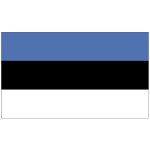 Estonia
Estonia




